The Only 50 Sailing Terms You'll Need To Know (With Pictures)
Ever get confused by all those odd sailing terms? Starboard, tack, jib… Well, no worries. In this article, I'll go over the most important sailing terms for beginners.
This is a great resource for beginning sailors that need an overview of the most important sailing terms without drowning in it . For a comprehensive list, check out this Wikipedia glossary of nautical terms . There are A LOT of nautical terms there. But no one in his or her right mind will read through that entire page (it has 48.434 words!). There are a lot of obscure words listed that no one really uses anyways. So in this article, I've filtered out the most important ones to get you up to speed quickly. I've also added pictures so you'll know what we're talking about.
Let's jump straight in. For the sake of good manners, I have categorized them by topic. If you are looking for a specific term, just ctrl+f your way directly to it.
Here are the only 50 sailing terms you'll need to know:
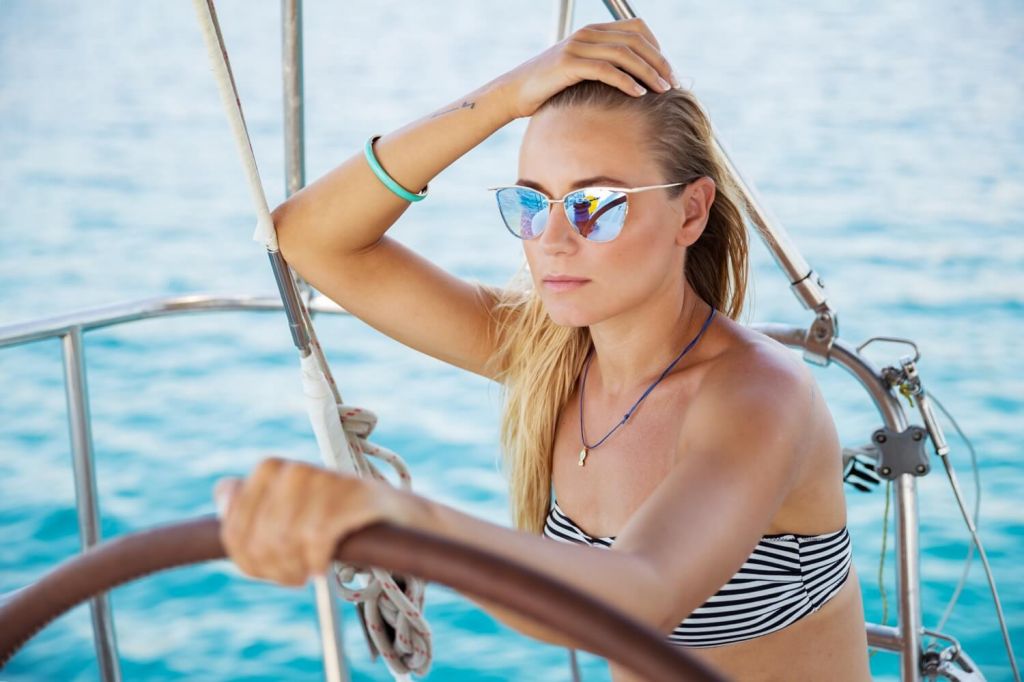

Orientation
Parts of the boat, parts related to sails, other terms.
...because it isn't as easy as 'left', 'right', 'front' and 'back'. No, no.
Port is the left side of the boat. It's as simple as that. I'm not entirely sure why don't they just call it 'left' these days. The name came to existence because centuries ago, you always docked your big boat with the harbor (port) being on the left side. And the word stuck with us till today.

Starboard is the right side of the boat. If in a car, you say 'look to your right', on a boat, you say 'look to the starboard'. Again, you might as well just call it 'right'. Oh, wait… you wouldn't seem as cool if you did. Alright, let's keep calling it starboard.
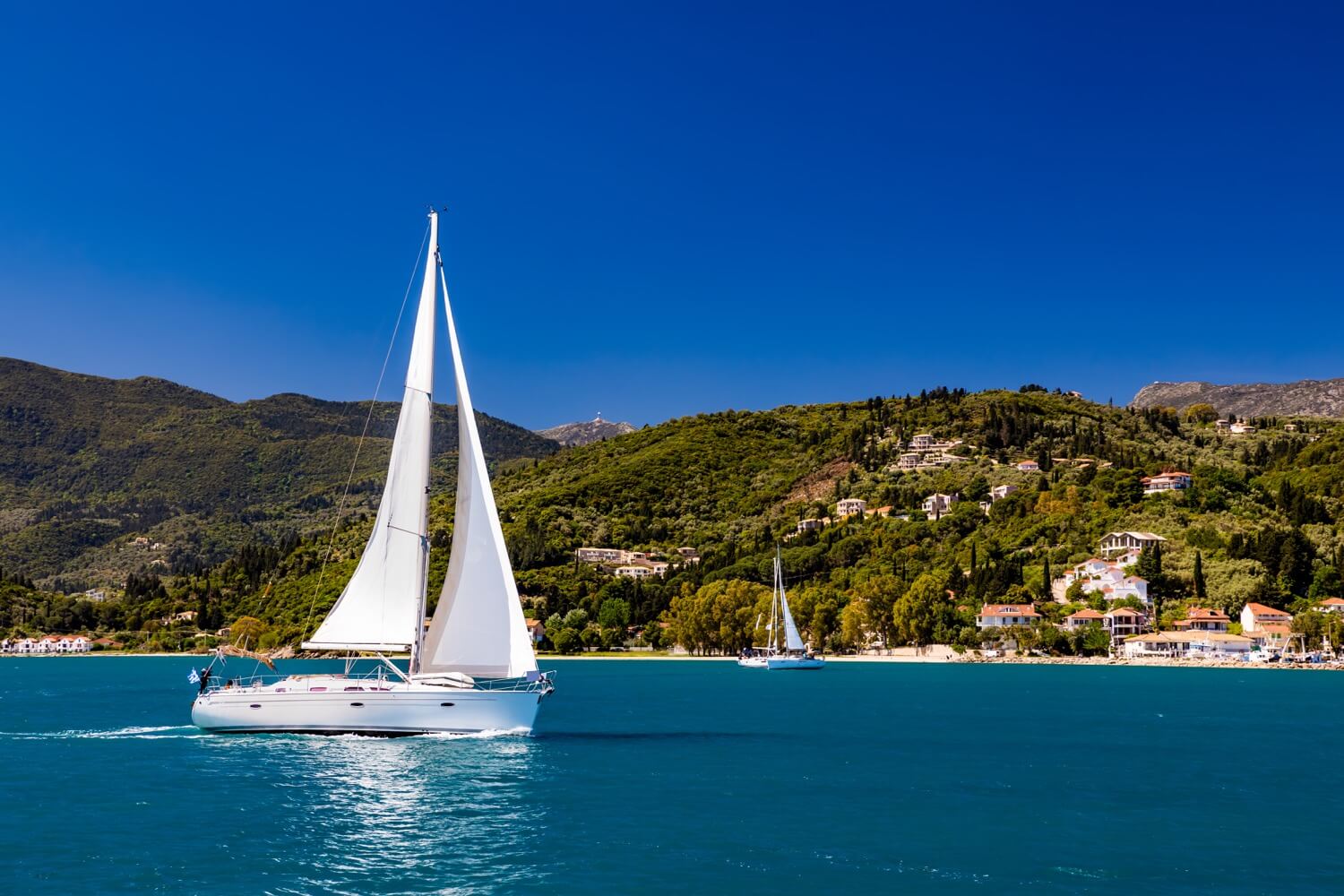
The bow is the front of the boat. The word likely comes from the Middle Dutch 'boech' (nowadays spelled 'boeg'). If you call it 'front' instead, you will get your message across just as well. But it won't get you the admiring looks from those around you.

Stern is the back of the boat. That is where you, as a captain, will spend most of your time. Whether you will force your crew to call it 'stern' or let them use the word 'back', like the dry land creatures they are, is up to you. After all, you are the captain.

The windward side of the boat is the side facing into the wind. So if the wind is coming from the right side, the windward side is on the right. Unlike some of the previous ones, this term actually makes sense - at times you need to talk about a direction not fixed in relation to the boat, but rather relative to the direction of the wind.
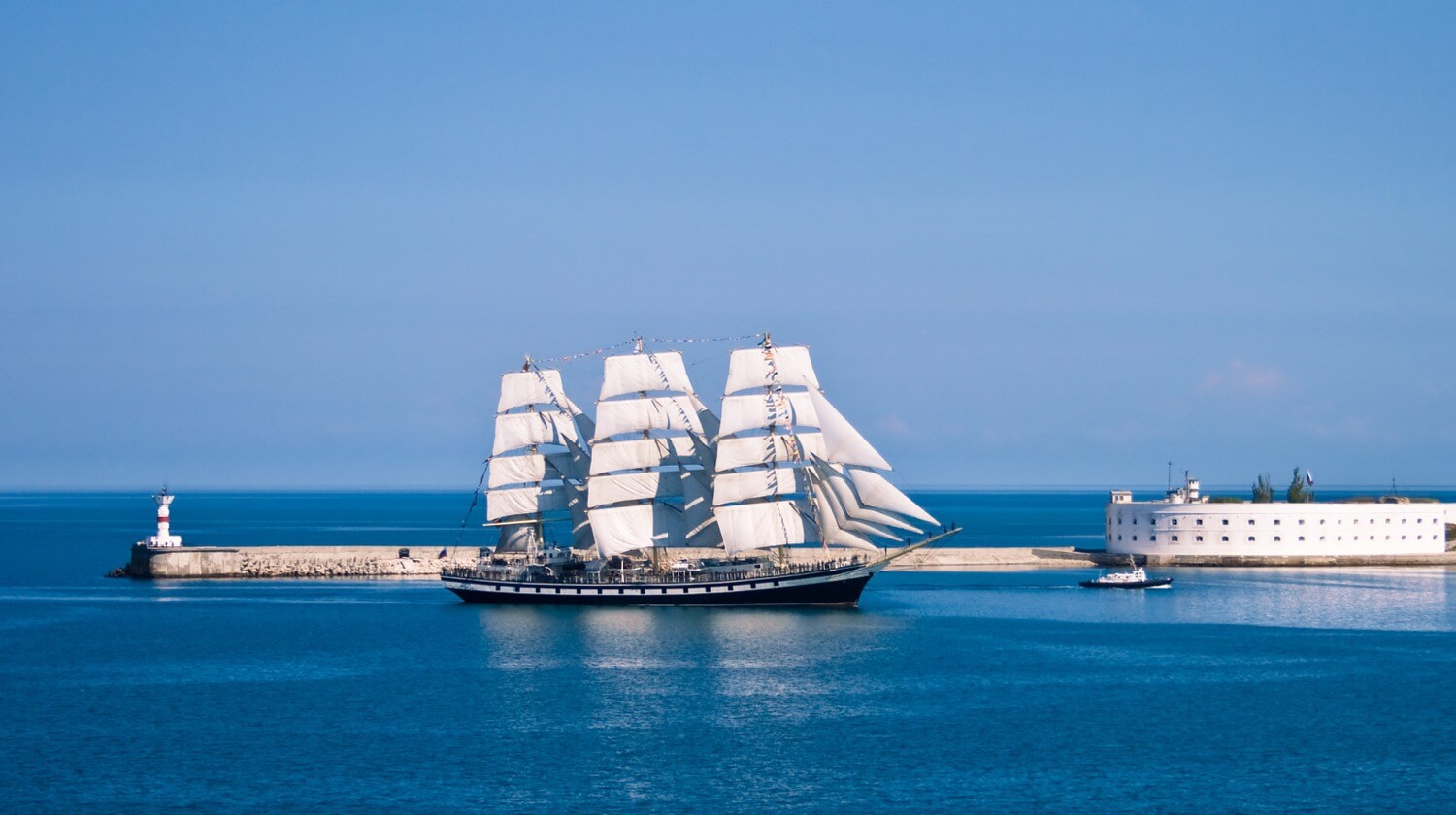
Leeward side of the boat is the lee side. If the wind is coming from the right side, the leeward side is on the left. Note that neither windward nor leeward specify the angle of the wind. Thus even if the wind was coming 20 degrees right off of the direction of the boat, so almost from the front, left would still be considered the leeward side.
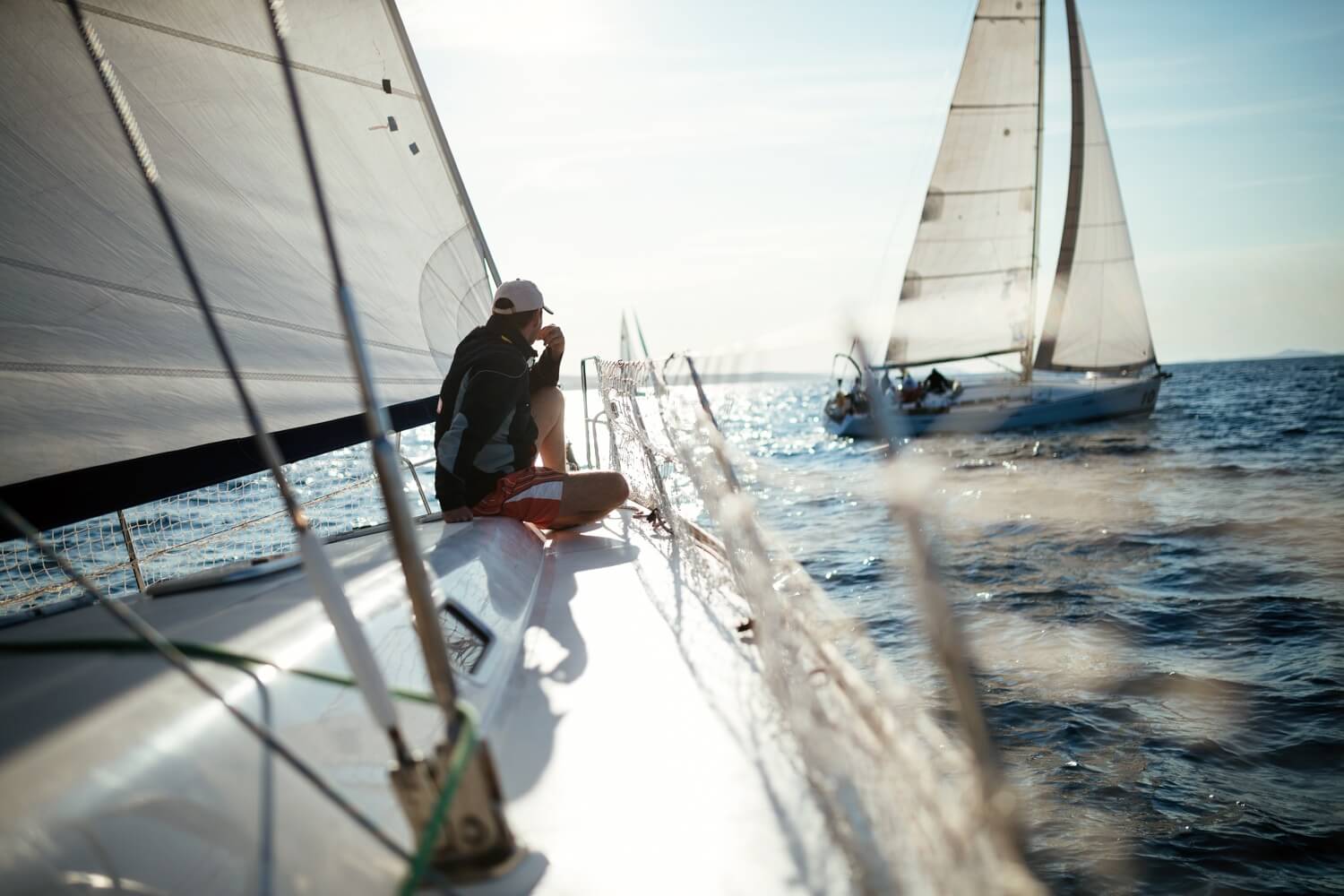
Since there are gadgets and parts on the boat that you won't see anywhere else, it only makes sense they all have their own special name. You want to know these because unlike the direction terms where you can do with 'left' and 'right', you don't want to call a tiller 'that stick thing back there'.
Helm is the boat's steering wheel. In this case, I forgive those who came up with this name, since it is shorter than 'steering wheel' and thus saves valuable time that we can spend on sailing. Though I doubt linguistic economy was the reason.

Tiller is the long stick that operates your boat's rudder. A steering stick, if you will. It has the same function as a helm does, but it is usually used on smaller boats, where a helm would take up too much space. Or by people who prefer it to a helm, since a tiller offers a bit more in terms of response.
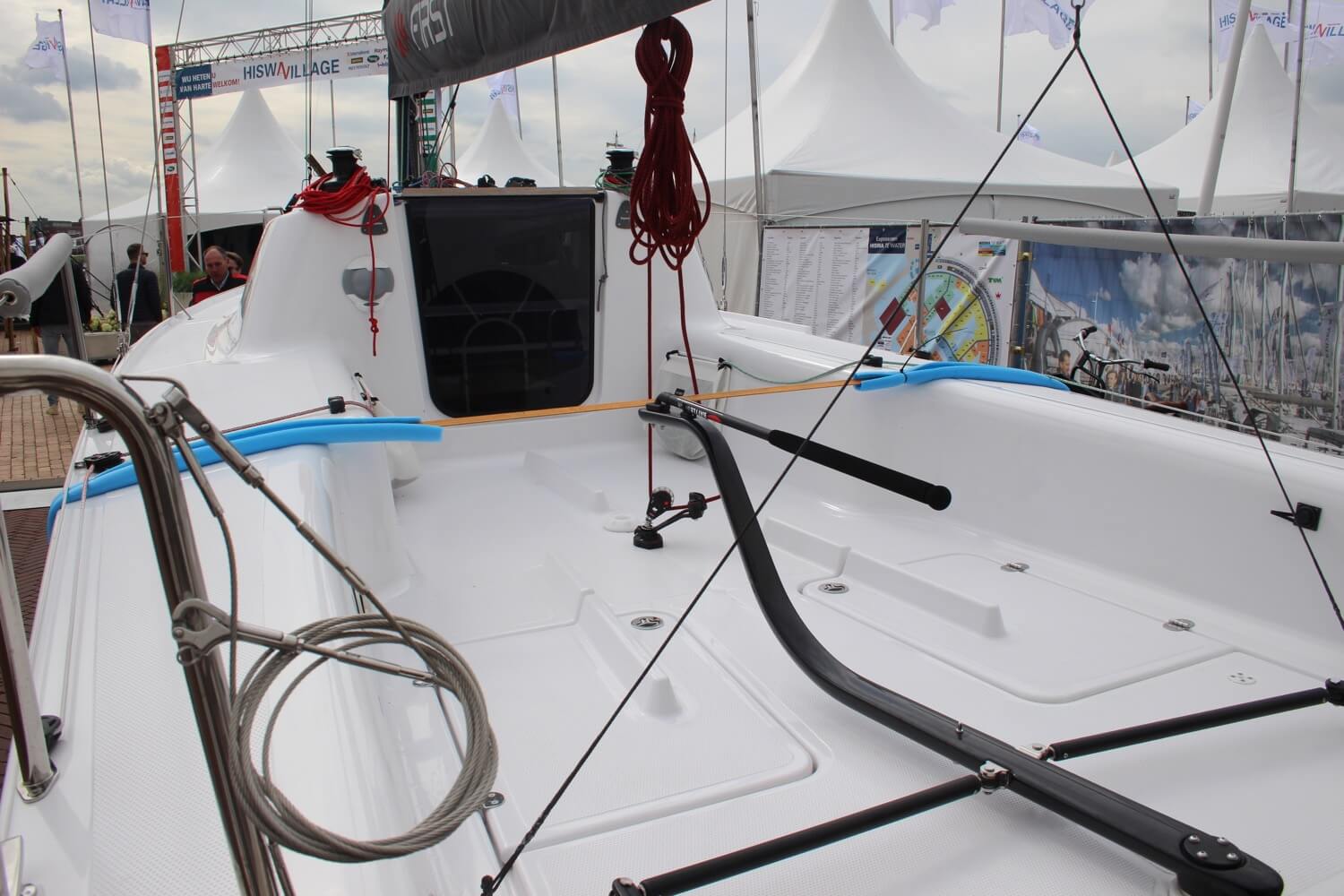
The rudder is the long, flat piece of metal or wood that sits underwater below the back of your boat. Connected to a tiller or a helm, it is used to control the direction of your exciting voyage. By the way, since aerodynamics and hydrodynamics work in similar ways, a plane is also operated by a rudder. Though that one isn't underwater. Hopefully.

Hull is the boat's body. Whatever the shape or size, whether opened on top (like a dinghy) or closed by a deck, (like a traditional sailboat) it's all called a hull. Structures sitting on top of the deck, like a deck salon or cabins, aren't considered a part of the hull anymore.

The keel is an underwater fin below the boat's belly. The sizes and shapes vary, sometimes it is relatively short and goes deep, (fin keel) sometimes it runs from the front all the way to the back (full keel or ballast keel). It is there mainly for stability and to help maintain forward direction when sailing.
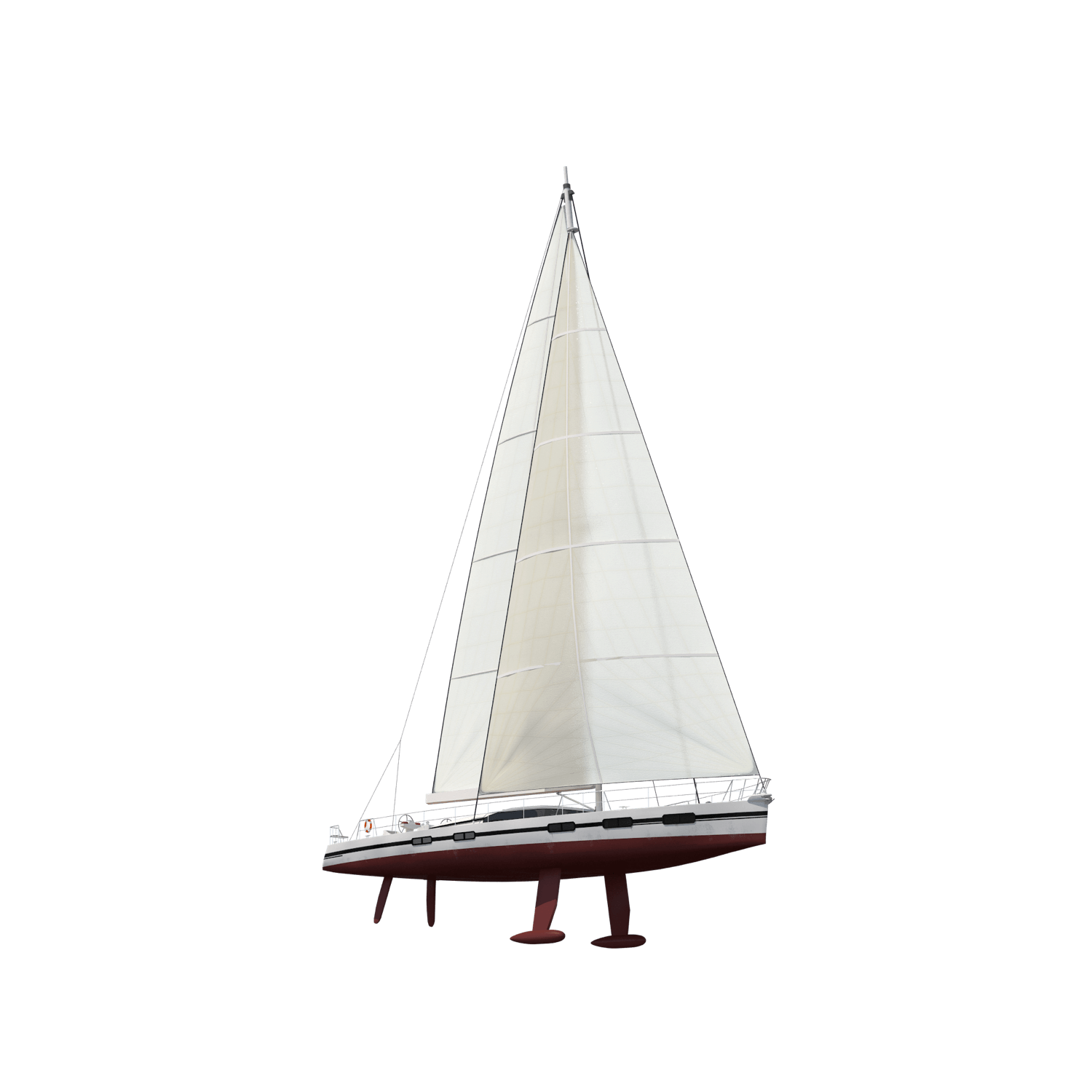
The cockpit is the area where a boat is operated from. On sailboats, it is usually in the back and it is an open area without a roof, though this varies. You will find the rudder control and winches there. In 'smaller' (below 70 ft or so) sailboats this area oftentimes doubles as a deck dining place with a table and seating.

The bimini is a sun roof or shade that is covers the cockpit, and is generally attached to a steel frame which runs over the cockpit.
This is where things tend to get confusing. There are a whole lot of parts and a whole lot of names for them. It pays off for you and your crew to know them though, as during the stormier moments, you all want to be on the same boat (ha, ha) linguistically, as every second counts.
Lines are ropes. Not much more to add here. I suppose a 'line' sounds a bit fancier than a 'rope'. One thing this article will teach you is that if there is the slightest crack in the wall of your boat, linguistic elitism will leak its way in.

This one is quite self-explanatory. The mainsail is the main, largest sail of the boat, attached to the mast on the side and the boom at the bottom. It has a triangular shape and serves as the most important sail, the first one you should get acquainted with if you are just starting out.
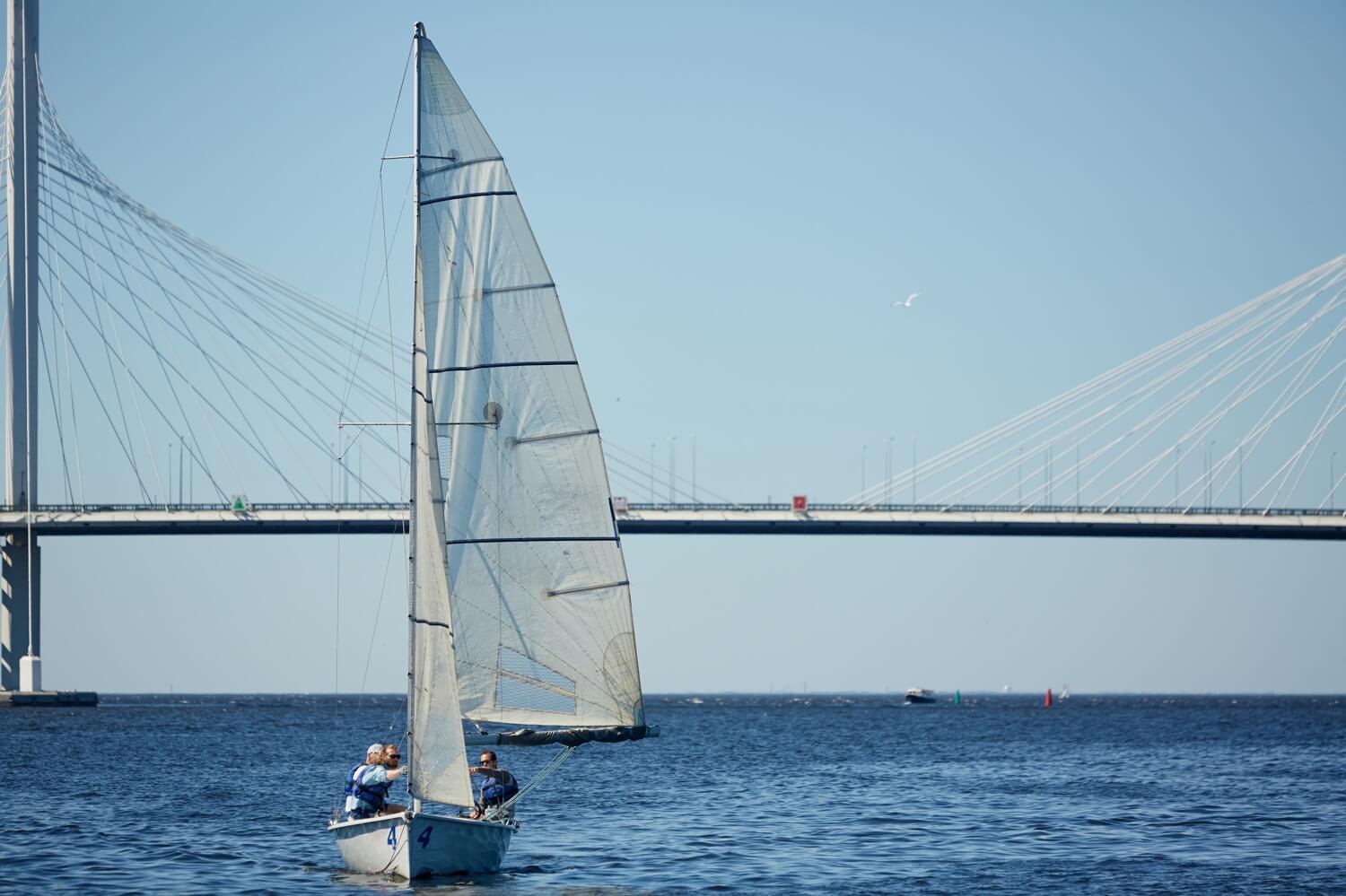
The jib is the front sail of your boat, sometimes also called the genoa. That is as long as you are sailing on the traditional sloop - the classical two sail setup you see the most often. The jib is wrapped around the line that goes from the top of your mast to the boat's bow.

Spinnaker is the third type of sail you are the most likely to encounter on your travels. It goes in front of your boat and has a half balloon or kite-like shape. This is because it is constructed specifically for sailing downwind. Its purpose is to grab as much backwind as it can and drag your boat forward. It is not attached to the boat most of the time like the mainsail or the jib, instead, it is stored separately and used only when needed.

The mast is the tall, vertical pole that goes from the floor of your salon, through the deck, meters above your boat. All the sails are attached to it, also radars and lights, giving sailboats radio and visual visibility far greater than that of equally sized motorboats. Take that, ya noisy stinkies!

The boom is the horizontal pole right above the deck, attached to the mast at the right angle. The bottom of the mainsail is attached to it, it is used to determine its shape and direction. It is also where the mainsail is often stored, folded and covered with a protective sheet. The boom is also among the top causes of injuries on a sailboat, as in certain winds it tends to swing with force powerful enough to knock a few grown men overboard. Stay away from its reach at all times when under sail.

The forestay is the cable going from the top of the mast to the very front of the bow. It is there to hold the mast in place. Sometimes you will find people refer to it as the 'headstay'. It is often made of steel, so it is safe to hold on to it when you are pretending to be Jack on the bow of the Titanic's, the boat hits a wave and you lose your balance.

This diagram is from our guide on sailboat parts , which I really recommend for beginners. It walks you through all the most important sailboat parts in normal words.
The backstay is the cable going from the top of the mast to the very back of the boat. In many cases it is doubled at the bottom, each end attached to one corner of the back of the boat so that they don't interfere with space and provide more stability for the mast. Just as with forestay, these are made of steel.
Shrouds are the cables going from the top of the mast to the left and right side of the boat. Sometimes there are four, two on each side. Together with forestay and backstay, they make sure your mast withstands all the forces exerted on it when the wind pushes the sails.
The foot of a sail is its bottom edge. If you imagine a sail as a triangle, the base is called the foot. You probably won't use this term while sailing, but when researching proper sail trim, it is likely you will stumble upon it.
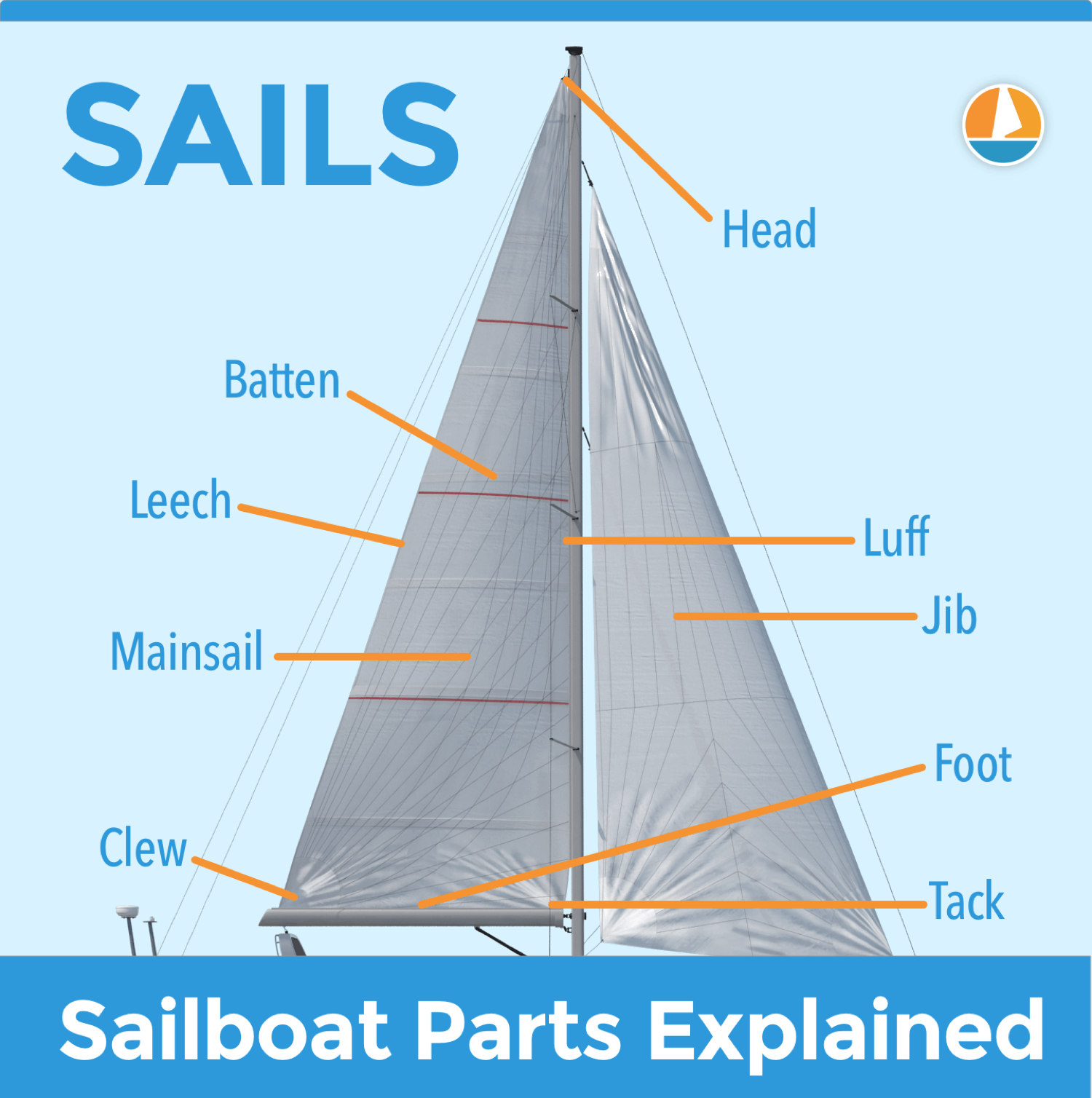
This diagram is again from our guide on sailboat parts , which I really recommend for beginners. If you're looking for a good starting point to learn your sailboat ins and outs, this article is perfect for you.
Leech of a sail is its back side edge. Thus it is the part closest to you when you are standing at the helm. Just as with the foot, this is a term quite often used when describing sail trimming techniques, since the shape of the leech determines the shape of the whole sail.
Luff of a sail is its front side edge. Thus the part the furthest from you when you are standing at the helm. For mainsail, it is the edge that is right next to the mast, for the foresail it is the edge right next to the forestay. Just as with foot and leech, the shape of these edges determines the overall shape of the sail so you will most likely encounter these terms in trimming lessons and tutorials.
The head of a sail is its top corner. On a traditional sloop, you will have the 'main head' and the 'jib head'. There is usually a reinforcing patch of some kind on these corners, as you will find a hole in them to which a line is attached.
It's also something else entirely, but more on that later ...
Halyard is the line attached to the sail head. On your boat, you will most likely have two. The 'main halyard' which is what you use to hoist your mainsail if it is folded on the boom, and the 'jib halyard' which holds the jib head up.
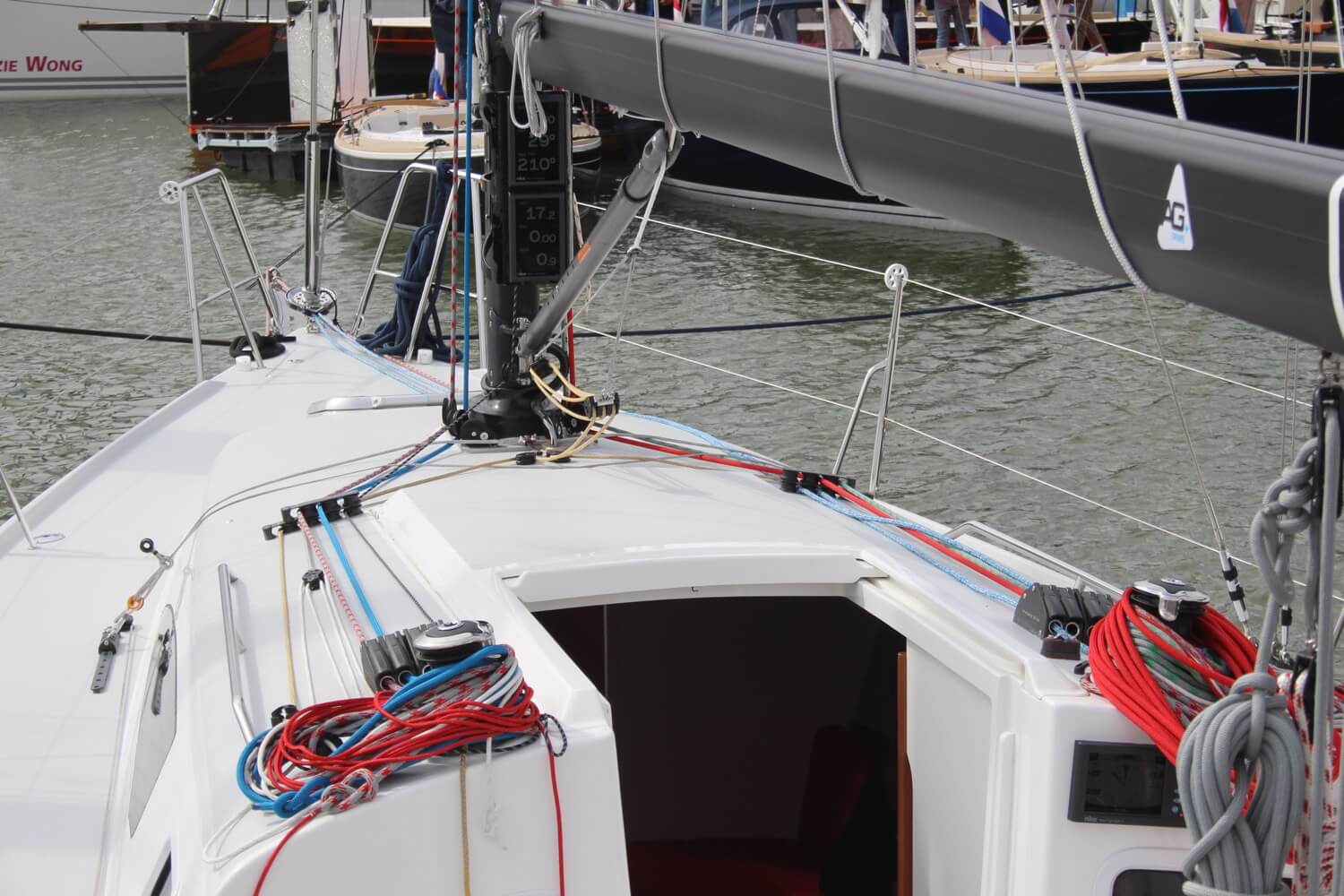
Clew of a sail is its back corner. The line attached to the 'main clew' will be used to hoist your mainsail if it is wrapped inside of the mast. The line attached to the 'jib clew' will be used to open the jib on most sailboats since jibs are most often wrapped around the luff.
Telltales are light, usually cotton or wool pieces of ropes attached to a sail, showing you the airflow around it. These are important because they help you determine if your trim is effective or not. Because of the material they are made of, you might sometimes encounter them being called 'woolies'.
Vang, or a 'boom vang' is a device pulling the boom down. This is important because it controls the tension of the mainsail, influencing its shape greatly. You won't find it on every boat though. Holiday cruisers often don't have it, as it is a piece of equipment focused on performance and thus not necessary for your average trip.
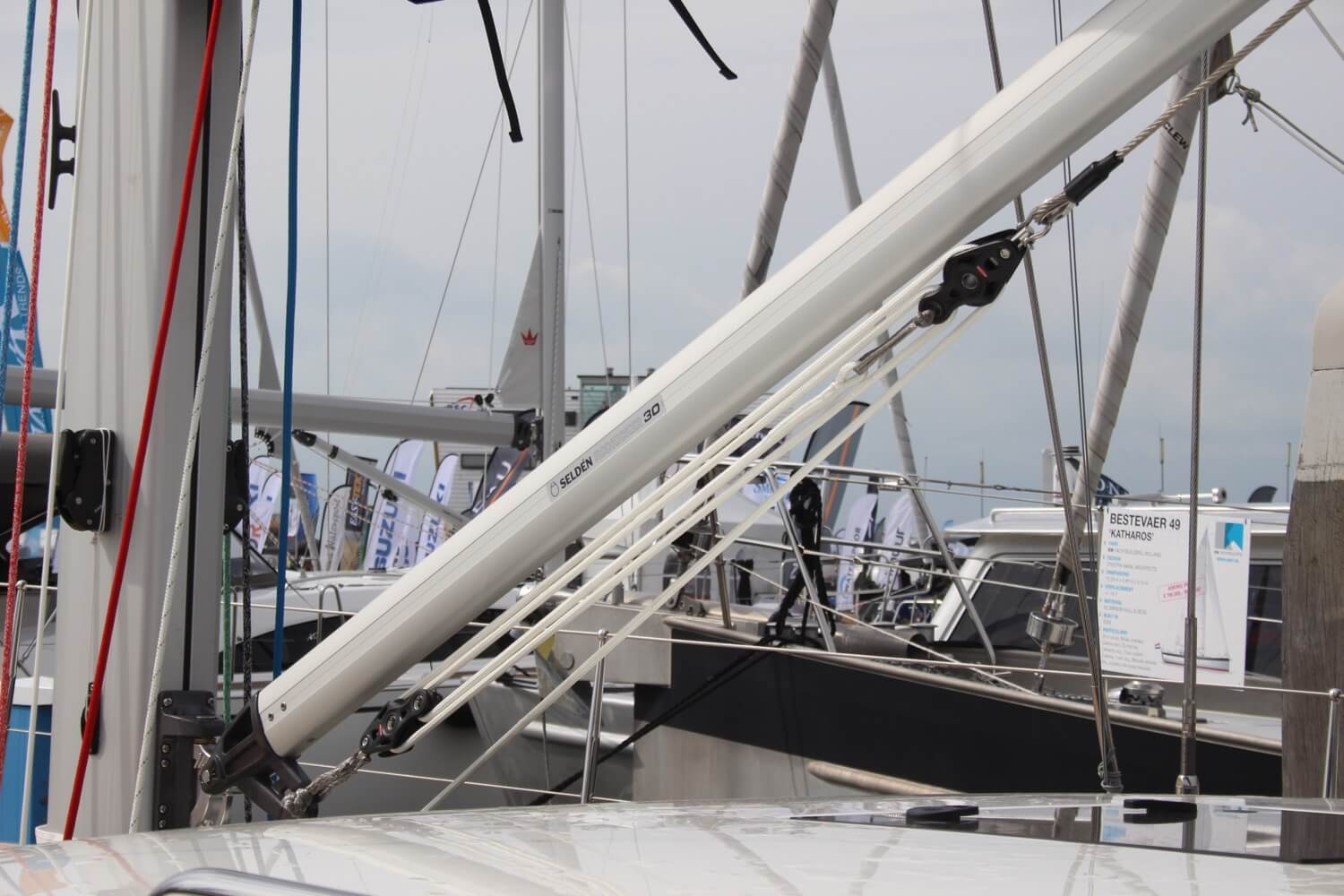
Topping Lift
The topping lift is a line that is attached to the aft (back) end of the boom and runs to the top of the mast. It supports the boom whenever you take down the mainsail.
Also referred to as a 'horse', the traveler is a side to side track to which the boom is attached, allowing the control of the extent to which the boom goes off the centerline. This is important especially if the wind is blowing from behind and you need to control the angle of the mainsheet.

Outhaul is the line attached to the mainsail or the jib clew, allowing the control of the foot tension. This is important for determining the sail shape - for instance in stronger winds, you want the foot to be more tense to achieve a more effective airflow as opposed to slower winds where you can allow the foot to arch more.
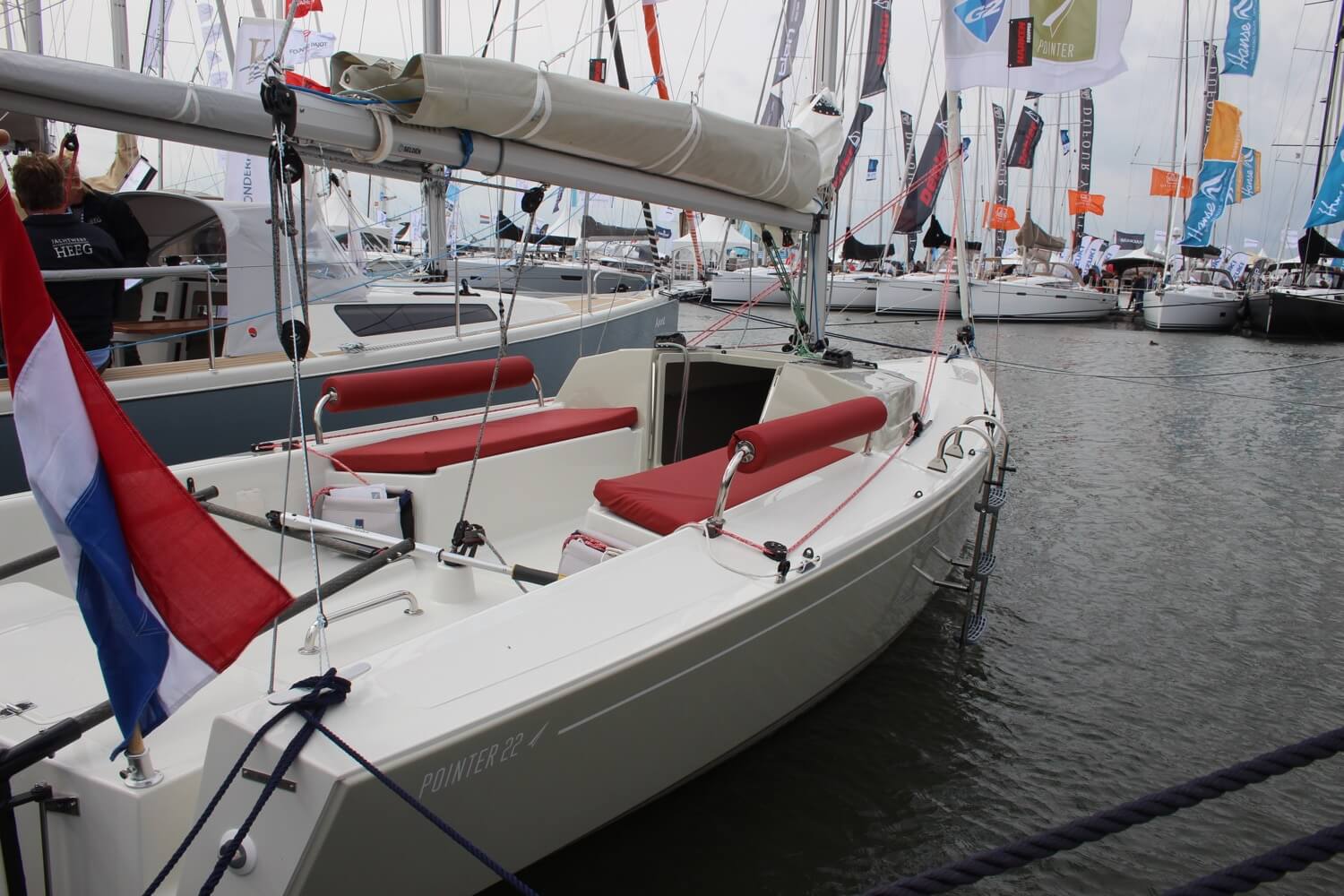
Reefing is reducing the sail area to lessen the power exerted on it by the wind. You may want to reef if the wind is getting too strong for your boat, or if it is changing too rapidly, as an overpowered boat is difficult to control. Fun fact: they say that when you feel you need to reef because the wind got too strong, it is already too late to reef.
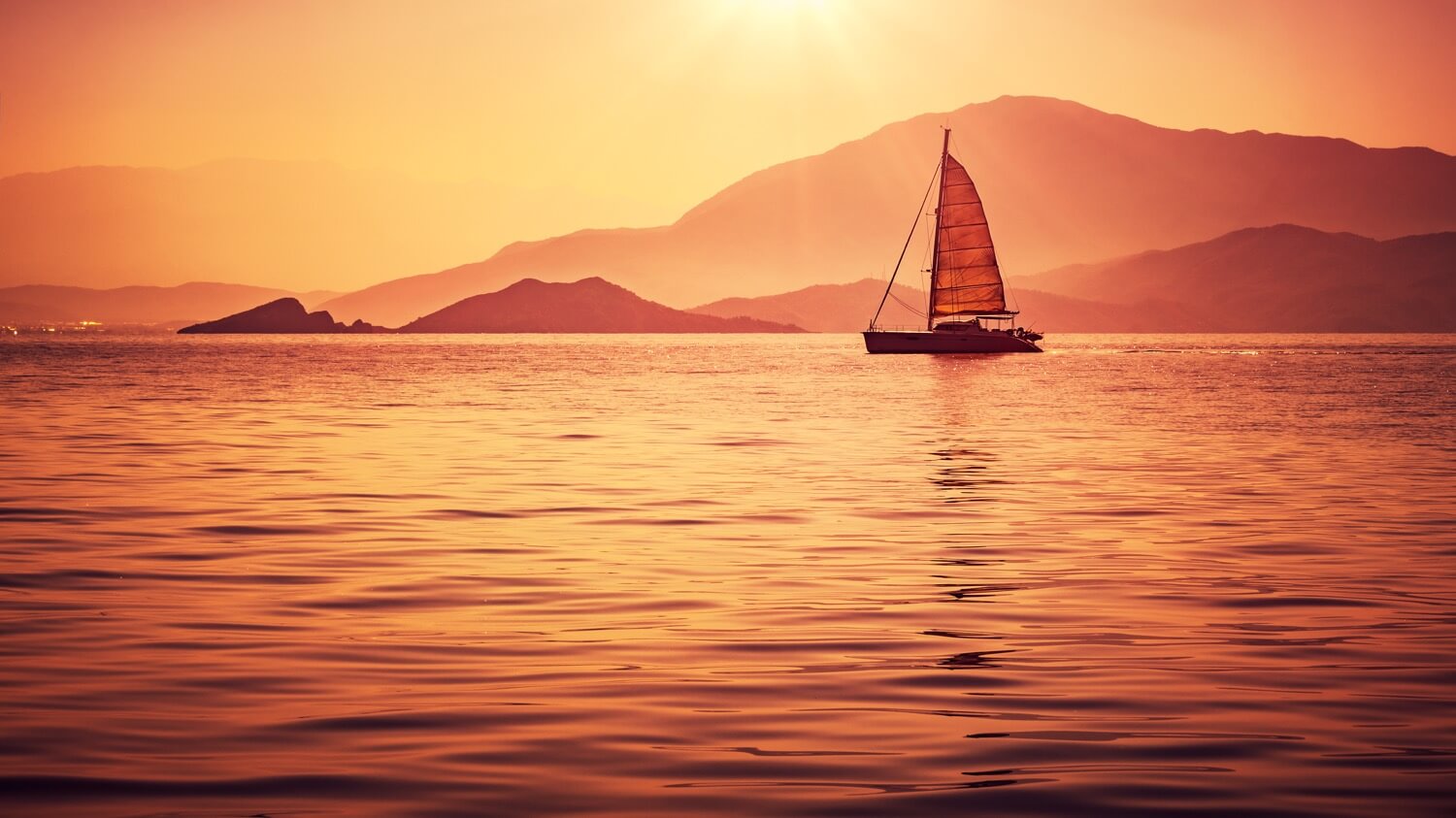
A batten is a slat placed horizontally in the body of the sail to support its shape. You will not find them on all sailboats, it is a performance-enhancing element that many cruisers lack. It helps tremendously as without it, sails tend to belly out and lose their shape under certain conditions.
The cleat is a piece of fitting where a line can be secured and immobilized, even if under great tension. It usually consists of two cogwheel-like pieces fastened close to each other, in the middle of which the rope is placed, unable to move thanks to friction. This type is great as it allows for a quick release. Sometimes though, it is a simple piece of metal or plastic where the rope is tied.
...and then there are all those things that just float around you when sailing, those little things that are the reason for you having to carry a dictionary in your pocket.
Fenders are bumpers allowing some contact with other boats or piers while docked, without scraping the paint. They are often balloon-shaped, made of rubber or some relatively soft material. They are usually attached to the boat's railing and you move them around as you need.

The beam is the width of the boat. Could be just called width, I know. The word comes from the fact that there are transverse reinforcing beams in the boat hull and deck. Next time you are choosing your charter boat for holidays, you will know what this attribute means.
True wind is the actual direction and speed of the wind. This is different than the apparent wind, which is wind direction and speed relative to the boat. Apparent wind is a combination of the true wind and the headwind, which is the wind the boat experiences solely by being in motion.
The berth is a sleeping space on a boat. Thus if a boat has eight berths, it means eight people can comfortably sleep on it. Note that this often includes the salon couches, so a berth is not necessarily a space in an actual bed for one person.
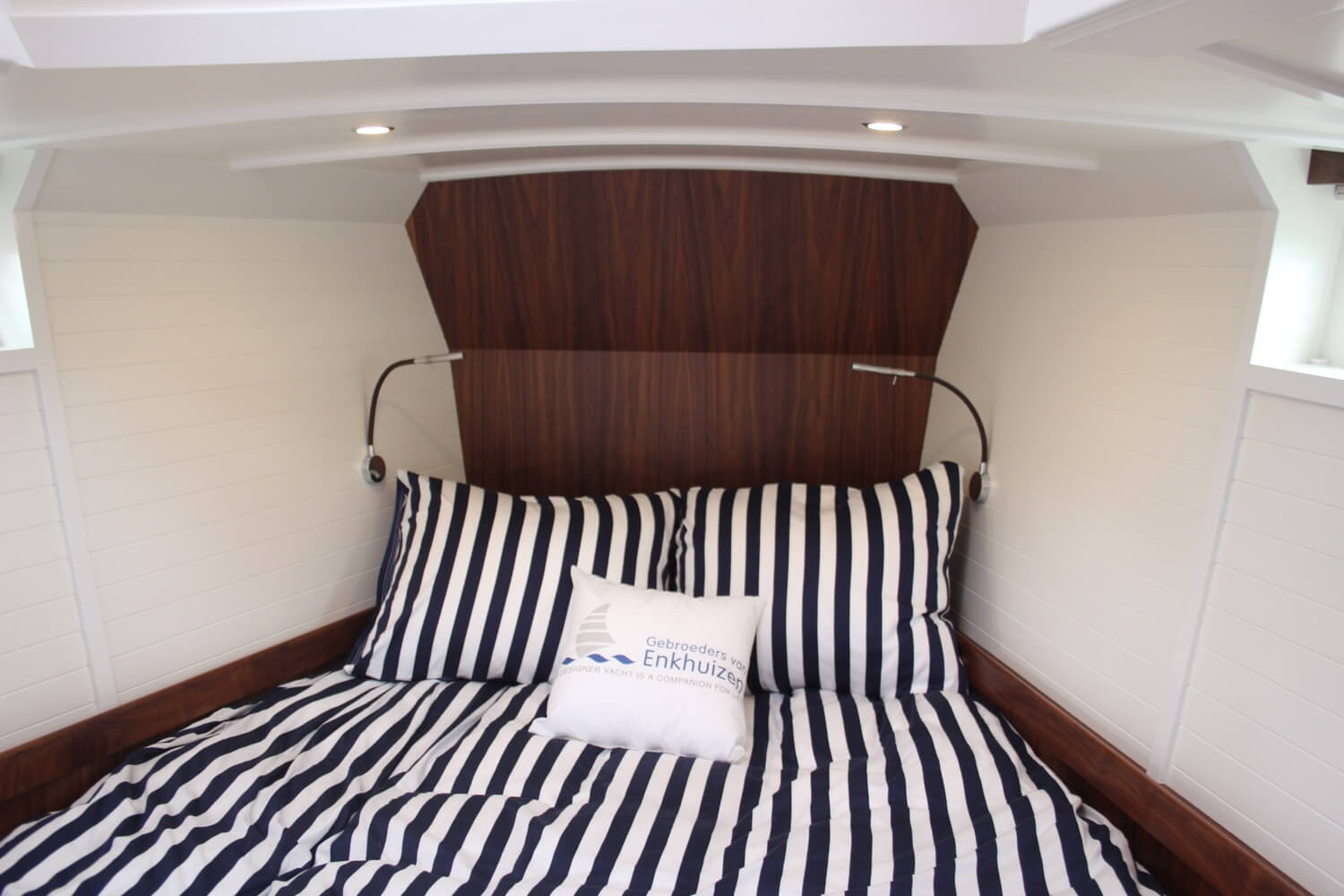
Boat's draft is the distance from the water surface to the deepest point of the boat. In other words, the draft is the minimum water depth you can go to and not scrape your hull or keel. Better double this number when sailing, just to be safe, as hitting the seabed can have disastrous consequences.
Tacking is zig-zagging towards your destination. It is necessary in case your destination is in the direction of the wind since sailboats can not go directly into it. Since the closest to the wind direction you can sail is around 45 degrees, you have to change direction left and right from your desired course.
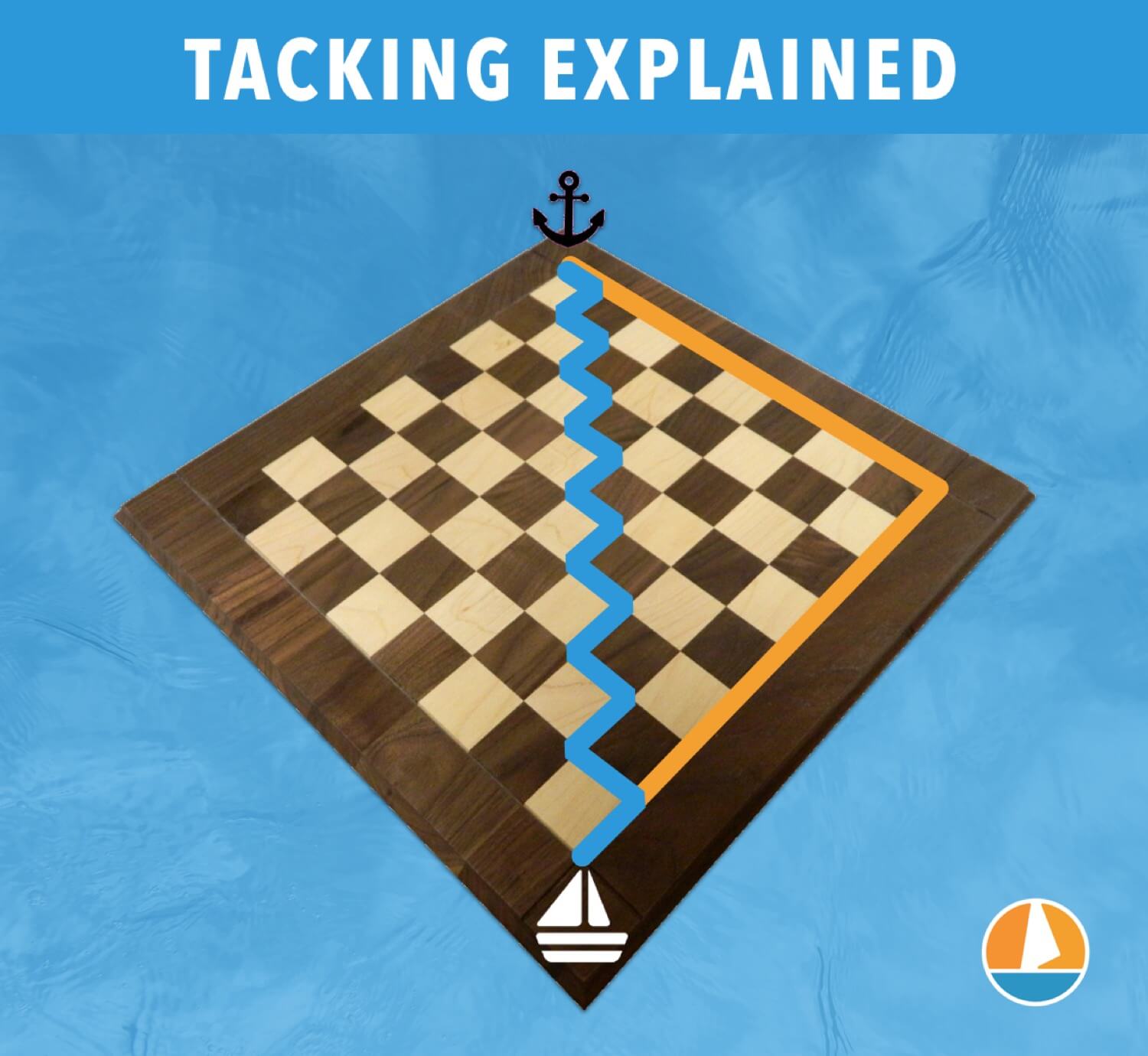
This diagram is from our guide on sailing into the wind for beginners , which explains in 7 simple steps how to get good upwind sailing performance.
Bareboat is a boat without a skipper. You will encounter this term in boat charters and it means you rent the boat without any crew, thus you need to operate it yourself. It is the best way to sail unless you enjoy living in close proximity to a sea wolf who you also have to feed.
The chart is a nautical map. It differs from classical maps as it depicts information relevant for a sailor - water depth, navigational hazards, seabed material, anchorages and so on. Formerly made of paper, these days made of ones and zeros. As is everything in this digital world.
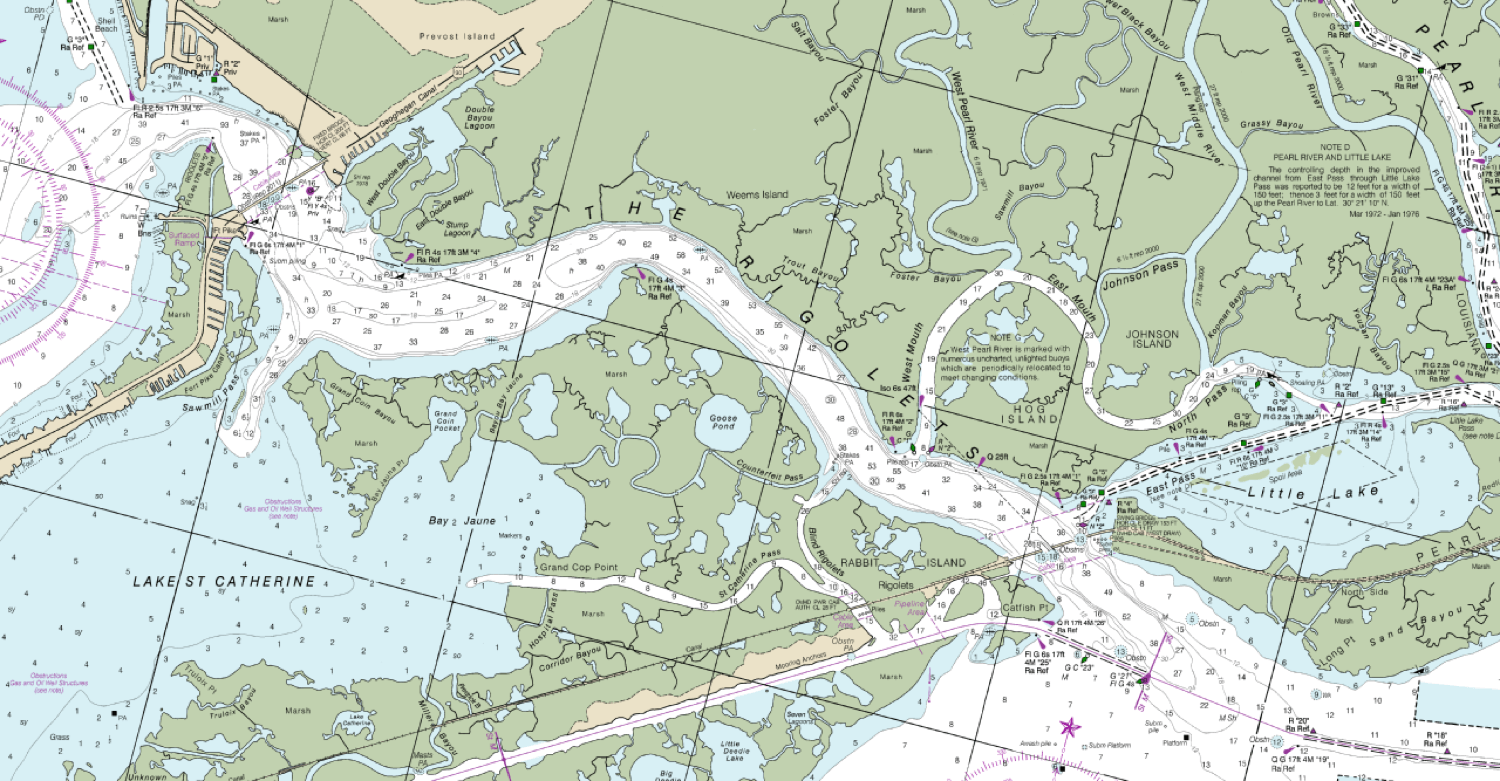
We have a guide that explains all the different chart types clearly for beginners - read it here .
Galley on a boat is its kitchen. Also a medieval warship, but if you find this term in a boat's description, war is not likely what they have in mind.

Heads on a boat is the bathroom. Though in all my years of sailing I have never ever heard anybody use this term instead of a 'bathroom'. I suppose saying that you are going to use the heads just sounds odd.

A knot is the unit of speed of boats. It is equal to one nautical mile per hour. That is 1.852 kilometers per hour or 1.5078 miles per hour. Though a bit confusing and annoying at times, you will have to get used to this, since most of your boat's instruments will use this unit. It dates all the way back to the seventeenth century when boat's speed was measured with a rope with knots tied on it.

Mooring is attaching the boat to a buoy that is anchored to the seabed. This is usually a cheaper option to docking in a marina. It also means larger space between the boats anchored in the same area, thus more privacy. Though you will have to use your dinghy to get to shore instead of just stepping on the pier directly from your deck.

A salon on a boat is its living room. On smaller boats, it is usually in the same room as the boat's kitchen and the captain's corner with navigation instruments.

A skipper is the captain of a sailboat. If you ask me, the word 'captain' is much better than a skipper, which to me sounds like a small boy who sits on the shore the whole day, skipping stones. But hey, who am I to talk.
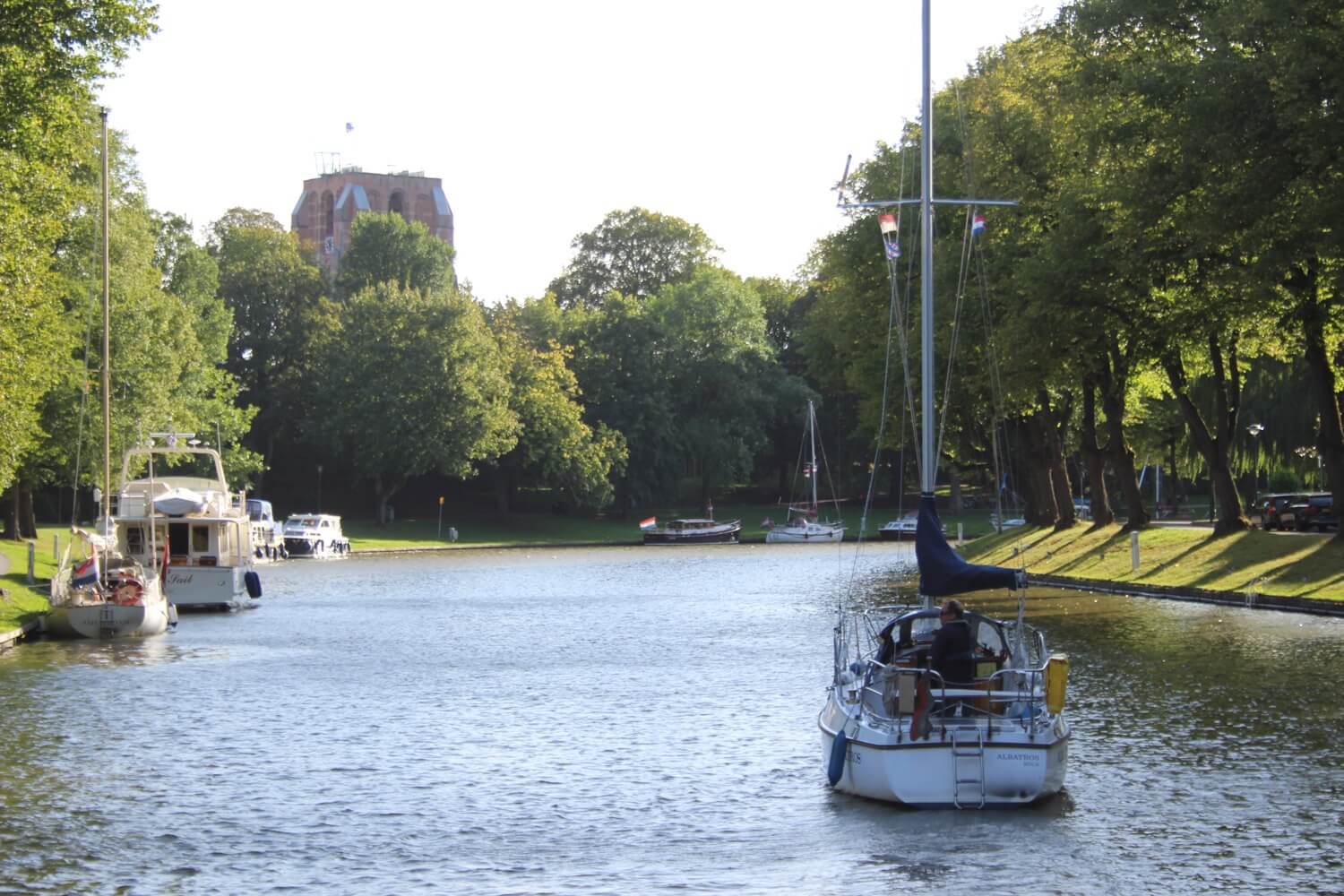
A monohull is a classical boat with a single hull. A boat with two hulls is called a catamaran, or a 'cat'. Although rare, there are also trimarans, boats with three hulls. Multihulls with four or more hulls do happen but they are an unnecessary freak of nature.
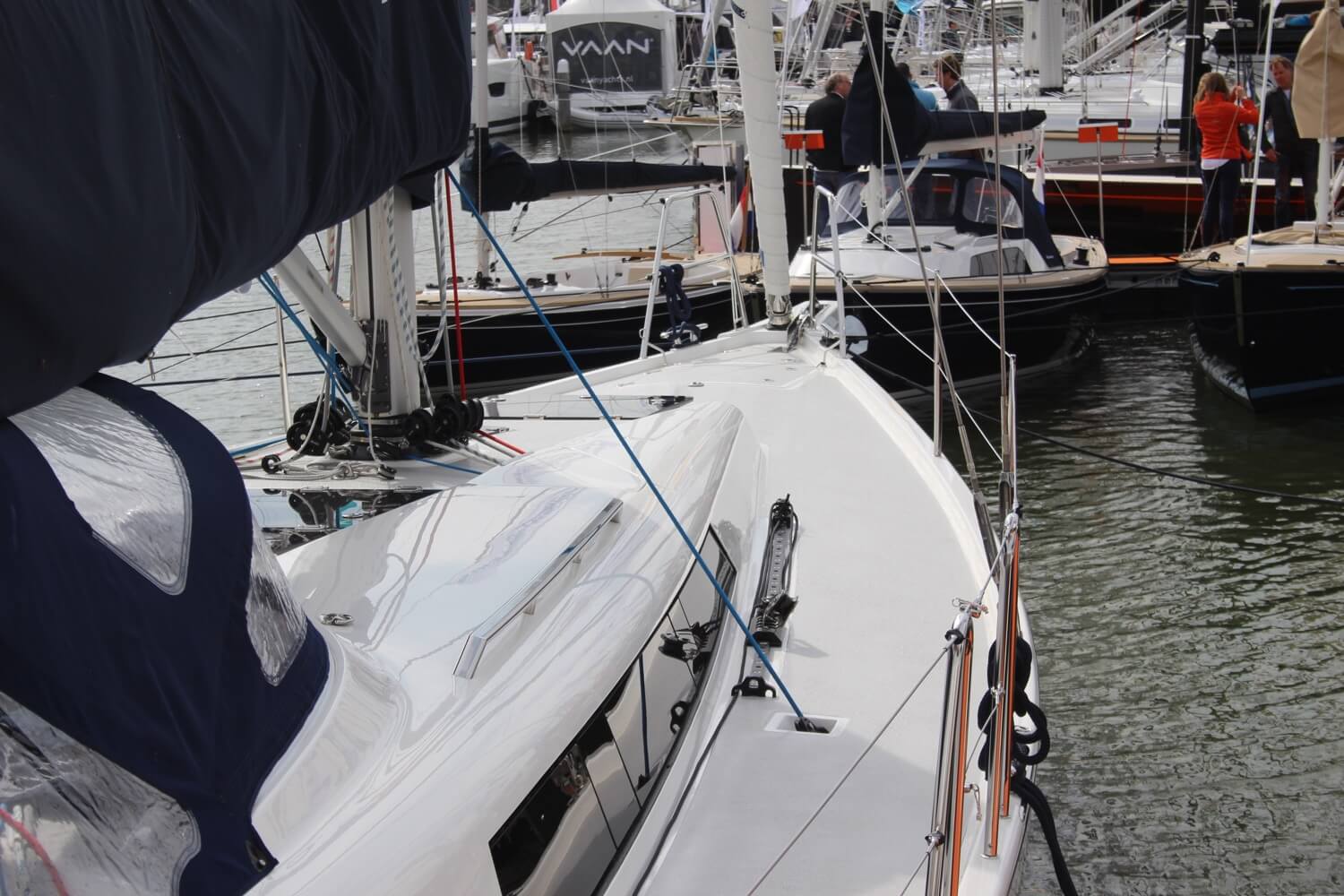
So there you have it. Fifty sailing terms you will encounter the most when traveling or learning. I know you might think some of them are a bit unnecessary since they have a perfectly fine 'real world' equivalent. I agree. But until the tradition changes, you might want to get some of these under your skin.
A boat's freeboard is the distance from the upper deck to the waterline. Classic yachts have low freeboards, so they appear to lay deeper in the water, as opposed to more modern yachts, which have a higher freeboard. It literally means 'free-board' : the amount of visible board.
The lunch hook is a light anchor setup that is used to moor small yachts temporarily. It typically uses a lightweight anchor on a short scope that takes little effort to set. The lunch hook is only used when the crew is on board and will be monitoring the anchor.
In naval architecture and ship design: “Head” = WC = Bathroom. A toilet is still a toilet. The toilet is in the head. In olden day, the toilet was a hole in the head.
Hi Rich, you’re absolutely right. I’ve corrected the error. Thanks for pointing it out.
A nautical mile is one minute of a degree, so if you travel 60 nautical miles that means you have gone 1 degree around the “globe”. (Note: arc length not actual length.) This is the original definition. As such the average was agreed upon and the lengths given a standardization. Which you mentioned.
As such 1 knot is to travel one nautical mile in an hour.
Also 1.5078. I think you made a mistake as it should be 1.1508 miles to a nautical mile.
Thanks for the information. Sorry about being a pedantic mathematics teacher.
So, where is the “nautical mile” calculated from, the equator or one of the tropic lines?
Just to clarify a nautical mile. If you draw an imaginary line from the North Pole or South Pole to the center of the Earth and draw another line from the center of the Earth to any point on the equator, it forms a right angle, which is 90 degrees. This equates to latitude. The equator is 0 degrees and the poles are 90 degrees. Your latitude is the angle that you are north or south of the equator. Each degree of latitude is divided into 60 minutes. A minute of latitude is the same distance matter where you are on Earth. It is 6,076 feet. This is the length of a nautical mile. A statute mile is 5,280 feet, so a nautical mile is 1.1508 statute miles.
Thank you very clear and well explained. Hopefully I’ll remember The Fifty
KöhnSharkösz
Really? No gunwale? No transom? Those or basic terms to the Washington State Boater Education Card required to operate watercraft here. Definitely more of a “need to know” than bimini.
Thank you, those definitions and explanations were clear, thorough, and helpful. I’m really glad I found my way (somehow) to your webpage.
Leave a comment
You may also like, 17 sailboat types explained: how to recognize them.
Ever wondered what type of sailboat you're looking at? Identifying sailboats isn't hard, you just have to know what to look for. In this article, I'll help you.

How Much Sailboats Cost On Average (380+ Prices Compared)

The Ultimate Guide to Sail Types and Rigs (with Pictures)
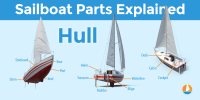
Sailboat Parts Explained: Illustrated Guide (with Diagrams)

How To Live On a Boat For Free: How I'd Do It

100 Basic Yachting & Sailing Terms You Need To Know
- No Comments
Yachting is an increasingly popular activity that involves exploring and enjoying bodies of water aboard sailboats or motorboats. It doesn’t matter if you’re a seasoned sailor or brand-new to the sport; knowing the language used in yachting is crucial for efficient communication and secure navigation. We’ll look at some of the most often used terminology and expressions in the world of yachting in this list of 100 fundamental yachting terms, from boat parts to navigation and safety gear, and more. This list is an excellent place to start whether you’re seeking to brush up on your yachting terminology or are just beginning into the sport.
Aft – Toward the back of the boat
Anchor – A heavy object used to keep a boat in place
Ballast – Weight added to the bottom of a boat to improve stability
Beam – The width of a boat at its widest point
Bilge – The lowest point inside the boat where water collects
Bimini – A type of sunshade or canopy used on boats

Bow – The front of a boat
Buoy – A floating marker used to mark channels, hazards or anchorages
Cabin – An enclosed space on a boat used for sleeping and living quarters
Capsize – To tip over or turn upside down
Cleat – A metal or plastic fitting used to secure ropes or lines to the boat
Cockpit – The open area in the back of the boat where the steering and controls are located
Compass – A navigational tool used to determine the direction
Crew – The people who work on a boat, assisting with sailing or other duties
Deck – The top surface of a boat where people can stand or walk
Dock – A platform or structure where boats can be tied up or moored
Draft – The depth of a boat below the waterline
Fender – A cushion or bumper used to protect the boat from damage when docking
Flag – A piece of fabric used to signal or communicate on a boat
Galley – The kitchen area on a boat
Genoa – A type of sail that is used for cruising and racing
GPS – Global Positioning System, a navigational system that uses satellites to determine the location
Halyard – A rope or line used to hoist or lower a sail
Hatch – An opening in the deck or cabin of a boat
Head – The bathroom on a boat
Hull – The main body of the boat, typically made of fiberglass or wood
Jib – A small triangular sail located forward of the mast
Keel – A fin-shaped object located under the boat that provides stability and helps prevent drifting
Knot – A measure of speed equal to one nautical mile per hour
Lanyard – A short cord or rope used to secure equipment or gear on a boat
Latitude – A measure of distance north or south of the equator
Leeward – The side of the boat sheltered from the wind
Lifeline – A line or rope used to provide safety and support on the deck of a boat
Log – A device used to measure speed and distance traveled
Mast – A vertical pole or spar that supports the sails
Mooring – The process of securing a boat to a dock or anchor
Nautical – Relating to or involving ships, sailors, or navigation on water
Navigation – The process of planning and controlling the course of a boat
Oar – A long pole with a flat blade used for rowing a boat
Outboard – A motor located on the outside of the boat
Port – The left side of a boat when facing forward
Propeller – A device that uses rotating blades to provide forward motion to a boat
Pulpit – A railing or fence located on the bow of the boat
Rudder – A flat object located at the back of the boat used to steer
Sail – A piece of fabric used to catch the wind and propel the boat
Sailing is the practice of using the wind to power a vessel through the water
Sheet – A line or rope used to control the angle of the sails
Skipper – The person in charge of operating a boat
Stern – The back of the boat
Tack – The direction of a boat when it is sailing upwind
Throttle – The control used to increase or decrease engine speed
Tiller – A handle or lever used to steer a boat
Transom – The flat, vertical surface at the back of the boat where the outboard motor is mounted
Trim – The adjustment of the sails and other equipment to optimize performance
Wake – The waves created by a boat as it moves through the water
Windward – The side of the boat facing into the wind
Winch – A device used to pull or hoist heavy objects on a boat
Yacht – A larger, more luxurious type of boat typically used for pleasure cruising
Bilge pump – A device used to pump water out of the bilge
Boom – The horizontal pole or spar that extends from the mast to support the bottom of the sail
Bowline – A knot used to secure a line to a fixed object
Cam cleat – A device used to secure a line under tension
Catamaran – A type of boat with two parallel hulls
Centerboard – A movable fin located underneath the boat that helps improve stability and maneuverability
Chafe – The wearing away or damage to a rope or line caused by friction against another surface
Clew – The lower corner of a sail
Current – The flow of water in a particular direction
Dinghy – A small boat used to transport people or supplies to and from shore
Fairlead – A device used to guide a line or rope in a particular direction
Flotation device – A piece of equipment used to keep a person afloat in the water
Forestay – The wire or rope that supports the mast at the front of the boat
Gaff – A spar used to support the upper edge of a sail
Headway – The forward motion of a boat
Inboard – A motor located inside the boat
Jibsheet – The line or rope used to control the jib sail
Keelboat – A type of sailboat with a fixed keel for stability and maneuverability
Luff – The forward edge of a sail
Masthead – The top of the mast where the highest sails are attached
Navigation lights – Lights used to signal other boats of the position and direction of a boat at night
Outhaul – The line or rope used to control the tension of the bottom of the sail
Planing – The state of a boat when it is moving quickly across the water and partially out of the water
Powerboat – A type of boat that is powered by an engine rather than sails
Ratchet block – A device used to reduce the effort required to pull a line under tension
Reefing – The process of reducing the size of the sails in high wind conditions
Rigging – The system of ropes and wires used to support and control the sails and mast
Rudderpost – The vertical post or shaft that the rudder is attached to
Scow – A type of sailboat with a flat bottom and squared-off ends
Shackle – A metal fitting used to connect two pieces of rope or chain
Spinnaker – A large, lightweight sail used to catch the wind when sailing down
wind 90. Spreaders – The horizontal struts on a mast that help to support and spread the shrouds
Standing rigging – The fixed parts of a boat’s rigging system, such as the mast and shrouds
Stern light – A white light on the back of a boat used to signal other boats at night
Stowaway – A person who hides on a boat in order to travel without permission
Tiller extension – A device used to extend the length of the tiller to make steering easier
Topside – The upper part of a boat, above the waterline
Transom door – A door in the back of a boat that provides access to the water
Traveler – A device used to move the mainsail along the boom
Waterline – The level at which a boat floats in the water
Winch handle – A handle used to turn winches to control the sails and lines
Yawl – A type of sailboat with two masts, the smaller of which is located aft of the rudder post.
Leave a Review Cancel reply
You must be logged in to post a comment.
You may also like
Sailing spots.
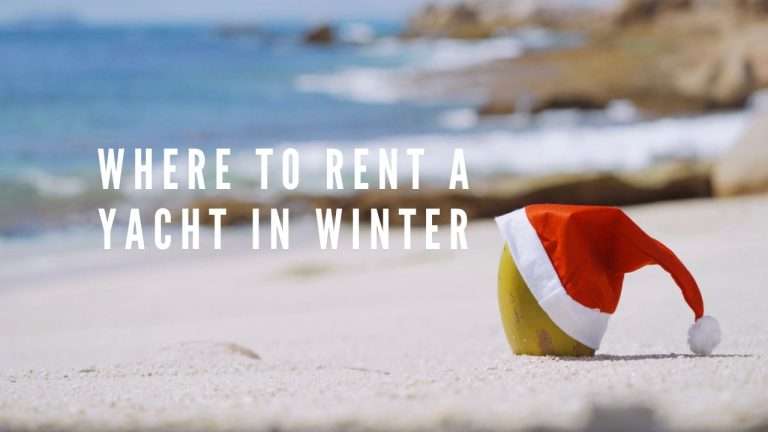
Where to Rent a Yacht in Winter: An Expert’s Guide

A Yachter’s Guide to Australian Customs and Immigration Procedures
Yachting basics.

When to Change Your Anchor Chain and How to Choose the Right One
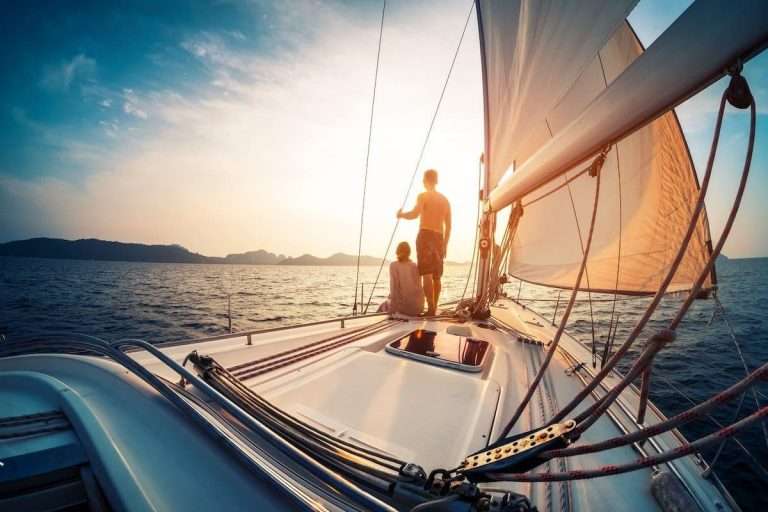
Sailing for beginners – 10 Questions and Concerns
Sailing routes.

Sailing Route in Spain: from Barcelona along the Costa Brava

Sailing Route in Thailand from Phuket
Yacht events.
No listings were found matching your selection. Something missing? Why not add a listing? .
Sailing News

International Charter Expo (ICE) 2023: Get Ready for the Ultimate Yacht Charter Event!

Navigating 2023: A Calendar of the Year’s Remaining Major Sailing Races and Regattas
Faces in yachting.

Laura Dekker: The Youngest Circumnavigator – A Voyage of Resilience and Dreams

John F. Kennedy: The Yachtsman President
Boat reviews.

| Sailing Click - search best yacht rental deals worldwide, discover new sailing destinations, find new yacht marinas. |
- TOP Charter Deals (updated)
- Advertising and Promotion
- Privacy Policy
- Cookie Policy
Please note that some links on our site are affiliate links. This means we may earn a commission at no extra cost to you if you click on them and make a purchase. We recommend products because we believe they add value, not because of the commission we receive. Your support helps keep our site running. If you have questions, please reach out to us.
Privacy Overview
| Cookie | Duration | Description |
|---|---|---|
| cookielawinfo-checkbox-analytics | 11 months | This cookie is set by GDPR Cookie Consent plugin. The cookie is used to store the user consent for the cookies in the category "Analytics". |
| cookielawinfo-checkbox-analytics | 11 months | This cookie is set by GDPR Cookie Consent plugin. The cookie is used to store the user consent for the cookies in the category "Analytics". |
| cookielawinfo-checkbox-functional | 11 months | The cookie is set by GDPR cookie consent to record the user consent for the cookies in the category "Functional". |
| cookielawinfo-checkbox-functional | 11 months | The cookie is set by GDPR cookie consent to record the user consent for the cookies in the category "Functional". |
| cookielawinfo-checkbox-necessary | 11 months | This cookie is set by GDPR Cookie Consent plugin. The cookies is used to store the user consent for the cookies in the category "Necessary". |
| cookielawinfo-checkbox-others | 11 months | This cookie is set by GDPR Cookie Consent plugin. The cookie is used to store the user consent for the cookies in the category "Other. |
| cookielawinfo-checkbox-others | 11 months | This cookie is set by GDPR Cookie Consent plugin. The cookie is used to store the user consent for the cookies in the category "Other. |
| cookielawinfo-checkbox-performance | 11 months | This cookie is set by GDPR Cookie Consent plugin. The cookie is used to store the user consent for the cookies in the category "Performance". |
| cookielawinfo-checkbox-performance | 11 months | This cookie is set by GDPR Cookie Consent plugin. The cookie is used to store the user consent for the cookies in the category "Performance". |
| viewed_cookie_policy | 11 months | The cookie is set by the GDPR Cookie Consent plugin and is used to store whether or not user has consented to the use of cookies. It does not store any personal data. |
| viewed_cookie_policy | 11 months | The cookie is set by the GDPR Cookie Consent plugin and is used to store whether or not user has consented to the use of cookies. It does not store any personal data. |
Change Location
Find awesome listings near you.
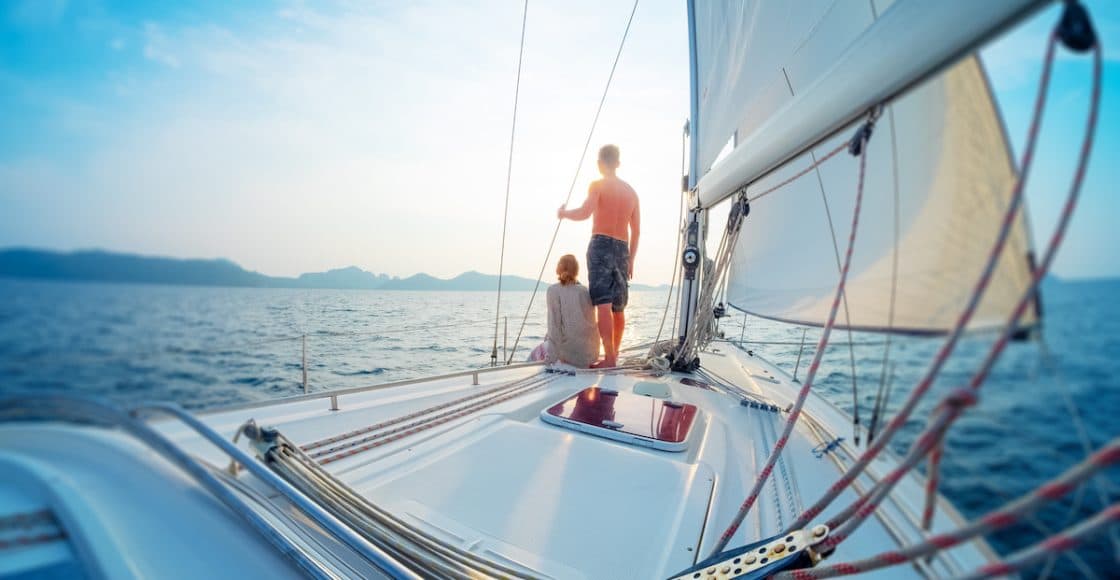
50 Nautical, Sailing & Boat Terms for Beginners

Table of Contents
Last Updated on September 29, 2023 by Boatsetter Team
Boating has its own vocabulary and if you’re going to be spending time on the water, you should understand a few basic boat terms. Knowing these will make you safer as well as more useful whether boating on your own, chartering or helping friends on their boat.
Let’s divide these words into basic nautical terms and specific sailing terms, listed in alphabetical order.
Ready to Hit the Water? Find Local Boat Rentals Near You
30 Commonly Used Nautical & Boating Terms
Here are a few expressions you’ll hear aboard both a powerboat and sailboat, or even at the dock before boarding your boat rental or charter.
- Aft – the direction toward the back or stern of a boat.
- Ashore – not on a boat but on land or a dock .
- Ballast – extra weight laid low in a boat to provide stability.
- Beam – the width of a boat at its widest point, usually the middle.
- Bow – the front of a boat. Multihulls like catamarans have more than one bow.
- Bunk – a built-in bed on a boat.
- Cabin – the sleeping accommodations on a boat .
- Cockpit – the main seating area of a boat that may also include the helm station .
- Crew – the people or staff that help drive and manage the boat.
- Deck – the top or horizontal structure that is laid over the hull of a deck.
- Dock line – the ropes used to tie a boat to a dock.
- Fender – a rubber, vinyl or foam bumper used to protect the boat at a dock; often referred to by novice boaters as “bumpers.”
- Forward – the direction toward the front or bow of a boat.
- Galley – the kitchen on a boat. It can be inside or out on deck.
- Head – the toilet or bathroom on a boat.
- Helm – the boat’s steering mechanism. It can be a tiller or a wheel.
- Helm station – the area where from which you command or drive a boat.
- Hull – the body or shell of a boat including the bow and stern.
- Keel – the longitudinal structure at the bottom of the hull and generally on the centerline. The keel helps with stability and tracking.
- Knot – either various loops tied in a line or a unit of speed which equals one nautical mile per hour.
- Line – any rope on a boat is referred to as a line – not a rope.
- Nautical mile – a unit of measurement used on the water. A nautical mile is approximately 1.2x a statue mile.
- Onboard – on a boat whether on deck, on the cockpit or below.
- Port – the left-hand side of a boat when you’re facing forward or toward the bow.
- Rudder – an appendage below the boat that is controlled by the wheel or tiller to steer the boat. A boat may have more than one rudder.
- Starboard – the right-hand side of a boat when you’re facing forward.
- Stern – the place at the back of a boat.
- Transom – the actual structure of the back edge of a boat.
- Wake – the turbulence left behind a moving boat.
- Waterline – the place where the hull of a boat meets the surface of the water.
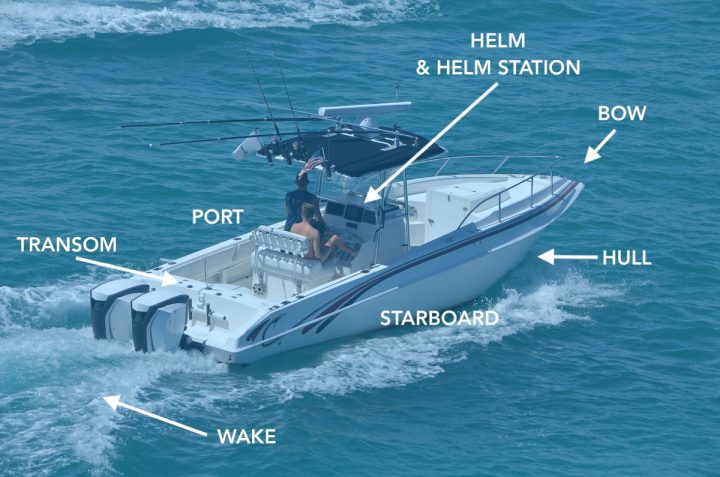
20 Sailing & Sailboat Terms
Within boating, sailing has its own specific vernacular. You’ll want to understand it before you step aboard a sailboat to help crew or when taking a lesson.
- Apparent wind – the combination of true wind and the motion of the boat at the time. It’s the wind you feel onboard.
- Boom – the horizontal pole which extends from the mast aft. It holds the bottom of the mainsail.
- Ease – to adjust sails outward or away from the centerline of a boat.
- Halyard – the line used to raise a sail whether a mainsail or a headsail.
- Headsail – a sail that is forward of the mast. It can be a genoa, a jib, a staysail or a small storm sail.
- In irons – technically a point of sail when you’re head-to-wind meaning the bow is pointing directly into the true wind and the boat is unable to maneuver.
- Jibing (also spelled gybing) – changing direction where the stern swings through the eye of the wind.
- Leeward – the direction away from where the wind is blowing.
- Mainsail – the primary sail on a boat which is usually attached in some way to the mast and boom. On most sailboats it’s the primary source of power.
- Mast – the vertical pole that supports the sails. The mast itself is supported by the rigging.
- Points of sail – the boat’s direction under sail relative to the true wind . The points of sail are: close-hauled, close reach, beam reach, broad reach and dead run.
- Reefing – shortening or reducing the area of a sail to de-power a sailboat usually used in a strong wind.
- Sheet – the line that controls the angle of a sail. There are mainsheets, jib/genoa sheets and others.
- Shroud – a part of the boat’s rigging that supports the mast from side-to-side
- Stay – a part of the boat’s rigging that supports the mast fore and aft.
- Tacking – changing direction under sail where the bow swings through the eye of the wind.
- Trim – to adjust sails inward or closer to the centerline of a boat.
- True wind – the actual wind that is blowing – both direction and speed.
- Winch – a rotating drum used to help control lines with a lot of pressure on them. A winch is cranked with a winch handle.
- Windward – the direction from where the wind is blowing.
Browse Available Sailboat Rentals Near You

Zuzana Prochazka is an award-winning freelance journalist and photographer with regular contributions to more than a dozen sailing and powerboating magazines and online publications including Southern Boating, SEA, Latitudes & Attitudes and SAIL. She is SAIL magazines Charter Editor and the Executive Director of Boating Writers International. Zuzana serves as judge for SAIL’s Best Boats awards and for Europe’s Best of Boats in Berlin.
A USCG 100 Ton Master, Zuzana founded and manages a flotilla charter organization called Zescapes that takes guests adventure sailing at destinations worldwide.
Zuzana has lived in Europe, Africa and the United States and has traveled extensively in South America, the islands of the South Pacific and Mexico.
Browse by experience

Explore articles
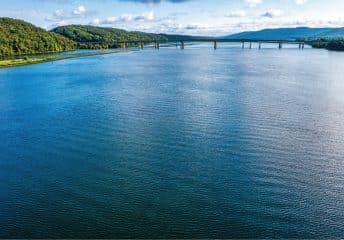
5 Best Lakes in Alabama for Boating
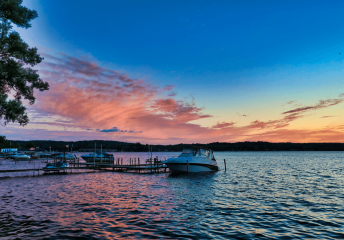
Is Owning a Boat a Good Investment?
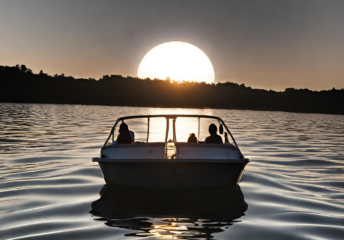
Boater’s Guide to Experiencing the 2024 April 8 Solar Eclipse on the Water
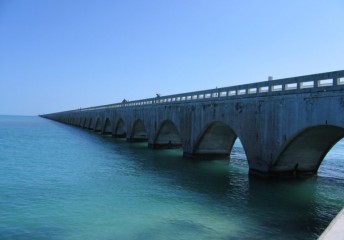
9 Reasons We're Heading to the Florida Keys this January

- Find A School
- Certifications
- North U Sail Trim
- Inside Sailing with Peter Isler
- Docking Made Easy
- Study Quizzes
- Bite-sized Lessons
- Fun Quizzes
- Sailing Challenge

Sailing Terms Everyone Should Know
By: American Sailing Sailboats
Knowing the right sailing terms to use on board a boat is not JUST a way of sounding super cool and impressing your friends. (Though it works for that, too.) It’s actually very useful, and sometimes crucial in communicating while you’re sailing. Some of the vocabulary used on board boats can sound arcane, which it is! That’s part of what’s fun about it; we’re still using terms that have been used by sailors for hundreds of years. So when you know your terminology, you’re participating in the grand sailing tradition, and you don’t have to say, “Can you hand me that…thing?”

photo by b. cohen
Here are the key sailing terms you’ll want to know as you begin learning to sail !
- Port: Facing forward, this is anything to the left of the boat. When you’re onboard, you can use this term pretty much any time you would normally say “left.” Starboard: Facing forward, this is anything to the right of the boat. Same deal as “port”–only the opposite.
- Bow/Stern: The bow is the front of the boat, the stern is the back. Anything near the front of the boat is referred to as being “forward,” and anything toward the back is “aft” or “astern.”
- Point of Sail: The boat’s direction relative to the wind. For example, if you’re going straight into the wind, your point of sail is called “in irons.” (Note: This isn’t a good place to be!) If the wind is blowing straight over the side of the boat, that’s called a “beam reach.” There are 8 commonly used points of sail, and it’s a good idea to familiarize yourself with them before going out.
- Helm: Where you steer the boat. Usually this is a big wheel, but on smaller boats it can be a tiller, which is basically a long wooden stick. Either of these can be used to control the boat’s rudder.
- Keel: The keel is a long, heavy fin on the bottom of the boat that sticks down into the water. It provides stability and is the reason why modern sailboats are nearly impossible to capsize.
- Heeling: This is the term for when a sailboat leans over in the water, pushed by the wind. There’s nothing else like the thrill of heeling over as your sails fill and your speed picks up!
- Tack: This term has two distinct meanings, both of them very important. As a verb, to tack is to change direction by turning the bow of the boat through the wind. As a noun, your tack is the course you are on relative to the wind. For example, if the wind is blowing over the port side, you are on a port tack. If it’s blowing over the starboard side, you’re on a…you guessed it…starboard tack.
- Jibe: A jibe is another way of changing direction, in which you bring the stern of the boat through the wind. Whether you choose to tack or jibe entirely depends on the situation–what’s around you, and the direction of the wind.
- Windward: The side of the boat closest to the wind. When heeling over, this will always be the high side.
- Leeward: The side of the boat furthest from the wind. When heeling over, this will always be the low side.
- Lines: On board a boat, this is what you say instead of “ropes.”
- Mainsail: The big triangular sail just aft of the sailboat’s mast. As the name suggests, this is the boat’s largest and most important sail. Running along its bottom edge, the mainsail has a thick pole called the boom.
- Jib: The next most common sail on any boat. The jib can always be found forward of the mast, and unlike the mainsail, does not have a boom.
Getting familiar with these sailing terms is an important step. Not only will you sound like you know what you’re doing, you’ll quickly begin to realize that with the right practice and training, you really DO know what you’re doing!
Try our online sailing term quizzes: Sailing Terms 1 | Sailing Terms 2 | Sailing Terms 3 | Sailing Terms 4
Learning to Sail
- ASA 101: What You’ll Learn ASA 101 is your introduction to Basic Keelboat Sailboat and is your key to a lifetime of sailing.
- How To Sail Sailing a boat is part art and part skill but few activities offer such a variety of pleasures as sailing. Something special occurs when you cast off the lines and leave your cares at the dock.
- 7 Tips For The Beginning Sailor There are the obvious things you need when you go sailing, sunscreen, a hat, a windbreaker, non-skid shoes, and wind. However, what do you really need to be ready to head out on the water?
- How To Learn To Sail You won’t have to buy a boat or learn a new language or buy a new wardrobe to get a taste for sailing. You can dictate how much you want to experience.
- Learning To Sail Is Just The Beginning Sailing means different things to different people. At ASA we understand that learning to sail is just the beginning of a relationship with a lifestyle that is infectious. Where will sailing take you? We have a few ideas but how you view sailing is the most important.
- What Is Your Role on a Boat? What type of sailor are you and what role do you take on the boat? Your ASA sailing education will prepare you to be a skipper on a sailing vessel and with that comes the responsibility of keeping your crew safe and ensuring the safety of the vessel you are sailing.
Related Posts:

- Learn To Sail
- Mobile Apps
- Online Courses
- Upcoming Courses
- Sailor Resources
- ASA Log Book
- Bite Sized Lessons
- Knots Made Easy
- Catamaran Challenge
- Sailing Vacations
- Sailing Cruises
- Charter Resources
- International Proficiency Certificate
- Find A Charter
- All Articles
- Sailing Tips
- Sailing Terms
- Destinations
- Environmental
- Initiatives
- Instructor Resources
- Become An Instructor
- Become An ASA School
- Member / Instructor Login
- Affiliate Login
- Glossary: essential terms a sailor should know
We have put together a comprehensive list of essential sailing terms to enhance your nautical knowledge. Delving into diverse areas such as meteorology, navigation, and boat equipment, our glossary covers sail types, boat components, and crucial units of measurement and abbreviations that every sailor should be familiar with. Plus, you'll find terms unique to charter boats, the boat rental process, safety at sea, signalling aids, and modern sailboat technology.
Anchor windlass is a mechanical device used to hoist and lower the anchor and its chain on a boat. It operates under high tension and typically has its own circuit breaker to protect it from electrical overloads. When using an anchor windlass, it is essential to allow for short breaks during operation to prevent it overheating and any resultant damage to the equipment.
Anticyclone is an area of high air pressure.
Apparent wind is the wind we perceive when we are on board and results from the vector sum of the real wind and the wind generated by our motion while sailing. The topic of apparent wind is covered in detail in our article — Apparent vs. true wind .
Autopilot is a device designed to steer a boat along a predetermined course. It independently adjusts the rudder as required, ensuring the vessel follows the set path to its destination as accurately as possible.
Baby net or safety net is a safety feature that prevents small children from falling off the deck into the water. It is a net similar to a fishing net, which is installed along the boat's railings. A baby net does not come as standard with a rental boat, so always discuss it with the salesperson when booking if you want to order the net from the charter company. We discuss safety features in our article — Sailing with kids: how to keep all of you safe and happy .
Safety nets on the boat effectively prevent children from falling into the water.
Barber hauler is a sail control device used to adjust the angle of the jib or genoa sail in relation to the wind, mostly found on more sporty boats. It consists of a line or tackle system attached to the clew of the sail, allowing sailors to fine-tune the sail's position for optimal performance and improved windward efficiency.
Bathing or swim platform , is a foldable structure located at the stern of a boat, providing easy access to the water for swimmers or during training activities. When sailing, it is advised to keep the bathing platform closed and secured in place, rather than left extended.
Batten is the reinforcement in the mainsail. Mainsails are generally classified based on their shape and construction, with variations such as full-batten, partial-batten, or no-batten mainsails.
Beaufort scale is a widely recognized scale in the sailing world. It categorizes wind forces and their corresponding effects on sea surface conditions, allowing skippers to estimate wind strength visually. By observing the behaviour of the sea surface and the wind's impact on it, sailors can use the Beaufort scale to make informed decisions about their sailing course and speed.
Bearing compass is a type of compass that is used to determine the bearing, or direction, of an object or location relative to the compass itself. It is commonly used in navigation to determine the direction of a distant landmark or to maintain a specific course while sailing.
Bimini is an alternative term for a sun canopy that provides shade for the helmsman's station and the rear portion of the cockpit. In the rain, it serves as a slight protection from the water. Often, however, sailors fold it up for sailing, and sometimes there is no other way to do it, as the mainsail sheet passes through it.
Boom is a horizontal spar, typically made of aluminum or carbon fiber, that attaches to the mast and holds the foot of the mainsail. It runs perpendicular to the mast and is held in place by a combination of topping lift, mainsheet, and outhaul.
Bora is a powerful, cold wind originating from the north to north-east that frequently affects the Adriatic Sea. It can pose a significant risk to sailors navigating the region. To learn more about the Bora and its impact on sailing in Croatia, check out The Bora: the scourge of the Adriatic .
Bow thruster is a mechanism located at the bow of a vessel that assists with maneuvering while in port. It is not intended to replace the main engine and should not be used while sailing. The primary function of a bow thruster is to help shift the boat's bow to port or starboard. It's essential to operate the bow thruster with caution, as it has a high voltage. Use short, intermittent presses (2-3 seconds) rather than prolonged holds to prevent the bow thruster from burning out and becoming inoperable.
Bowsprit is a spar that extends from the bow of a sailboat. It is used to attach the forestay, which supports the mast, and to extend the sail area forward. On historic ships it is slightly angled upwards towards the sky. On more modern boats it extends straight out from the bow and may be retractable or foldable to make docking and storage easier.
Brackish water is water that is neither salty like the sea nor fresh like freshwater streams. Its salinity is somewhere in between. It is most often found at the mouths of rivers or in lakes by the sea.
Breeze is a periodic wind phenomenon caused by differences in air temperature between day and night. According to the time when it occurs, it is distinguished between day (sea) and night (land). The breeze is a beautiful sailing breeze. Read more about breezes in our guide — Understanding land and sea breezes: how they can affect your sailing .
Buoy field is an arrangement of multiple buoys within a bay, anchored to concrete blocks on the seabed. Typically, a fee is charged by the operator for using these buoys, but the cost is generally lower than docking at a pier or marina.
Cardinal marks are navigational aids that indicate the location of safe water relative to a hazard. They are named after the four cardinal points: North, East, South, and West.
Cardinal marks
Charter company owns the boats that are available for rental and acts as a partner to businesses like ours. We feature their boats in our search portal .
Check-in is the process of taking over a charter boat. You can find out more about what you need to look out for in our guides Boat check-in: examining a yacht down to the last screw and Inspecting your rental boat: a complete checklist and guide
Check-out is the handing over of the boat to the charter company at the end of your yacht charter holiday.
Cirrus clouds are characterized by their wispy, hair-like appearance, resembling algae, tufts, or manes. These clouds are translucent, cast no shadow of their own, and have extremely fine fibres.
Cleat is a metal object attached to the deck of a boat used to secure the boat. It may also be on a pier.
Cleats can also be found on the pier.
Cockpit is an area towards the rear of a sailboat, typically designed for the crew to steer, navigate, and control the boat. It is the central location where the helm, rudder, and various lines, winches, and controls for sails are accessible.
Code Zero is a unique sail that isn't found on all sailboats. It is similar to a larger, deeper genoa but made from a lighter material. The sail is equipped with its own furling line and endless loop for easy deployment and storage.
COG (Course Over Ground) refers to the direction of a vessel's movement measured in relation to the earth's surface or the seabed.
COLREG is a shortened term in English that stands for the Convention on the International Regulations for Preventing Collisions at Sea. These regulations provide rules for watercraft operation, ensuring clear right-of-way guidelines.
Cumulus clouds are generally puffy and white, with a flat base and a rounded top. They can have a cauliflower-like appearance, and their edges may be well-defined or fuzzy.
Cunningham is a type of rope that runs from the base of the mast to the lower edge of the mainsail, allowing the sailor to stretch the edge of the sail downward. It is typically located on the side of the mast that is opposite to the outhaul.
Cyclone is an area of low air pressure.
Dew point is the temperature at which the air becomes saturated with water vapour and begins to condense into dew.
Dinghy , also known as a tender , is a small boat often used by sailors to transport themselves and their supplies to and from their anchored or moored boat. Dinghies can be inflatable or made of hard materials like fiberglass or aluminum.
Dodger, also known as sprayhood, is a protective structure mounted at the front of the cockpit on a sailboat. It shields the cockpit and companionway from wind, spray, and waves, providing shelter and improved comfort for the crew
EPIRB (Emergency Position Indicating Radio Beacon) is an emergency distress beacon that is used to transmit a distress signal to rescue authorities in the event of an emergency situation
Fender is a cushioning device made of rubber, plastic or foam that is used to protect a boat's hull from damage when it is moored against a dock, pier or another vessel.
Flare is a signalling device used to call for help in an emergency. Its misuse is punishable.
Fog horn is a signalling device that produces loud, low-pitched sound blasts to warn other vessels of the presence of your boat in conditions of reduced visibility, such as fog or heavy rain.
Foil is a hydrodynamic device that is used to lift the hull of a boat out of the water and reduce drag. Foil technology is also used in other water sports such as windsurfing, kiteboarding, and wingfoiling.
This is what a foil looks like on a racing catamaran.
Gangway is a temporary bridge or walkway that connects a boat to a dock, allowing people to move between the two structures.
Gennaker is an additional sail that is similar to a genoa. It is made of lighter material, which makes it ideal for lighter winds. Gennakers often have distinctive colours, and there are several reasons why sailors might want to rent and try one out. Check out our 5 reasons to rent a gennaker .
Genoa , also known as genoa jib , is a type of sail that is positioned forward of the mast and is used on sailing boats. It typically covers the area from the mast to the bow of the boat, and is larger than the mainsail. It can range in size from 100% to 150% of the foretriangle, which is the triangle formed by the mast, forestay, and deck.
GPS , which stands for Global Positioning System, is a satellite-based navigation system that provides location and time information anywhere on Earth. Sailors can use an electronic GPS device to accurately determine their position on the water.
Gulets are double-masted boats designed and built based on traditional Turkish wooden sailing boats. One of the typical destinations for gulets, which we also offer, is Turkey.
Gybe or jibe is a sailing maneuver where the sailboat's stern is turned through the wind to change the wind direction from one side of the boat to the other, usually while sailing downwind. The boom of the sail swings across the boat during a gybe, and it should be performed carefully to prevent accidents and damage to the boat and crew.
Harness is a safety device used in sailing that is attached to a sailor's body or life jacket and secured to the boat's deck with a buckle to prevent falling overboard.
Halyard can is a rope used to raise different types of sails such as the mainsail, jib, genoa, spinnaker, and gennaker. Each sail will typically have its own dedicated halyard to hoist it up the mast.
Hatch is an opening on the deck or cabin top of a boat used for ventilation, access, or as an emergency exit.
Horseshoe life buoy is a U-shaped buoyant device made of foam or other buoyant material, and is used as a safety device in the event of a person falling overboard. It is typically kept on board a boat, often near the stern on the railings.
Impeller is a small component (propeller) in the engine that provides suction and circulation of seawater in the engine cooling. Because it is such a crucial component, you will usually find a spare one on board.
Isobar is a line on a synoptic chart that connects two points where the atmospheric pressure is the same.
Isolated hazard refers to a navigational mark or buoy placed in the sea to indicate a potential danger, such as a shoal, rock, or other underwater obstruction located in open water. While it is possible to sail around an isolated hazard, it is generally recommended to maintain a safe distance by navigating around it in a larger arc.
Isotherm is a line connecting two points of the same temperature.
Check out more tips for sailors:
Jib is the term for a headsail that fills no more than 100% of the area between the forestay and the mast.
Jugo , also known as Sirocco , is a moody and unpredictable south to south-easterly wind found in the Adriatic. Find out more about it in our guide — The Croatian Jugo wind: when and where it occurs and why to be on the lookout! !
Keel , which is the heaviest component located beneath a boat and has the lowest center of gravity, plays a vital role in maintaining the vessel's stability. It typically accounts for up to 40% of the boat's weight and can have a fin or bomb shape. The keel's primary purpose is to stabilize the boat and prevent it from capsizing by helping to restore it to a horizontal position when it is tilted due to wind or waves.
Kicker , also known as a boom vang or vang , is a mechanical device consisting of ropes or a piston that is connected between the deck, boom, and the base of the mast. It is used to control the shape of the mainsail by adjusting the tension on the leech of the sail and controlling the boom's vertical position.
Knot can be the one on the rope or also a unit indicating the speed of the boat. It's equivalent to 1.852 kilometres per hour.
Lazy bag (sometimes called a lazy pack or stack pack ) is a large cover designed to store a folded mainsail on the boom.
The lazy bag is attached to the boom and the mainsail falls into it when it is folded.
Lazy jacks are lines holding the lazy bag.
Leech or leach is the back edge of the sail.
Libeccio or Lebić is a south-westerly to westerly wind and is typical of northern Corsica, the coast of France, Italy and also the Adriatic, where it usually arrives just after the Jugo/Sirocco. Read more about this wind in our article — The Libeccio/Lebić: a stubborn, unpredictable wind .
LOA stands for Length Overall , which is the maximum length of a vessel measured from the foremost point of the bow to the aftermost point of the stern, typically along the waterline.
Logbook is a document where a sailor writes down details of a voyage including weather, the boat's course, position and other information.
Mainsail , sometimes also referred to colloquially as the "main," is the sail that is hoisted up the mast of a sailboat.
Mainsheet track or traveller is the rail on which the mainsheet car or block moves back and forth, allowing for adjustment of the angle of the mainsail relative to the wind. Racing boats typically have the mainsheet track located in the cockpit for maximum adjustability, while recreational sailboats may have it located closer to the mast.
Marina is just another name for a harbour for recreational boaters. A marina often has social facilities, a shop, offices of charter companies, etc.
Marinero is a Spanish term for a marina worker who assists with various tasks, such as helping boats to dock and providing assistance to boaters with any issues or needs they may have while in the marina.
Mast is a tall vertical spar that supports the sails on a sailing vessel. It is typically located in the center of the boat and is stepped (or mounted) on the keel or deck. The mainsail is hoisted up the mast and attached to it, while the jib or headsail is usually attached to the forestay, which is a cable or wire that runs from the top of the mast to the bow of the boat.
Meltemi is a dry northerly wind that occurs mainly in the Aegean and eastern Mediterranean, from late May to late September. Read more about this wind in our guide — The Greek Meltemi: friend or foe? .
Mistral is a cold wind found, for example, in France. It works on a similar principle to the Croatian bura. For more information, check out our article — The Mistral: a turbocharger for experienced sailors .
MOB stands for Man Overboard , which refers to the emergency situation where a crew member has fallen into the water and immediate action is required to retrieve them. Find out more in — Man Over Board (MOB): a step-by-step guide .
Mooring can refer to any type of permanent anchor or buoy to which a boat can be tied up . Commonly on the Adriatic, it consists of a concrete block on the bed and a rope leading to shore. The boats are then moored to it at the pier or jetty. It is a very convenient and easy way to moor a boat.
Mooring bollard is a sturdy vertical post or pole, often made of metal or wood, that is used as a mooring point for boats.
Bollards serve both recreational boats and transport or cargo ships. Therefore, it is often large in size.
Mooring hook is pole with a hook used by boaters to grab onto a mooring buoy or other floating object in the water and retrieve the mooring rope attached to it.
Nautical flag alphabet (International Code of Signals) is a special set of characters, words and flags that sailors around the world use to communicate.
The nautical alphabet is also used in aviation.
Nautical mile is a unit of distance at sea. 1 NM equals 1.852 m. But be aware that it differs in length to a land mile!
Occluded front is a type of weather front that occurs when a fast-moving cold front overtakes a slower-moving warm front. This results in the warm air being lifted off the ground and creating clouds and precipitation.
Offshore typically refers to sailing or boating in open water, away from the coast or shore. This type of sailing can involve more challenging conditions and requires greater skill and experience. Read more about it our article — Beyond the shoreline: 10 things to consider when offshore sailing .
Outboard engine or outboard motor is a small portable engine designed to power a dinghy. It is ordered as an extra with the boat rental.
What the seagull's sitting on is an outboard motor.
Outhaul is a control line on a sailboat that adjusts the tension of the mainsail foot, which is attached to the boom. It allows the sailor to control the depth and shape of the mainsail along the boom.
Plotter is an electronic device used for navigation that displays and tracks the boat's position and movement using GPS technology. It is often located in the cockpit.
Port (side) is the term for the left-hand side of the boat when facing forward.
Porthole is a term for a small, usually circular window on a boat or ship.
Preventer or boom preventer is an auxiliary line or rope that is rigged from the end of the boom to a sturdy point on the deck, mast, or other secure attachment point on the boat. The purpose of the preventer is to restrict the boom's movement and prevent an accidental or unintentional jibe, which can happen when sailing downwind or on broad reach courses.
Propeller is a device consisting of blades that rotate to provide propulsion for a boat's engine. It is often located at the stern (back) of the boat and is powered by the boat's engine.
Propwalk is a phenomenon that occurs when a boat's propeller produces a lateral force that causes the boat's stern to move to one side when the engine is in gear. This is particularly noticeable at slow speeds and when maneuvering in tight spaces, such as a marina or dock.
Propwash is the turbulence created by the rotation of the propeller. Propwash deflecting off an angled rudder allows even large boats to turn in a tighter space.
Quebec flag signal (yellow) in the International Code of Signals means "My vessel is healthy and I request free pratique" which is a signal made by a ship entering port to request permission to enter and clear customs and immigration. It is usually used when sailing abroad. To learn more about crossing borders, take a look at Can you cross national borders with a charter boat?
Reefing is a technique used to reduce the area of the sail in order to maintain control of the boat and prevent it from being overpowered in strong winds. Charter boats usually have 2 or 3 degrees of reefing available.
Railing is another term for the guardrails around a yacht.
Rigging refers to the system of ropes, wires, and hardware that support and control the sails and masts on a boat or ship. It includes not only the mast, boom, and standing rigging (wires or rods that support the mast), but also the running rigging (ropes that control the sails), such as halyards, sheets, and control lines.
Rudder blade is the part of the steering system that is underwater. A boat may have one or two rudder blades.
Safety line is a line running along the deck of the boat by which sailors fasten their harnesses to prevent them from falling into the water when the boat is heeling or in large waves. The safety line is not automatically installed on the boat and must be installed separately.
Self-tacking jib is a type of headsail that is specifically designed to tack without the need for adjusting the sail position or manually pulling on the sheets. The sail is attached to a track or a traveler that runs athwartships on the boat and allows the sail to pivot and change sides without having to be moved or adjusted manually.
Shackle is a small metal device used to attach a line to a sail. It is used to connect the sail to the halyard or other lines on the boat. It can also be used to connect different sails together or to connect a sail to a spar or other structural element of the boat.
Sheet is a rope or line used to control the angle and shape of a sail. There are different sheets for different sails, such as the mainsheet for the mainsail, the jib sheet for the jib sail, and the spinnaker sheet for the spinnaker sail.
Shrouds are actually a type of standing rigging, which are the fixed lines or wires that support the mast of a sailboat. They run from the mast to the sides of the boat, and help to keep the mast upright and stable.
Spreader is a horizontal strut that extends from the mast to the side of a sailboat, providing support for the mast and helping to spread the shrouds that support the mast.
Spinnaker pole is a long and sturdy pole used to hold the clew (bottom corner) of a spinnaker sail out from the mast of a sailing boat.
Steering wheel is the device used to control a boat's direction. It is connected to the rudder blade through a steering mechanism. Boats can have one or two steering wheels depending on size and design.
Storm sails are special sails, usually orange in colour, whose small surface area and strong material allow sailing in storms. The sails are not installed on the boat all the time, they need to be unpacked from the hold when needed. Ask at check-in where the storm sails are located on the boat.
Storm sails often have a distinctive colour.
Skipper is just another name for the captain, the skipper of a yacht. Would you like to become a skipper too? Take a look at our sailing courses .
Spinnaker is a large, lightweight and often colourful sail that is designed to be used when sailing off the wind, such as on a reach or a downwind leg.The spinnaker is attached to the boat's mast and is supported by a spinnaker pole.
Spin-out refers to a situation in which a boat, while sailing downwind, loses control and starts turning towards the wind.
Sprayhood is a protective covering, typically made of canvas or other durable material, that is installed over the companionway (entrance to the cabin) of a sailboat. Its primary purpose is to shield the cockpit and the interior of the boat from wind, spray, and rain while underway
SRC stands for Short Range Certificate , which is a certification required for operating a marine VHF radio.
Starboard is the term used to describe the right-hand side of a boat when facing forward.
Stay is a term used to refer to a piece of rigging that helps support the mast of a sailing vessel. It typically runs from the top of the mast to the bow of the boat, forming a triangle shape along with the mast and the boat's deck.
Stratus is a type of low-level cloud characterized by its uniform, featureless appearance that often covers the entire sky.
Synoptic map , also known as a weather map, is a graphical representation of current weather conditions created using data collected from weather stations, satellites, and other sources.
Tack is the maneuver of turning the sailboat against the wind.
Telltales are pieces of yarn or fabric that are attached to a sail, stay, or rigging on a sailboat. They are used as a guide for trimming or adjusting a sail by providing information about the airflow around the sail.
Telltales on a sail
Tender is another word for dinghy.
Tiller is a rod used to move the rudder blade and control the direction of the boat. It is often used on smaller sailboats instead of a steering wheel. In case of an emergency, there might be a spare tiller onboard as a backup.
Topping lift or topenant is a line that runs from the end of the boom to a point high on the mast, which supports the boom and prevents it from dropping too low when the mainsail is not raised.
Trade wind is a wind that blows steadily towards the equator from the northeast in the Northern Hemisphere and from the southeast in the Southern Hemisphere, usually found in tropical regions.
Transom is the reinforced vertical portion located at the stern of a boat. It connects the sides of the boat, giving it form and structure. The transom is also where an outboard motor is typically attached to the vessel and where the boat's name may be painted.
True wind is the actual wind that exists in the environment and is not affected by the motion of the body or the vessel. It is the wind that would be felt if the vessel were stationary. Find out more in our article — Apparent vs. True Wind .
We found nothing for this letter except in the nautical alphabet (U: Uniform – you are heading into danger). If you can think of something to go here, get in touch.
Venturi wind is a localised wind flow originating and blowing out of a strait, for example between hills or rocks.
VHF (short for Very High Frequency ) is electromagnetic waves that allow radio communication between ships, aircraft, ports, etc.
Winch is a mechanical device consisting of a drum that rotates either manually or powered by an electric or hydraulic motor. The rope or line is wrapped around the drum and as it rotates.
Drum-shaped rope winch.
Wind vane (otherwise known as a weather vane, wind indicator or a wind sock) is a small device at the end of the mast whose arrow indicates where the wind is blowing from.
If you can think of a term that could be here, please write to us.
Which of our boats will you take out on the waves?
Practice your sailing terminology on the water. get in touch and we'll find the perfect sailing boat for you..

Denisa Nguyenová

Sailing Terms: A Complete Guide

Last Updated by
June 15, 2022
Learning sailing terms when you first get into boating can be a daunting task.
Some sailing terms are logical, like 'fore' means forward or front of the boat, while others might as well be in a different language. Athwartship, for example. Nothing in our daily lexicon gives any clues as to what that might mean. Like it or not, it's time to dust off the old noodle and get to memorizing some new vocab words!
Knowing the difference between a clew and a tack, a luff and a leech, will help you communicate with your sail maker regarding which part of your sail needs resewn. If you need to have your rigging adjusted, you must know the difference between your shrouds and your stays, your standing rigging vs. your running rigging.
By educating yourself in the correct names of all parts of your sailboat, you can avoid situations in which you may need to use terms such as ‘thingy’ or ‘that round part at the end of that thing’. While even the most seasoned sailor occasionally troops over the vernacular, it is always beneficial to have as wide a nautical vocabulary as possible. Many in the sailing community get by without knowing the entire sailing dictionary, but if you’re interested in avoiding vocabulary embarrassment, check out the list I’ve compiled of sailing terms that every sailor ought to know.
I’ve been sailing on and off throughout my life and I know from experience that it is incredibly helpful to know the correct terms for each part of your sails, rigging, and boat.
Sailors are among the kindest, most helpful people you’ll ever meet. But, if you’re looking for help on why you’re not getting the most speed out of your mainsail and you know don’t know the correct terms for each part of the sail, it may be hard to get advice from you fellow sailor on why ‘the back of the mainsail is flappy’. They would be more likely to give useful advice if you’re able to tell them that you’re struggling to keep wind in the roach of your mainsail. Check out my list of sailing terms and see if a few don’t stick. I’ve done my best to include pictures when possible.
Table of contents
Sailing Terms
Abeam : When an object, craft or island is abeam your vessel, that means that it is off the side of your boat. It is 90 degrees from the centerline of your boat.
Abaft : Toward the stern. “Honey, have you seen my boat shoes?” “They’re abaft the navigation table!” This is the opposite of forward.
Aft : In the stern of the boat. For example, the back cabin is referred to as the aft cabin.
Apparent wind : The wind direction and speed which the crew observes to be blowing in combination with the true wind. This is often different from the true wind direction and speed due to the boat's motion.
Astern : The area behind the boat. If you go astern, you are going in reverse.
Athwartship : Directionally perpendicular to the centerline of the boat.
Backing (a sail) : Forcing the sail to take wind into its opposite side by pulling the sail to the opposite side of the boat.
Backstay : The wire that runs from the back of the boat to the mast head. This prevents the mast from falling forward.
Bailer : Any scoop-like container that is used to remove water from within a vessel’s hull.
Ballast : Weight which adds stability to the vessel. The weight usually is composed of lead or iron and placed low in the boat's hull, such as within the keel.
Batten : a thin, flexible strip (often fiberglass) that is inserted into the main sail to help it stay open to the wind. The batten runs from the back edge of the sail (leech) toward the front edge (luff).
Beam : The width of the vessel at its widest point.
Beam reach : Sailing with the wind blowing perpendicular to the direction the boat is traveling.
Bearing off or Bearing away : Steering the boat away from the direction in which the wind is blowing.
Bend : a knot which connects two ropes.
Berth : A slip, a mooring, or a bed within the boat.
Bight : A bend or loop in a rope. When a rope forms a bight, it has changed direction 180 degrees.
Bilge : The lowest area within a boats hull. This area collects water which is then pumped overboard by a bilge pump.
Bimini : The covering over the cockpit. Usually constructed from a stainless steel frame covered with canvas or fiberglass. It provides protection from sun and rain, but not wind.
Binnacle : The pedestal centrally located in the cockpit that generally holds the steering wheel and navigational instruments.
Block : A pulley.
Boom : This pole runs perpendicular to the mast and holds the bottom of the mainsail in place. Its position is adjustable side to side as needed for the wind direction.
Boom vang : A tackle which ensures that the boom does not lift upward from wind pressure in the mainsail.
Boot Top or Boot Stripe : The stripe of tape or paint between the boat's underwater (bottom) paint and it’s above water (topside) paint.
Bow : Front end of the boat
Bowsprit : The forward most protruding pole or platform which some boats possess. This spar allows for the sails and rigging to be attached further forward.
Broach : When a boat sailing downwind accidentally ends up sideways to the waves and heels over dangerously. This can be caused by large seas or poor steering.
Broad reach : Sailing with the wind coming off your stern quarter. If you’re standing at the helm facing the bow, the wind is blowing halfway between the side and the back of the boat.
Bulkhead : The walls in a boat which run athwartship, or perpendicular to the centerline of the vessel.
Capsize : When a vessel tips over past 90 degrees.
Catamaran : A vessel with two hulls.
Centerboard : A retractable keel which helps the sailboat maintain course and stability underway. When raised, the vessel is able to enter shallow waters.
Centerline : An imaginary line that runs from the center of the bow to the center of the stern.
Chainplate : A metal plate that is secured to the boat's hull to which wires supporting the mast are attached. The chainplates may be exterior or interior, visible or hidden.
Chandlery : A store that sells boat supplies and parts.
Cleats : The wooden or metal piece to which ropes are secured.
Chock : A fitting that a line passes through to change direction without chafing.
Clew : The lower back corner of a sail. This is where the foot and leech of the sail meet.
Close-hauled : Sailing as close to the direction the wind is coming from as possible with the sails pulled in tight. (See Points of Sail for infographic.)
Close Reach : Sailing between close hauled and beam reach. (See Points of Sail for infographic.)
Coamings : The lip around a hatch or window which stops water from entering. Also the raised area around the cockpit to keep out water.
Cockpit : The area from which steering occurs. This can be in the center of the boat or in the back of the boat.
Companionway : The doorway into the cabin.
Cotter pin : a bendable metal pin which is inserted into a metal rod then bent to lock it in place.
Daybeacons : Markers for navigation which are on posts. These are red or green.
Dead run : Sailing with the wind coming from directly behind the boat. Sails are fully out to catch the wind.
Dead reckoning : Determining a vessel's position by knowing the direction and speed traveled.
Dinghy : A small boat which is used to travel to shore from the main vessel. This can be propelled oars or a motor.
Dodger : The structure at the front of the cockpit which protects the cockpit and companionway from wind and spray. This is generally made of stainless steel frame covered with canvas and plastic windows. It can also be a solid structure with solid windows.
Dismasting : When the mast breaks off the boat. This can occur due to rigging failure or structural failure of the mast.
Displacement : The weight of the water that would otherwise be in the place of the boats hull.
Drogue : A sea anchor which is deployed to help control the drift of a vessel. It can be constructed like a parachute, bucket, or even a rope dragging behind the boat.
Ebb tide : After high tide when the water is receding towards low tide.
EPIRB : Stands for Emergency Position Indicating Radio Beacon. This device transmits a distress signal to emergency services and notifies them of a vessel's location.
Fairlead: A fitting which encloses a line within a smooth ring and helps guide its direction.
Fathom : A measurement of water depth equal to 6 feet.
Fid : A pointed tool used when splicing a line.
Fiddle : The raised edge around a table which prevents objects from falling off as the boat rocks or heels.
Fix : Determining a vessel's location by using the compass bearing of two or more fixed points of reference such as landmarks or buoys.
Fin keel : A fixed, ballasted keel which is centrally located beneath the hull. It does not run the full length of the hull.
Flogging : When a sail flaps noisily because it is not being filled by the wind.
Flood tide : Time period between low tide and high tide when the water is rising.
Foot : The bottom edge of a sail.
Fore : At or near the bow of a vessel.
Forestay : The wire which leads from the bow to the top of the mast. The forward most sail attaches to the forestay either directly or by use of a roller furling system.
Full keel : A fixed, ballasted keel which runs the full length of the hull.
Furling system : A system around which the sail wraps when not in use and is unwrapped for sailing. This may be around the forestay or within the mast.
Freeboard : The distance on a vessel from the waterline to the deck.
Galley : The kitchen on a boat.
Gelcoat : A colored resin which is painted onto the outside surface of a boat and forms a protective glossy layer.
Genoa : A large forward sail which, when fully extended, comes back past the mast. Larger than a jib sail.
Gimbals : Often attached to a boat's stove, it is the fitting which allows an object to maintain an upright position when a vessel heels.
Gooseneck : The point at which the boom attaches to the mast. It allows the boom to move in all directions.
Ground tackle : The anchor, chain, and line used to fix a boat to the bottom when anchoring.
Gunwale : Pronounced “gunnel”. This is the top edge of a boat's hull.
Halyard : The line which attaches to a sail to raise it.
Hanks : The clips that attach the front edge (luff) of a sail to the forestay.
Hatch : An opening window in the cabin roof much like a skylight.
Head : Bathroom on a boat. Also, the uppermost corner on a sail.
Headway : The forward motion of a vessel through the water.
Heave to : A method of controlling a boat’s position to the waves and limiting headway by backwinding the forward sail and keeping the rudder hard over into the wind.
Heel : The tilt that occurs to a boat's hull when the sails are filled with wind.
In-Irons : When a sailboat is bow into the wind with sails flapping. No steerage is possible as the vessel has no forward motion. (See Points of Sail for infographic.)
Jackline or Jackstay : Lines that are run from the bow to the stern. To these safety lines, sailors attach a lanyard connected to their harness so that they may work on deck without fear of being swept overboard in rough seas.
Jib : A triangular forward sail.
Jib sheets : Lines used to control the jib.
Jibing : Pronounced with a long i sound. Steering the boat from one downwind direction to another downwind direction by turning the stern of the boat through the wind. This will cause the sails to move across the boat to the other side, i.e. from port to starboard.
Kedge anchor : A small, lighter second anchor.
Keel : The bottom most part of a boat's structure. This part provides ballast and stability.
Ketch : A sailboat with two masts. The forward mast is the taller mast.
Knot : Regarding speed, one knot is equal to one nautical mile per hour.
Lazyjacks : Light lines that run from the boom to the mast and help contain the mainsail while it’s being lowered to the boom.
Leech : The back edge of a sail. If the sail is square, then this term refers to the outside edges of the sail.
Lee shore : The shore onto which the wind is blowing. On an island, the side of the island facing into the wind is the lee shore.
Leeward : The direction to which the wind is blowing. If the wind is coming from the north, then south is leeward.
Luff : The forward edge of the sail.
Lying a-hull : When a vessel is drifting with all of it’s sails down.
Mainsail : Pronounce main’sil. The primary sail of a boat that is hoisted up or unfurled from the mast.
Mayday : An emergency call put out over a marine radio when there is clear and present danger to the crew of the vessel.
Mizzen : The shorter mast behind the main mast on a ketch.
Monohull : A vessel with a single hull.
Mooring field : An anchorage in which permanently anchored buoys are present to which vessels may be secured.
Multihull : A vessel with more than one hull such as a catamaran or trimaran.
No-sail zone : This is an area 45 degrees to either side of directly into the wind. It is not possible for a boat to sail in this zone as the sails cannot fill with wind. Tacking is necessary. (See Points of Sail for infographic.)
On the hard : When a vessel is out of the water and being stored on land.
Painter : The line which secures the bow of a dinghy to the main boat.
Pan Pan : Pronounced pon-pon. This is an urgent distress radio call which is used when a vessel needs assistance. It is one step below Mayday.
Points of sail : The vessels course in relation to the direction of the wind.
Port : The left side of the boat when facing forward.
Port tack : Sailing with the wind hitting the port side of the vessel and the sails are out on the starboard side.
Pulpit : The metal rails at the bow of the boat which protect the crew from going overboard.
Pushpit : The metal rails at the back of the boat to protect the crew from going overboard.
Quarter : The back corner area of the boat. This area is 45 degrees behind, or abaft, the beam of the vessel.
Reef : reducing the size of the sail in high winds for the safety of the crew and equipment. This is done by either tying or rolling the sail to the boom or forestay.
Rigging : All the wires and ropes used to hold the mast in place and adjust the sails.
Roach : The outer back edge area of the mainsail. If you were to draw a diagonal line from the head of the sail to the clew (back corner), the roach would be outside this diagonal line.
Roller furling : A system which rolls the sail up when not in use. The sail is stored on the roller either at the mast or boom for the mainsail, and at the forestay for the jib or genoa.
Rudder : Steering fin at the back of the boat. Controlled by a steering wheel or tiller from the cockpit.
Running : Sailing in a downwind direction.
Running rigging : The lines, such as sheets and halyards, which control the sails.
Schooner : A sailing vessel with two or more masts. The mainmast is at the back.
Seacock : a valve which can be open or closed to allow water to flow in or out of a through hull fitting.
Scope : The length of chain and line that is between the anchor and the boat.
Scuppers : Deck drains which allow water to flow overboard.
Securite : Pronounced securi-tay. This is a radio call to provide mariners with local marine safety information.
Shackle : A metal U or D shaped link which has a removable pin through the ends.
Sheet : A line or rope which connects to the clew (back corner) of a sail. It is used to control or trim the sail.
Shrouds : Wires or ropes which run from the deck chainplates to the mast. The shrouds prevent the mast from moving side to side.
Skeg : A section of the hull from which the rudder hangs. It provides a variable amount of protection to the rudder depending on its size.
Sloop : A single masted sailboat with a mainsail and a foresail.
Slugs : Fittings on the front edge (luff) of the mainsail that slide into the mast track for hoisting the sail.
Spinnaker : A large, light, often colorful sail that is used off the bow of the boat for sailing downwind (running).
Splice : Connecting two lines together by weaving their strands together.
Spreaders : The horizontal arms extending out from the sides of the mast.
Spring line : Dock lines positioned from the bow to a midship point on the dock or from the stern to a midship point on the dock. This line configuration helps decrease forward and backward motion of the boat while docked.
Stanchions : The metal posts along the outside edge of the deck through which the lifelines run.
Standing rigging : The wires and ropes, such as the shrouds and stays, that are permanently in place and hold up the mast.
Starboard : The right side of the boat when facing forward.
Starboard tack : Sailing with the wind hitting the starboard side of the boat and the sails out on the port side.
Stays : The wires or ropes which run from the bow and stern to the mast top to keep the mast from moving forward or backward.
Steerage way : When a vessel is moving through the water with enough speed to allow the rudder to steer the boat.
Stern : The back end of a boat.
Storm jib : A small, strong forward sail used in heavy winds.
Swing : The circular motion of an anchored boat around it’s anchor due to wind and water movement.
Tack : The forward lower corner of a sail.
Tacking : Turning the boat across the direction the wind is coming from to change course direction. This causes the sails to travel to the other side of the boat.
Tender : Small boat used to transport from shore to the main boat.
Tiller : A bar which controls the rudder and is used to steer the boat from the cockpit. It is used in place of a steering wheel.
Toe rail : The raised lip around the edge of the deck. This can be constructed of wood, fiberglass, or aluminum. It helps prevent items from rolling overboard.
Topping lift : A wire or rope which runs from the back end of the boom to the mast top. This line controls the height of the boom.
Trysail : A small, strong storm sail that is used in place of the mainsail in high winds.
Trim : To adjust the sails.
Winch : A round, drum-like mechanical device used to pull on a line to raise or adjust sails.
Windlass : A winch used to raise and lower the anchor.
Windward : The direction from which the wind is blowing.
Wing on wing : Sailing downwind with the mainsail out on one side and the foresail on the opposite side.
Related Articles
Beth lives on board her 1983 30ft S2 sailboat with her husband, 6 year-old son, and her two fur babies. She has been sailing and boating for most of her life. Beth has been blessed to experience cruising in the Great Lakes, the Bahamas, and in Alaska. She loves to travel and adores living on her tiny boat with her family.
by this author
Most Recent

What Does "Sailing By The Lee" Mean?
Daniel Wade
October 3, 2023

The Best Sailing Schools And Programs: Reviews & Ratings
September 26, 2023
Important Legal Info
Lifeofsailing.com is a participant in the Amazon Services LLC Associates Program, an affiliate advertising program designed to provide a means for sites to earn advertising fees by advertising and linking to Amazon. This site also participates in other affiliate programs and is compensated for referring traffic and business to these companies.
Similar Posts

How To Choose The Right Sailing Instructor
August 16, 2023

Cost To Sail Around The World
May 16, 2023

Small Sailboat Sizes: A Complete Guide
October 30, 2022
Popular Posts

Best Liveaboard Catamaran Sailboats
December 28, 2023

Can a Novice Sail Around the World?
Elizabeth O'Malley

4 Best Electric Outboard Motors

How Long Did It Take The Vikings To Sail To England?

10 Best Sailboat Brands (And Why)
December 20, 2023

7 Best Places To Liveaboard A Sailboat
Get the best sailing content.
Top Rated Posts
Lifeofsailing.com is a participant in the Amazon Services LLC Associates Program, an affiliate advertising program designed to provide a means for sites to earn advertising fees by advertising and linking to Amazon. This site also participates in other affiliate programs and is compensated for referring traffic and business to these companies. (866) 342-SAIL
© 2024 Life of Sailing Email: [email protected] Address: 11816 Inwood Rd #3024 Dallas, TX 75244 Disclaimer Privacy Policy

Sailing Terminology List: 300+ Sailing Terms
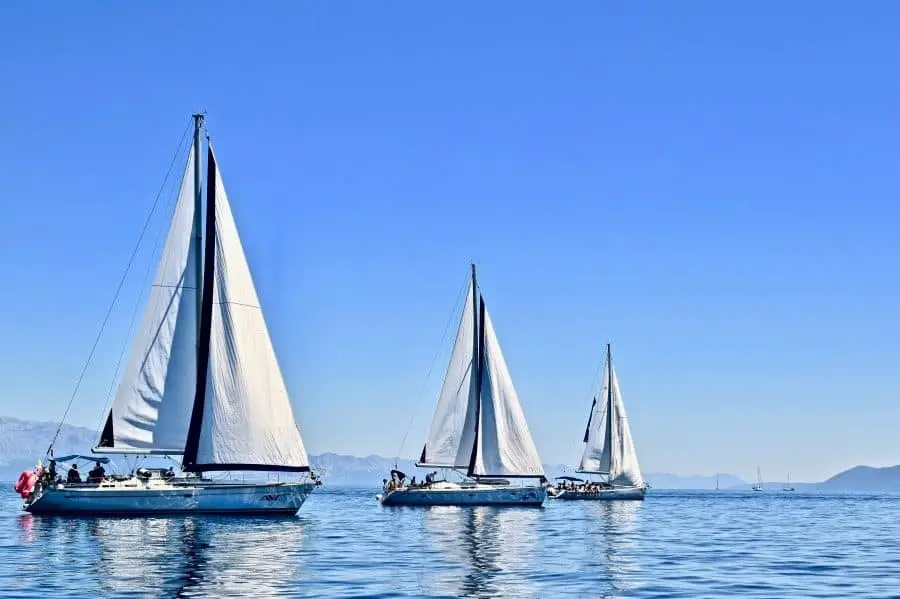
There’s a massive amount of sailing terms that any sailor will eventually learn with time and it can seem daunting essentially learning a new language.
Need to know sailing terminology will help you out when communicating with your crew members and captains of other vessels, so having a sailing terminology list handy can do a lot of good.
That’s why I put together this list of common sailing terms that’ll help you out the next time you head out on the water.
Aback – A foresail when against the wind, used when tacking to help the vessel turn. Abaft – Toward the stern, relative to some object. Abeam – On the beam, a relative bearing at right angles to the ship’s keel. Aboard – On or in a vessel. Adrift – A boat drifting without being propelled. Aft – At or towards the stern or behind the boat. Aground – A boat whose keel is touching the bottom. Amidships – The middle section of a vessel with reference to the athwartships plane, as distinguished from port or starboard. Apparent wind – The wind felt aboard a moving boat. Astern – Behind the stern of the boat. Athwartships – Across the boat from side to side.
Backstay – The standing rigging running from the stern to the top of the mast, keeping the mast from falling forward. Bail – To empty the boat of water. Ballast – Weight in the keel of a boat that provides stability. Barometer – An instrument that measures air pressure, an aid to forecasting the weather. Batten – A thin wood or fiberglass slat that slides into a pocket in the leech of a sail, helping to maintain an aerodynamic shape. Beam – The width of a boat at its widest point. Beam reach – Sailing in a direction at approximately 90 degrees to the wind. Bear away – To “fall off” or head away from the wind. Bearing – The direction from one object to another expressed in compass degrees. Beating – A course sailed upwind. Below – The area of a boat beneath the deck. Bend – To attach a sail to a spar or a headstay or to attach a line to a sail. Bight – A loop in a line. Bilge – The lowest part of a boat’s interior where water on board will collect. Bitter end – The end of a line. Blanket – To use the sail or object to block the wind from filling a sail. Block – A pulley on a boat. Boat hook – A pole with a hook on the end used for grabbing hold of a mooring or retrieving something that has fallen overboard. Boltrope – The rope that is sewn into the foot and luff of some mainsails and the luff of some jibs by which the sails are attached to the boat. Boom – The spar extending directly aft from the mast to which the foot of the mainsail is attached. Boom vang – A block and tackle system, which pulls the boom down to assist sail control. Bottom – The underside of a boat. Bow – The forward part of the boat. Bowline – A line running from the bow of the boat to the dock or mooring. Bow spring – A line running from the bow of the boat parallel to the dock or mooring that stops the boat from moving forward along the dock. Bowline – A knot designed to make a loop that will not slip and can be easily untied. Breast line – A short line leading directly from the boat to the dock. Broach – An uncontrolled rounding up into the wind, usually from a downwind point of sail. Broad reach – Sailing in a direction with the wind at the rear corner (the quarter) of the boat. Approximately 135 degrees from the bow of the boat. Bulkhead – A wall that runs athwartships on a boat, usually providing structural support to the hull. Buoy – A floating navigation marker. Buoyancy – The ability of an object to float. Bulwark – A solid side wall, often about waist high, from the outside edge of the deck to prevent someone from falling overboard. Burdened vessel – The vessel required to give way for another boat when the two may be on a collision course. By the Lee – A sailboat running with the wind coming over the same side of the boat as the boom.
Cabin – The interior of the boat. Can – In the U.S., it’s an odd-numbered green buoy marking the left side of the channel when returning to harbor. Capsize – To tip or turn a boat over. Cast off – To release a line when leaving a dock or mooring. Catamaran – A twin-hulled vessel with a deck or trampoline between the hulls. Catboat – A boat with only a mainsail and an unstayed mast located at the bow. Centerboard – A pivoting board that can be lowered and used like a keel to keep a boat from slipping to leeward. Centerline – The midline of the boat running from bow to stern. Chafe – Wear on a line caused by rubbing. Chainplates – Strong metal plates which connect the shrouds to the boat. Channel – A (usually narrow) lane, marked by buoys, in which the water is deep enough to allow a vessel safe passage. Chart – A nautical map. Charter – To rent a boat. Chock – A guide mounted on the deck through which dock lines and anchor rode are run. Chop – Rough, short, steep waves. Cleat – A nautical fitting that is used to secure a line. Clew – The lower aft corner of a sail. The clew of the mainsail is held taut by the outhaul. The jib sheets are attached to the clew of the jib. Close hauled – The point of sail that is closest to the wind when the sails are hauled close to the centerline of the boat. Close reach – Sailing in a direction with the wind forward of the beam (about 70o from the bow). Coaming – The short protective wall that surrounds the cockpit or hatch. Cockpit – The lower area of the deck in which the steering and sail controls are located. Coil – To loop a line neatly so it can be stored, or a reel of line. Come about – To alter course so as to cause the bow of the boat to pass through the eye of the wind. Companionway – The steps leading from the cockpit or deck to the cabin below. Compass – The magnetic instrument which indicates the direction in which the boat is headed. Compass rose – The circles on a chart which indicate the direction of true and magnetic north. Course – The direction in which the boat is being steered. Crew – Besides the skipper, anyone on board who helps run the boat. Cunningham – A line running through a grommet a short distance above the tack of the mainsail which is used to tension the luff of the main. Current – The horizontal movement of water caused by tides, wind, and other forces. Cutter – A single-masted boat rigged with both jib and staysail.
Daysailer – A small sailboat. Dead downwind – Sailing in a direction straight downwind. Deck – The mostly flat area on top of the boat. De-power – Reducing the power in the sails by luffing, easing the sheets, or stalling. Dinghy – A small sailboat or rowboat. Displacement – The weight of the boat; therefore the amount of water that it displaces. Dock – The quay or pontoon where a boat may be tied up. Dockline – A line used to secure a boat to the dock. Dodger – A canvas protection in front of the cockpit of some boats that are designed to keep spray off the skipper and crew. Downhaul – A line used to pull down on the movable gooseneck on some boats to tension the luff of the mainsail. Draft – The depth of a boat’s keel from the surface of the water.
Ease – To let out a line or sail. Ebb – An outgoing tide.
Fairlead – A fitting that guides sheets and other lines in a way that reduces friction and therefore chafe. Fairway – The center of a channel. Fake – Lay out a line on the deck using large loops to keep it from becoming tangled. Fall off – Alter course away from the wind. Fast – To secure something. Fathom – A measure of the depth of water. One fathom equals six feet. Fender – An inflated rubber or plastic bumper used to protect a boat by keeping it from hitting the dock. Fend off – To push off. Fetch – The distance of open water to windward between the shore and the boat. Fid – A tapered spike used to open the lay of a rope when splicing. Flood – An incoming tide. Following sea – Wave pattern hitting the stern of the boat. Foot – The bottom edge of the sail. Fore – Another word for “forward”. Forepeak – An accommodation or storage area in the bow below the deck. Foresail – A jib or genoa. Forestay – The standing rigging running from the bow to the mast top and to which the foresail is secured. Forward – Towards the bow. Fouled – Another word for “tangled”. Fractional rig – When the forestay is attached to the mast some distance below the top. Foul weather gear – Water resistant clothing. Freeboard – The height of the hull above the water’s surface. Full – Not luffing. Furl – To fold or roll up a sail.
Gaff – On some boats, a spar along the top edge of a four-sided fore and aft sail. Genoa – A large foresail whose clew extends aft of the mast. Give way vessel – The vessel required, by the regulations, to give way in a collision situation. G.M.T. – Greenwich Mean Time. The time at the prime meridian in Greenwich, London, England. Now referred to as Universal Time Coordinated U.T.C. Gooseneck – The strong fitting that connects the boom to the mast. Great Circle – A line drawn on a chart which is accurate over a long distance, a section of the Earth which intersects the center of the Earth. Grommet – A reinforcing ring set in a sail. Ground tackle – Collective term for the anchor and rode (chain and line). Gudgeon – A fitting attached to the stern into which the pintles of a rudder are inserted. Gunwale – The edge of the deck where it meets the topsides. Gybe – Another alternative spelling of “jibe”.
Halyard – A line used to raise or lower a sail. Hank – A snap hook which is used to secure the luff of a foresail to the forestay. Hard a-lee – The call given to the crew that will initiate the action of tacking. Hard over – To turn the helm or tiller as far as possible in one direction. Hatch – A large covered opening in the deck. Haul in – To tighten a line. Head – The toilet on a boat as well as the top corner of a sail. Headboard – The small reinforcing board affixed to the head of a sail. Headed – A wind shift which causes the boat to head down or causes the sails to be sheeted in. Heading – The direction of the boat expressed in degrees. Head down – Changing course away from the wind. Head off – Another word for “head down”. Head up – Changing course towards the wind. Headsail – A jib/genoa attached to the forestay. Headstay – The standing rigging running from the bow to the top of the mast. Head to wind – When the bow of the boat is dead into the wind. Headway – Forward progress. Heave – To throw. Heave to – To hold one’s position in the water by using the force of the sails and the rudder to counteract each other. Holding ground – The seabed or bottom ground in an anchorage. Hove to – A boat that has completed the process of heaving to with its aback, its main trimmed, and its rudder positioned to hold the vessel close to the wind. Heavy weather – Strong winds and large waves. Heel – The lean of the boat caused by the wind. Helm – The tiller. Helmsman – The person responsible for steering the boat. Hull – The body of the boat, excluding the rig and sails. Hull speed – The theoretical maximum speed of a sailboat determined by the length of its waterline.
Inboard – Inside of the rail of the boat. In irons – A boat that is head to wind and unable to move or maneuver.
Jackstay – A wire or webbing strap attached at the front and back of a vessel along the deck to which a safety harness line may be clipped. Jib – The small forward sail of a boat that is attached to the forestay. Jibe – To change the direction of the boat by steering the stern through the wind. Jibe oh – The command given to the crew when starting a jibe. Jiffy reef – A quick reefing system allowing a section of the mainsail to be pulled down and tied to the boom. Jury rig – An improvised temporary repair.
Kedge – A smaller anchor than the main or bower anchor. Often used for maneuvering or kedging off. Kedge off – To use an anchor to pull a boat into deeper water after it has run aground. Keel – The heavy vertical fin beneath a boat that helps keep it upright and prevents it from slipping sideways in the water. Ketch – A two-masted sailboat on which the mizzen (after) mast is lower than the mainmast and is located forward of the rudderpost. Knockdown – A boat heeled so far that one of its spreaders touches the water. Knot – One nautical mail per hour.
Land breeze – A wind that blows over the land and out to sea. Lash – To tie down. Lay – To sail a course that will clear an obstacle without tacking. Lazarette – A storage compartment built into the cockpit or deck. Lazy sheet – The windward side jib sheet that is not under strain. Lead – To pass a line through a fitting or block. Lee helm – The boats tendency to turn away from the wind. Lee shore – Land which on the leeward side of the boat. Leech – The after edge of a sail. Leeward – The direction away from the wind that is the direction that the wind is blowing to. Leeward side – The side of the boat or sail that is away from the wind. Leeway – The sideways slippage of the boat in a downwind direction. Lifeline – Rope or wire supported by stanchions. Lift – The force that results from air passing by a sail or water past a keel that moves the boat forward and sideways. Line – A rope. L.O.A. – The maximum Length Overall fore and aft along the hull. Lubber line – A line on a magnetic compass to help the helmsman steer the correct course. Luff – The leading edge of a sail as well as the fluttering of a sail caused by aiming too close to the wind. Lull – A decrease in wind speed for a short duration. L.W.L. – The length fore and aft along the hull measured at the waterline.
Magnetic – In reference to the magnetic north rather than true north. Mainmast – The taller of two masts on a boat. Mainsail – The sail hoisted on the mast of a sloop or cutter or the sail hoisted on the mainmast of a ketch or yawl. Mainsheet – The controlling line for the mainsail. Marlinspike – A pointed tool used to loosen knots. Mast – The vertical spar in the middle of a boat from which the mainsail is set. Masthead – The top of the mast. Maststep – The fitting in which the foot of the mast sits. Mizzen – The small aftermost sail on a ketch or yawl hoisted on the mizzenmast. Mizzenmast – The shorter mast aft of the main mast on a ketch or yawl. Mooring – A permanently anchored ball or buoy to which a boat can be tied.
Nautical mile – Standard nautical unit of distance equal to one minute of arc of the Earth’s latitude or 6080 feet. Navigation rules – Laws established to prevent collisions on the water. No-go zone – An area into the wind in which a sailboat cannot produce power to sail. Nun – A red even numbered buoy marking the right side of a channel when returning to port.
Offshore wind – Wind blowing away from the shore and out to sea. Offshore – Away from or out of sight of land. Off the wind – Not close-hauled point of sail. On the wind – Sailing upwind in a close-hauled point of sail. Outboard – Outside the rail of a boat. Outhaul – The controlling line attached to the clew of a mainsail used to tension the foot of the sail. Overpowered – A boat that is heeling too far because it has too much sail up for the amount of wind.
Painter – The line attached to the bow of a dinghy. Pay out – To ease a line. P.F.D. – A Personal Flotation Device such as a life jacket. Pinching – Sailing too close to the wind. Pintle – Small metal extension on a rudder that slides into a gudgeon on the transom. Point – To steer close to the wind. Points of sail – Boat direction in relation to the wind. Port – The left-hand side of the boat when facing forward, a harbor, or a window in a cabin on a boat. Port tack – Sailing on any point of sail with the wind coming over the port side of the boat. Prevailing wind – Typical or consistent wind direction. Puff – An increase in wind speed. Pulpit – A guardrail at the bows of a vessel.
Quarter – The sides of the boat near the stern.
Rail – The outer edges of the deck. Rake – The angle of the mast. Range – The alignment of two objects that indicate the middle of a channel. Reach – One of the several points of sail across the wind. Ready about – The command given to the crew to prepare to tack. Ready to jibe – The command given to the crew to prepare to jibe. Reef – To reduce the area of a sail. Reeve – To pass a line through a ring or block. Rhumb line – A straight line drawn on a Mercator chart, which intersects all meridians at the same angle. Rig – The design of a boat’s masts, standing rigging and sail plan. Rigging – The wires and lines used to support and control sails. Roach – The sail area aft of a straight line running between the head and clew of a sail. Rode – The line and chain attached from the boat to the anchor. Roller-furling – A mechanical system to roll up a headsail around the headstay. Rudder – A vertical blade attached to the bottom of the hull which is used to steer the boat. Run – Point of sailing when the wind is coming from dead astern. Running rigging – The lines used to control the sails.
Sail ties – Lengths of line or webbing used to secure sails when they are dropped or to secure the unused portion of a reefed sail. Schooner – A two-masted boat whose foremast is the same height or shorter than its mainmast. Scope – The length of anchor rode paid out in relation to the maximum depth of water. Scull – To propel a boat with a single oar fixed in a notch through the transom. Scupper – A cockpit or deck drain. Sea breeze – A wind that blows from the sea onto the land. Seacock – A valve which opens and closes a hole used as an intake or discharge from the boat. Secure – The make safe or tie down. Set – The direction of the current as well as to trim the sails. Shackle – A metal fitting at the end of a line used to attach the line to a sail or another fitting. Shake out – To remove a reef. Sheave – The wheel inside a block or fitting over which the line runs freely. Sheet – A line used to control a sail by pulling it in or easing it out. Shoal – An area of shallow water. Shroud – Standing rigging at the side of the mast. Singlehanded – Sailing alone. Skeg – A vertical fin in front of the rudder. Sloop – A single-masted sailboat with mainsail and headsail. Sole – The floor in a cockpit or cabin. Spar – A pole used to attach a sail on a boat, for example, the mast, the boom, or a gaff. Spinnaker – A large downwind headsail not attached to the head stay. Splice – The joining of two lines together by interweaving their strands. Spreader – A support strut extending athwartships from the mast used to support and guide the shroud from the top of the mast to the chainplate. Spring line – A dock line running forward or aft from the boat to the dock to keep the boat from moving fore or aft. Squall – A fast moving short intense storm. Stanchions – Stainless steel or aluminum supports at the edge of the deck which holds the lifelines. Standing rigging – The permanent rigging of a boat, including the forestay, backstay, and shrouds. Starboard – The right-hand side of the boat when looking forward from the stern. Starboard tack – Sailing on any point of sail with the wind coming over the starboard side of the boat. Stay – A wire support for a mast, part of the standing rigging. Staysail – Any sail which is attached to a stay. Steerage way – The minimum speed of the boat through the water that allows the rudder to function efficiently. Stem – The foremost tip of the boat. Stern – The aft part of the boat. Stern spring – A line running from the stern of the boat parallel to the dock or mooring that stops the boat from moving backward along the dock. Stow – To store properly. Swamped – Filled with water.
Tack – To alter course so as to cause the bow of the boat to pass through the eye of the wind. Tackle – A series of blocks and line that provide a mechanical advantage. Tail – To hold the end of a line so as to keep it under tension on a winch. Telltales – Short lengths of yarn or cloth attached to the sails which indicate when the sail is properly trimmed. Tide – The rise and fall of water level due to the gravitational effects of the sun and the moon. Tiller – A long handle attached to the rudder which is used to steer the boat. Toe rail – A low rail around the outer edge of the deck. Topping lift – A line used to hold the boom up when the mainsail is lowered or stowed. Topsides – The sides of a boat between the waterline and the deck. Transom – The vertical surface of the stern. Trim – To adjust the sail controls to create optimum lift from the sails. Trimaran – A three-hulled vessel. True wind – The actual speed and direction of the wind as you would feel when standing still. Tune – To adjust the boats standing rigging. Turnbuckle – A mechanical fitting attached to the lower ends of stays allowing the standing rigging to be adjusted.
Underway – A boat that is not attached to the ground by either anchor or mooring lines. Upwind – Towards the direction of the wind. U.S.C.G. – United States Coast Guard. U.T.C. – Universal Time Coordinated. As the modern term for Greenwich Mean Time, this is the standard reference time which is used internationally for navigational information.
Vang – A block and tackle system, which pulls the boom down to assist sail control. Veer – A clockwise change in the wind direction. Vessel – Any sailboat, powerboat, or ship.
Wake – Waves caused by a boat moving through the water. Waterline – The horizontal line on the hull of a boat where the surface of the water should be. Weather helm – The tendency of the boat to head up towards the wind, this increases as the sailboat becomes overpowered. Whip – To bind together the strands at the end of a line. Whisker pole – A pole temporarily mounted between the mast and the clew of the jib. Used to hold the sail out and keep it full when sailing downwind. Winch – A deck-mounted drum with a handle offering a mechanical advantage when used to trim sheets. Windward – Towards the wind. Windward side – The side of the boat closest to the wind. Wing-and-wing – Sailing downwind with the jib set on the opposite side to the mainsail. Working sails – The mainsail and the standard jib. Working sheet – The leeward sheet that is under tension.
Yard – The horizontal spar from which a square sail is suspended. Yawl – A two-masted vessel on which the mizzenmast is mounted aft of the rudderpost.
Get the very best sailing stuff straight to your inbox
Nomadic sailing.
At Nomadic Sailing, we're all about helping the community learn all there is to know about sailing. From learning how to sail to popular and lesser-known destinations to essential sailing gear and more.
Quick Links
Business address.
1200 Fourth Street #1141 Key West, FL 33040 United States
Copyright © 2024 Nomadic Sailing. All rights reserved. Nomadic Sailing is a participant in the Amazon Services LLC Associates Program, an affiliate advertising program designed to provide a means to earn fees by linking to Amazon.com and affiliated sites.

Basic Sailing Terminology: Sailboat Parts Explained
Sailing is a timeless activity that has captivated the hearts of adventurous souls for centuries. But, let’s face it, for beginners, sailing can be as intimidating as trying to navigate through a dark, labyrinthine maze with a blindfold on. The vast array of sailing terminology, sailboat parts and jargon can seem like a foreign language that only the most experienced seafarers can comprehend.
Fear not, intrepid sailor, for this comprehensive guide on basic sailing terminology for beginners will help you navigate the choppy waters of sailing jargon with ease. From learning the difference between the bow and stern to mastering the intricacies of sail trim, this article will equip you with all the knowledge you need to confidently take to the seas. So hoist the mainsail, batten down the hatches, and let’s set sail on this exciting journey of discovery!
Parts of a Sailboat
Before you can begin your sailing adventure, it’s important to familiarize yourself with the different parts of a sailboat. From the sleek bow to the sturdy keel, each component plays a vital role in keeping your vessel afloat and propelling you forward through the waves.

- Hull The main body of the boat that sits in the water and provides buoyancy and stability.
- Bow The front of the boat that meets the water and helps to determine its direction.
- Stern The rear of the boat where the rudder and motor are located.
- Deck The flat surface of the boat that you stand on, which can include various features such as seating, storage compartments, and hatches.
- Cockpit The recessed area of the deck where the skipper and crew sit or stand while sailing, which allows for easy access to the sail controls and provides protection from the wind and waves.
- Keel The long, fin-shaped structure beneath the waterline that helps to keep the boat stable and upright.
- Rudder The flat, vertical surface located at the stern of the boat that is used to steer and control the direction of the boat.
- Tiller or wheel The mechanism used to steer the boat, either in the form of a tiller (a handle attached to the rudder) or a wheel (similar to the steering wheel of a car).
- Mast The tall, vertical pole that supports the sails and allows you to catch the wind and move through the water.
- Boom The horizontal pole extending off the bottom of the mast that holds the bottom edge of the mainsail.
- Mainsail The large, triangular-shaped sail attached to the mast and boom that captures the wind’s power to propel the boat forward.
- Jib The smaller, triangular-shaped sail attached to the bow that helps to steer the boat and balance the force of the mainsail.
- Rigging The network of ropes and cables that hold the mast and sails in place and help control their movement.
Sail Terminology
Understanding the terminology associated with sails is critical to becoming a successful sailor. Here are 12 of the most important sail terms you should know, along with brief explanations for each:

- Luff The forward edge of a sail that is attached to the mast, allowing you to adjust the sail’s shape and angle to catch more wind.
- Leech The aft edge of a sail that is attached to the boom, which helps to control the sail’s shape and release the wind as needed.
- Foot The lower edge of a sail that is attached to the boom, which helps to control the sail’s shape and power.
- Head The top of a sail that is attached to the mast and controls the sail’s overall shape and angle.
- Battens The long, thin strips inserted into the pockets of a sail to help maintain its shape and stiffness.
- Clew The bottom corner of a sail that is attached to the boom or sheet, which helps to control the sail’s shape and power.
- Tack The bottom forward corner of a sail that is attached to the boat or a line, which helps to control the sail’s shape and power.
- Sail Area The total area of a sail, which is measured in square feet or meters.
- Sail Draft The curve or depth of a sail, which affects its performance and power.
- Sail Shape The overall form and contour of a sail, which is critical for catching the wind effectively.
- Reefing The process of reducing the sail area by partially lowering or folding the sail, which can be necessary in strong winds or heavy seas.
- Furling The process of rolling or folding a sail to reduce its size or stow it away, which is often used when entering or leaving port or in rough conditions.
Wind Direction and Sail Positioning
Understanding wind direction and sail positioning is crucial for successful sailing. Here are the key terms you need to know:
Types of Wind

- Apparent Wind The wind that is felt on the boat, which is a combination of the true wind and the wind generated by the boat’s movement.
- True Wind The actual direction and strength of the wind.
Points of Sail
You can find a detailed explanation of the points of sail here

- Close-Hauled Sailing as close to the wind as possible, with the sail set at a sharp angle to the boat.
- Beam Reach Sailing perpendicular to the wind, with the sail set at a right angle to the boat.
- Broad Reach Sailing with the wind at a diagonal angle behind the boat, with the sail angled away from the boat.
- Running Sailing directly downwind, with the sail on one side of the boat.
Other Terms
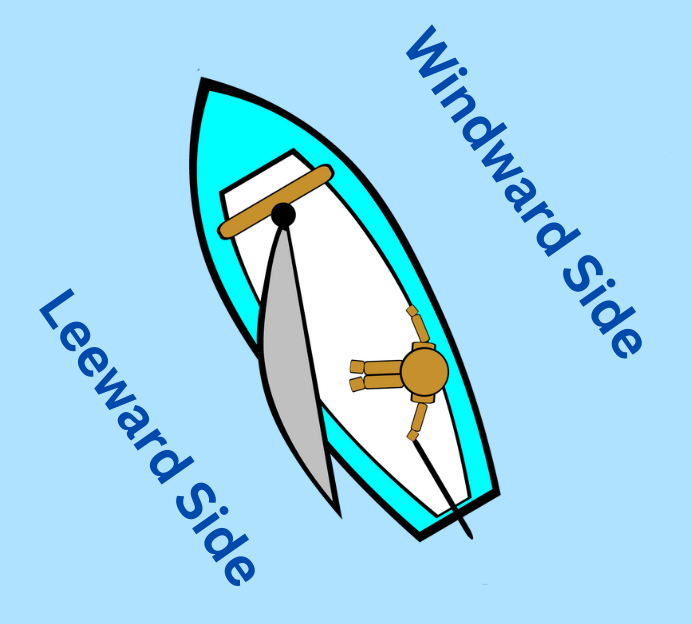
- Windward The side of the boat that is facing the wind.
- Leeward The side of the boat that is sheltered from the wind.
- Sail Trim Adjusting the sail and rigging to maximize the power and efficiency of the sailboat.
Navigation Terminology
Navigating a sailboat requires an understanding of a variety of nautical terms. Here are some of the most important terms you should know:
- Starboard Side The right side of a boat
- Port Side The left side of a boat
- Compass A device used for determining the boat’s heading or direction.
- Bearing The direction from the boat to a specific point on land or water.
- Chart A map or nautical publication that displays water depths, navigational aids, and other important information for safe navigation.
- Latitude The angular distance between the equator and a point on the earth’s surface, measured in degrees, minutes, and seconds.
- Longitude The angular distance between the prime meridian and a point on the earth’s surface, measured in degrees, minutes, and seconds.
- Course The direction in which the boat is traveling.
- Plotting The process of marking a course on a chart or map.
- Waypoint A specific point on a navigational chart or map that serves as a reference point for plotting a course.

- Tacking This maneuver involves turning the bow of the boat through the wind in order to change direction. To tack , the sailor will turn the helm towards the wind until the sails begin to luff, then quickly steer the boat in the opposite direction while adjusting the sails to catch the wind on the new tack.
- Jibing This maneuver is similar to tacking, but involves turning the stern of the boat through the wind. To jibe, the sailor will steer the boat downwind until the sails begin to luff, then quickly turn the stern of the boat in the opposite direction while adjusting the sails to catch the wind on the new tack.
- Heading up This maneuver involves turning the boat closer to the wind in order to sail upwind. To head up, the sailor will turn the helm towards the wind while simultaneously trimming the sails in to maintain speed and prevent the boat from stalling.
- Falling off This maneuver involves turning the boat away from the wind in order to sail downwind. To fall off, the sailor will steer the helm away from the wind while simultaneously easing the sails out to catch more wind and accelerate the boat.
- Docking This maneuver involves bringing the boat alongside a dock or other fixed object in order to moor or disembark. To dock, the sailor will typically approach the dock at a slow speed while using lines and fenders to control the boat’s position and prevent damage.
Knots and Lines
Learning the right knots and lines to use is essential for any sailor. Here are some of the most important knots and lines to know:
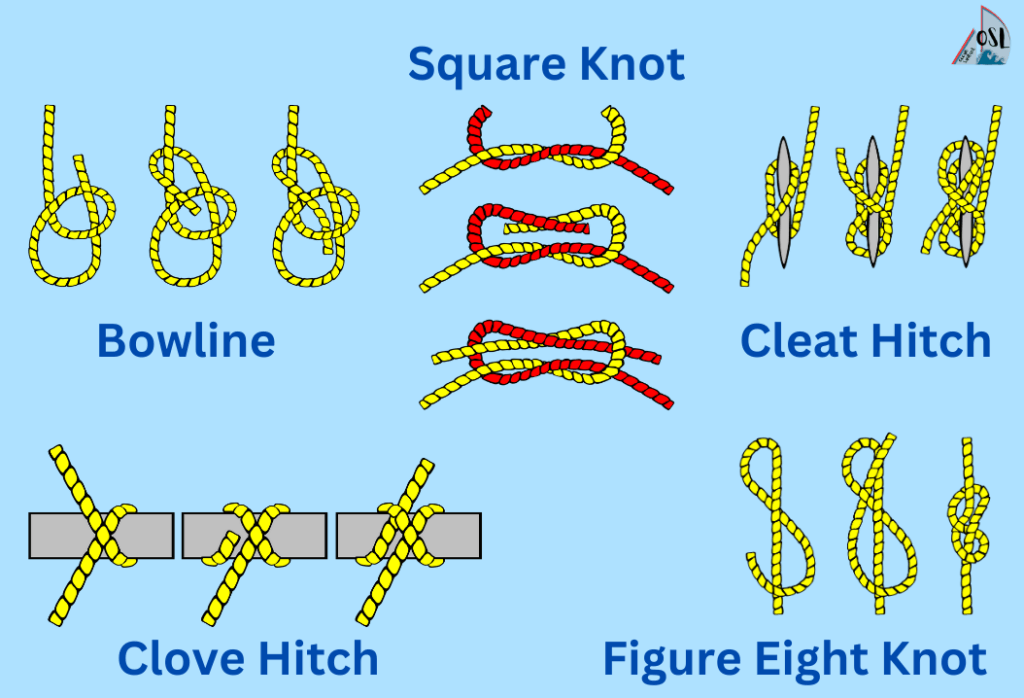
- Bowline This is a versatile knot used for many purposes, including attaching a line to a fixed object, such as a mooring or cleat.
- Square Knot A simple knot used to join two lines of the same diameter.
- Clove Hitch A quick and easy knot for attaching a line to a post or piling.
- Figure-Eight Knot A knot used to stop the end of a line from unraveling.
- Cleat Hitch A knot used to secure a line to a cleat.
- Sheet Bend A knot used to join two lines of different diameters.

- Main Halyard A line used to raise the mainsail.
- Jib Sheet A line used to control the angle of the jib.
- Mainsheet A line used to control the angle of the mainsail.
- Jib Furling Line A line used to furl the jib.
Sailing Safety
- Personal Flotation Devices (PFDs) These are the life jackets or vests that you must wear when on board to ensure your safety. Choose a PFD that fits you properly and is appropriate for your body weight.
- Tethers and Harnesses These are designed to keep you attached to the boat and prevent you from falling overboard. Make sure to clip yourself onto the boat when you’re on deck or going up to the mast.
- Man Overboard ( MOB ) Drill This is a critical safety procedure to practice with your crew. Learn how to quickly identify and recover someone who has fallen overboard.
- Emergency Position Indicating Radio Beacon (EPIRB) An EPIRB sends a distress signal and your location to rescue services in an emergency. Make sure it’s properly registered and in good working condition.
- Navigational Lights Ensure your boat has the required navigational lights and know how to use them properly. These lights help other boats see you in low-light conditions.
Remember that safety is always the top priority when sailing, and it’s essential to take it seriously.
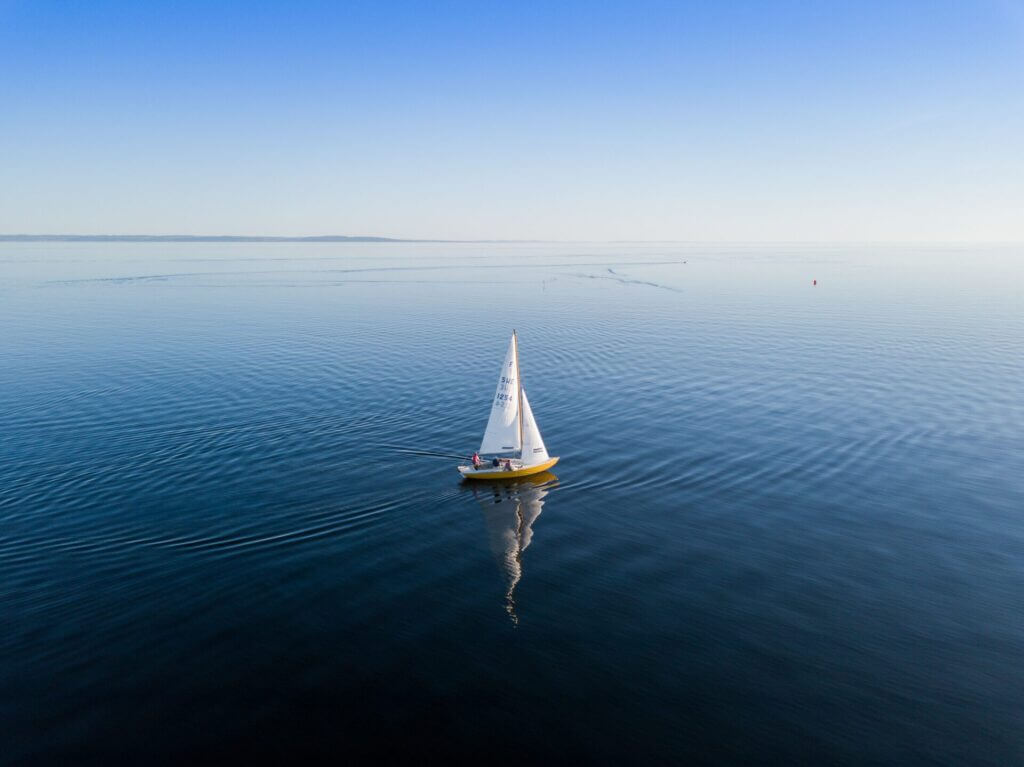
Sailing Terminology Conclusion
As we come to the end of our sailing terminology crash course, it’s important to remember that the world of sailing is vast and varied. Learning even the basics can be a daunting task, but with practice and perseverance, you’ll be able to hoist your sails and set a course for adventure.
Whether you’re a seasoned sailor or just starting out, understanding the terminology is crucial to ensure a safe and enjoyable voyage. From the parts of the boat to the knots and lines, each aspect plays a significant role in the overall sailing experience.
So, as you prepare to embark on your next sailing adventure, keep in mind the importance of safety, navigation, and proper etiquette on the water. And remember, when all else fails, just hoist the Jolly Roger and hope for the best! (Just kidding, don’t actually do that.) Happy sailing!
What is the difference between apparent wind and true wind?
Apparent wind is the wind felt by the sailor on the boat, while true wind is the wind direction and speed relative to the ground.
What are the points of sail?
The points of sail are the directions that a sailboat can travel in relation to the wind. They include upwind, close-hauled, beam reach, broad reach, and downwind.
What does it mean to be “on a reach”?
Being “on a reach” means sailing with the wind coming from the side of the boat, at a perpendicular angle to the boat’s direction.
What is tacking?
Tacking is the maneuver used to turn the boat’s bow through the wind, allowing the boat to change direction while still sailing upwind.
What is jibing?
Jibing is the maneuver used to turn the boat’s stern through the wind, allowing the boat to change direction while sailing downwind.
What is the difference between windward and leeward?
Windward is the side of the boat that is facing into the wind, while leeward is the side of the boat that is sheltered from the wind.
What is a boom vang?
A boom vang is a line used to control the position of the boom, which helps control the shape and position of the sail.
What is a cleat?
A cleat is a device used to secure a line to the boat, allowing the sailor to adjust the tension of the line without having to hold onto it constantly.
What is a winch?
A winch is a mechanical device used to control lines and adjust sails. It typically consists of a drum and handle that can be turned to wind or unwind a line.
Similar Posts
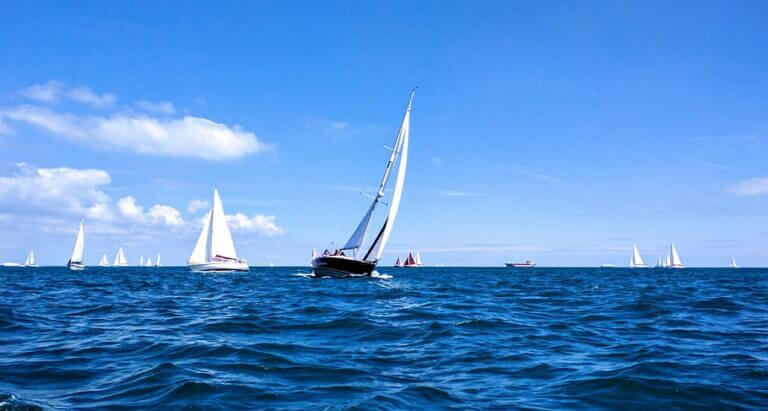
10 reasons why sailing is the best way to travel
Are you feeling restless and looking for a new way to explore the world? Tired of being cooped up in airplanes, trains, or cars for hours on end? Well, why not try something different and embark on a sailing adventure? While I may not be a seasoned sailor myself, I can tell you that there’s…
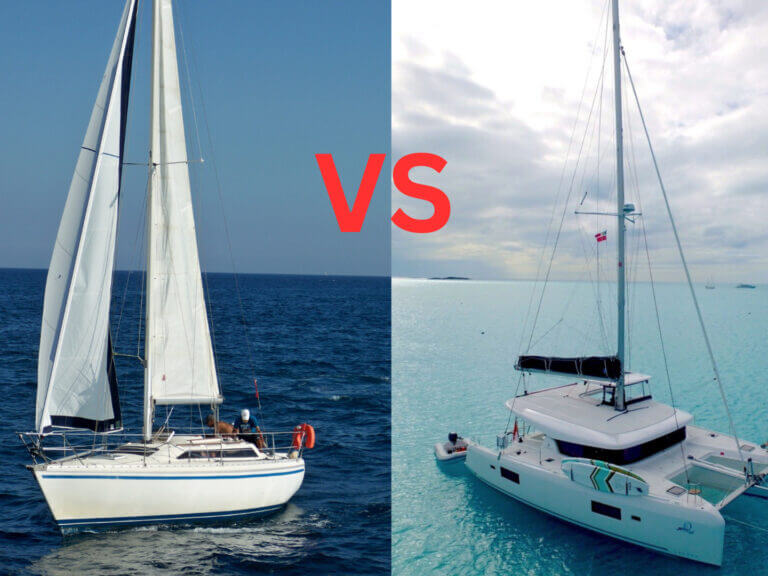
Monohulls vs. Catamarans: Which One is Best for You?
If you’re considering purchasing a sailboat, you might be wondering which type of vessel is best suited for your seafaring adventures. Fear not, for we’re here to help you weigh the differences between monohulls vs. catamarans to make an informed decision. Now, before we dive into the nitty-gritty details of hull design, sail handling, and…

9 Essential GPS Navigation Tips for Sailing
Sailing is an exhilarating experience that offers an escape from the hustle and bustle of everyday life. However, navigating the open water can be challenging, especially when it comes to staying on course and avoiding potential hazards. That’s where GPS navigation comes in. GPS technology has revolutionized sailing, making it easier and safer than ever…
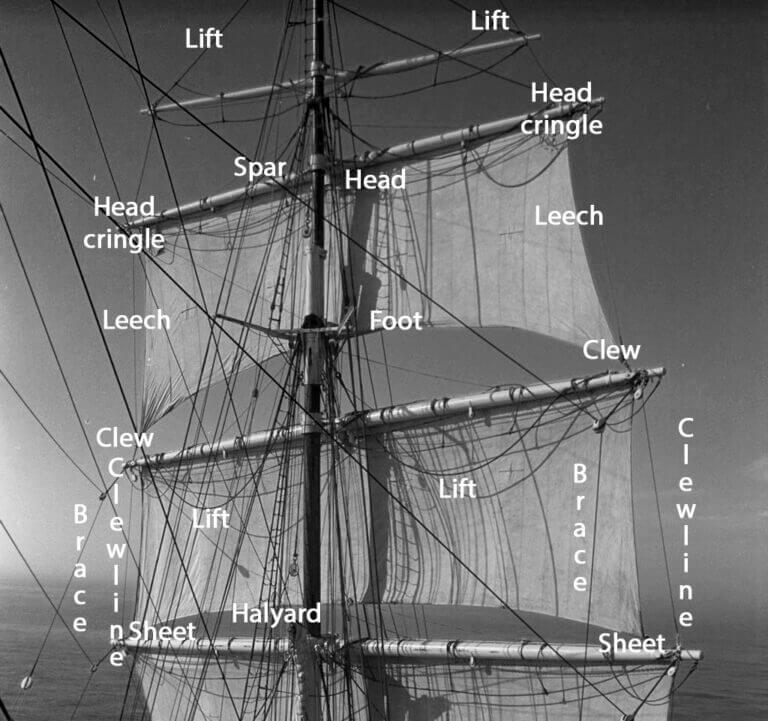
Whats the Difference between Standing Rigging and Running Rigging?
Running rigging refers to the movable lines and ropes used to control the position and shape of the sails on a sailboat. Standing rigging, on the other hand, refers to the fixed wires and cables that support the mast and keep it upright. As the sun rises on another day, we find ourselves immersed in…

What is Tacking? How to Tack and Commands
The world of sailing is vast and complex, with numerous techniques and concepts to grasp. However, one skill that should not be overlooked is tacking. In this article, we will delve into the intricacies of tacking, providing you with a comprehensive guide on how to tack a sailboat like a seasoned sailor. Understanding Tacking What…

The 6 Points of Sail: Diagram of Wind Direction and Sail Trim
Points of sail are the different angles at which a sailboat can sail in relation to the wind. Understanding these points is crucial for anyone who wants to learn how to sail, and it’s usually taught in sailing schools. Each point has its own characteristics that determine the boat’s speed and direction. The main points…

Get Onboard
Superyacht Training
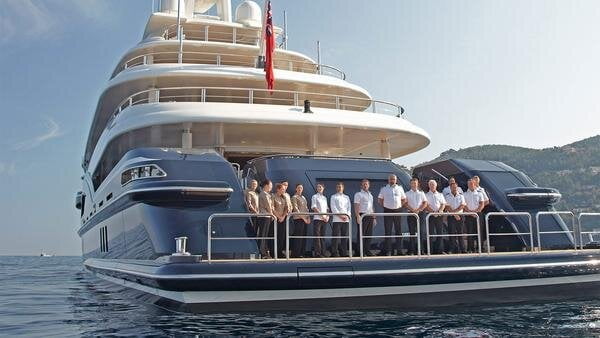
Yachting Terms Cheat Sheet for Yachting Newbies
Getting to grips with yachting terms can be quite imtimidating if you’ve never had any contact with boats or yachts and are generally new to the yachting world so we developed this cheat sheet for you. There will be quite a few terms you will learn during your journey, but there are some basics you’re expected to know before setting foot on deck.
Parts of the Yacht
Aft deck : deck located at the rear of the boat
Stern/Aft : back of the boat
Bow : front of the boat
Port : left side of a yacht
Starboard : right side of a yacht
Sun deck : the usually upper deck of a ship that is exposed to the most sun
Bridge/Wheelhouse : the bridge of a ship is the room or platform from which the ship can be commanded
Lazarette : A storage space in a boat’s stern area
Passerelle : The passageway you walk on from the dock to the yacht. Often incorrectly called a gangplank.

Rooms On Board
Crew quarters : where the crew sleep
Galley : kitchen
Head : bathroom/toilet
Saloon/Salon : living room
Staterooms/Cabins : guest bedrooms
Additional cheat sheet Terms
Aloft: Above deck in the rigging or mast.
Berth: typically is what your bed is called, and sometimes cabins are also referred to as ‘berths”, hower
To Berth : is also when you’re referring to parking the boat. “To berth” means to moor or dock a ship. The parking spot itself also happens to be called a berth. Confused yet?
Bearing: Direction to an object from your current position.
Buoy: (normally pronounced “boowie”, but sometimes “boy”). An anchored floating object that serves as a navigation aid or hazard warning.
Dinghy : A small boat that a yacht carries or tows. Used for transfers to and from shore, and short day cruises and, if powerful enough, water sports. Also typically called a tender on larger yachts.
Fenders : inflatable bumper usually placed between yacht and dock to prevent damage
Helm : steering wheel
Heel: To temporarily tip or lean to one side. This most often happens when changing directions.
Knots per hour : a measure of speed equal to one nautical mile (6076 feet) per hour
Line : rope used aboard a vessel
LOA (Length Over All): the length of the yacht from bow to stern in feet or meters
M/Y : commonly used in yachting to indicate a Motor Yacht
S/Y : commonly used in yachting to indicate a Sailing Yacht
Under Way : when the yacht is in motion
Watch : A division of crew into shifts
Weigh : To raise the anchor
The amount of terms you have to get used to may seem overwhelming at first, but you’ll very soon get to grips with them! If you have questions about yachting and, or yacht life aboard a luxury yacht, get in touch with us or consider buying our Ultimate Guide to Yacht Life that will give you a great intro and all the basics to start a career on a luxury yacht over and above this short cheat sheet.
Needing more?
Error: Contact form not found.
RYA/MCA Online
1. what are the basic requirements you need to be eligible to work in the yachting industry, 2. what is the stcw and why do i need it, 3. what is the eng1 medical certificate, 4. what land based experience will help me find a super yacht job, 5. what are the different departments onboard, 6. what crew training is required for me to work as a junior deckhand.
- Yachtmaster/Coastal Skipper Theory
- Yachtmaster/Coastal Practical
- Specialist Super Yacht Training Course (Deck Hand Training Course)
- RYA Power Boat Level II
- RYA Personal Watercraft Course
- RYA Competent Crew Certificate
- RYA Day Skipper Theory and Practical Certificates
- VHF Radio Operator’s License
7. What crew training is required for me to work as a junior stewardess?
- Stewardess Course
- Proficiency in Designated Security Duties (PDSD)
- MCA Food Safety Level 2
- RYA Powerboat Level 2
8. How do I book my training courses?
9. how do i get my first job on a yacht, 10. are these courses worth it, or am i just wasting my money, 11. will i get hired for my first job from south africa, 12. what is daywork, 13. what are the best locations to get a yacht job, 14. how much can a motor yacht stewardess or deckhand earn, 15. what are the negatives of working on a yacht, 16. what are the positives of working on a yacht, 17. is working on a super yacht for everyone, 18. what is the minimum age to work on a yacht, 19. is accommodation provided when i am completing my yacht training in cape town.

Mariners 936
Sailing terms 101: the basic vocabulary every new sailor should know.
- Learn About Mariners Sailing Program
Welcome to the exciting world of sailing! Whether you’re stepping onto a sailing vessel for the first time or refreshing your nautical vocabulary, understanding basic sailing terms is essential.
These terms enhance safety, improve communication on deck, and enrich your sailing experience. Let’s dive into the fundamental vocabulary every sailor should know, from “port tack” to “starboard tack” and beyond.
Understanding the Basics: Key Sailing Terms
A sailing vessel or sailing ship is any marine craft that uses sails as its primary means for propulsion. The left side of the boat when facing forward (toward the bow) is known as the “port side,” and the right side is the “starboard side.” Remembering these terms is crucial for identifying directions on the boat’s deck and when maneuvering around other vessels on the water.
Moving with the Wind: Tack Terms
In sailing, a “tack” refers to the direction a sailing vessel is moving relative to the wind. “Port tack” and “starboard tack” describe the boat’s direction based on whether the wind blows over the port side or starboard side of the boat. This distinction helps sailors determine the most effective way to harness the wind.
Orientation on the Water: Knowing Your Sides
The starboard side of a boat or sailing ship is not just a direction—it’s a vital reference point for rules of navigation, determining the boat’s position relative to other vessels, especially when changing direction or in heavy weather. Knowing your starboard side can help prevent collisions and aid in emergency maneuvers.
Commonly Used Sailing Terms Every Sailor Should Know
Terms like bow (the forward part of the vessel) and stern (the back part of the vessel) are fundamental. Understanding different points of sail such as beam reach (wind blowing across the boat) and close hauled (sailing as close to the wind as possible) is essential.
The anchor chain connects the anchor to the boat, ensuring stability over the sea floor, while the mooring line secures the boat when docked. Sails like the spinnaker, used for downwind sailing, and the mizzen, found on two-masted boats, are important for various sailing strategies.
Practical Tips for Learning Sailing Vocabulary
To effectively learn and remember these terms:
- Use flashcards that feature terms and their definitions.
- Engage in regular practice sessions on different types of sailing vessels.
- Join a sea scouts program like the Mariners Sea Scouts, where experienced crew members provide hands-on learning experiences in a real-world setting.
Mastering sailing terminology is about becoming a competent part of a crew that can effectively manage a boat in all conditions. These terms form the foundation of a skilled sailor’s vocabulary and are your first step toward confident sailing adventures.
Join The Mariners Sailing Program
Ready to put your knowledge to the test? Join the Mariners Sea Scouts session or participate in a sailing course to experience these terms in action. Subscribe to our blog for more insights into sailing, and don’t hesitate to reach out with questions or for further learning resources.
Related Posts

Sailing Lessons Dana Point: Expert Guidance and Tuition
Are you looking to introduce your children to the exciting world of sailing? There’s no better place to start than

Experience the Best of Maritime History at the Tall Ships Dana Point Festival
Tall Ships Festival Overview Celebrate California’s rich maritime history and connection to the ocean at the Tall Ships Dana Point
- +1-858-652-2046
Member Login
- Sailing Resources - Get Listed Today
- Destinations
- How-To Guides
- Fun & Entertainment
- Maintenance
- Personalities
- Food Recipes
- Drink Recipes
- Listings Directory
- Gear Reviews
Top 100 Essential Sailing Terms Every Crew Must Know

In the world of sailing, communication is key. The complex lingo utilized by sailors is far more than just jargon — it's an integral part of safe and effective teamwork. Here Cruisers Directory, we aim to help crew members brush up on sailing vernacular or beginners get a head start with our carefully curated list of the top 100 essential sailing terms everyone should know. Whether you are an experienced sailor or a complete novice, this comprehensive guide is your indispensable companion at sea.
1. Abeam: At a right angle to the length of the boat. 2. Aft: Towards the stern (back) of the ship. 3. Amidships: The middle section of a boat. 4. Anchorage: A designated area where vessels anchor. 5. Astern: Behind the boat. 6. Ballast: Weight added to the boat to increase stability. 7. Beam: The widest part of a boat. 8. Berth: The bed on a boat; also a slip in a marina. 9. Bilge: The lowest part of a boat's interior hull. 10. Binnacle: A casing on the deck that holds the ship’s compass. 11. Boom: The horizontal pole extending from the mast to hold the bottom of a sail. 12. Bow: The front part of the boat. 13. Bowsprit: A pole extending forward from the boat's bow, to which the forestays of a ship are fastened. 14. Broad Reach: Sailing with the wind coming from behind, and slightly to the side, of the boat. 15. Buoy: A floating device that can have many uses, as to mark a channel, anchor a boat or indicate position. 16. Capsize: When a boat turns over in the water. 17. Chart: A map used for navigation. 18. Cleat: A fitting to which lines are made fast. 19. Coaming: A raised lip around a hatch to prevent water entry. 20. Cockpit: Area towards the stern of the boat where the helm is. 21. Crew: The people who operate a ship. 22. Deckhand: A member of the crew who helps perform manual tasks on a boat. 23. Displacement: The weight of water displaced by a floating boat, giving the vessel's weight. 24. Doldrums: A nautical term referring to a calm sea with no wind. 25. Draught/Draft: The depth of water needed to float a vessel. 26. Ebb: The outgoing or falling tide. 27. Fathom: A measurement of depth in the sea (6 feet). 28. Fender: A cushioning device used to protect the boat. 29. Foresail: Any sail set forward of the main mast. 30. Freeboard: The distance from water to the lowest point of the boat's deck. 31. Galley: The kitchen on a boat. 32. Gybe/Jibe: To change direction when sailing downwind. 33. Halyard: A line (rope) for hoisting (raising) the sails. 34. Head: The bathroom on a boat. 35. Helm: The wheel or tiller controlling the rudder. 36. Hull: The main body of the boat. 37. Jib: A sail set forward of the mast. 38. Keel: The boat's backbone; a weighted structure at the bottom of the hull, giving the boat stability. 39. Knot: A measurement of speed equal to one nautical mile per hour. 40. Latitude: The distance north or south of the equator, measured in degrees. 41. Leeway: The sideways drift of the boat caused by wind or currents. 42. Longitude: The distance east or west of the prime meridian at Greenwich, England. 43. Main Sail: The primary and largest sail on a boat. 44. Mast: Vertical pole on a boat which holds the sails. 45. Mooring: An arrangement for securing a boat to a mooring buoy or a pier. 46. Nautical Mile: Distance measurement at sea, which is about 1.15 statute miles. 47. Navigation: The science of plotting a course for a boat. 48. Port: When facing forward, the left side of the boat. 49. Quartermaster: The person in charge of steering the ship. 50. Quay: A stone or concrete platform lying alongside water for loading and unloading ships. 51. Reef: To reduce the area of a sail. 52. Rudder: The steering device mounted at the stern of the ship. 53. Sail: Fabric attached to the mast that catches the wind and propels the boat. 54. Salon/Saloon: The living area in the boat, often part of the galley. 55. Seaworthy: A boat able to safely navigate through waters. 56. Skipper: The captain or master of a boat. 57. Starboard: When facing forward, the right side of the boat. 58. Stern: The back part of a boat. 59. Tack: To change the boat's direction by moving the bow through the wind. 60. Tender: A small boat used to ferry people and supplies to and from a larger boat. 61. Tide: The rise and fall of the ocean's surface. 62. Transom: The flat surface forming the stern of a boat. 63. Trim: Adjustment of the sails to optimize performance. 64. Vessel: Another name for a boat or ship. 65. Winch: A device used to pull in or let out ropes or cables. 66. Yacht: A pleasure boat, can be powered by wind, motor or both. 67. Yaw: The swaying motion of a boat moving from side to side off its course. 68. Zephyr: A light wind. 69. Hoist: To raise something, often a sail. 70. Leech: The aft (back) edge of a sail. 71. Jib Sheet: The line that controls the jib. 72. Bowline: A type of knot. 73. Clew: The lower corner of a sail. 74. Fluke: The part of the anchor that digs into the bottom. 75. Gimbal: A device that keeps an object level. 76. Hatch: An opening in the deck to the interior. 77. Heave: The vertical rise and fall of a boat. 78. Inboard: More towards the center of a vessel. 79. Kedge: A light anchor used in kedging or warping a boat. 80. Luff: The forward edge of a sail. 81. Pelorus: A navigational tool used to measure angles between objects. 82. Rhumb Line: A line on the earth's surface that cuts all meridians at the same angle. 83. Sloop: A one-masted sailing boat with a mainsail and jib rigged fore and aft. 84. Telltale: A piece of material attached to a sail to indicate wind direction. 85. Vang: A line used to control the boom's movement. 86. Waterline: Where the hull meets the surface of the water. 87. Xebec: An historic sailing ship with lateen sails used mostly in the Mediterranean Sea. 88. Yawl: A two-masted sailing vessel, similar to a ketch but with a smaller mizzen mast. 89. Zephyr: A light or west wind. 90. Figure Eight Knot: A stopper knot. 91. Genoa: A type of large jib or staysail which overlaps the main sail, sometimes eliminating it. 92. Impeller: The rotating part of a centrifugal pump. 93. Jackline: A line used to clip on a safety harness. 94. Ketch: A two-masted sailboat, the aft mast (mizzen) is shorter and set aft of the rudder post. 95. Log: A record of courses or operation. 96. Mizzenmast: The mast aft of a ship's mainmast. 97. Noon Sight: A sextant observation of the sun at noon to determine latitude. 98. Overboard: Over the side or out of the boat. 99. Pintle: The pin or bolt on which the rudder pivots. 100. Quarter: The sides of a boat between the stern and the midship.
Leave Comment Below
- Get Notified by Email for:
- Any New Comments
- Only Replies to My Comments
- Stop Following Comments
- Not a Registered User? Create Free User Account
- Are You a Local Business? List Your Company Now
Search Website
Recent reviews.

If you want the best sevice for your boat, Yanira is the best pers... View More

Overall a great restaurant. Kinda on a small scale, we heard so much ... View More
I've eaten wings in a lot of places including Buffalo. This place han... View More
This was last-minute stop for an early dinner and I’m glad we did! ... View More
- Finding sailing resources is easy by searching our trusted network of top-rated sailing resources.
- How It Works
- List Your Company
- Browse Categories
- Browse Locations
- Cruisers Directory
- All Rights Reserved
- Terms of Use
- Privacy Policy
Join Our Newsletter

Glossary of Nautical Terms: The Ultimate Guide to 500+ Boating and Sailing Terms
Navigating the world of boating and sailing requires a good understanding of many nautical terms. From the anatomy of a boat to the mechanics of sailing, there are many terms that any boater or sailor needs to know.
Knowing some basic nautical terms is vital for safety, effective communication, and mastering the art of boating and sailing, whether you’re a seasoned sailor or a novice.
In this article, we’ve gathered 500+ nautical terms to cover general boating and sailing jargon. Enhance your knowledge and sail with confidence!
Let’s dive into the fascinating language of boating!
Nautical terms list
A b c d e f g h i j k l m n o p q r s t u v w x y z.
Aback – when the wind strikes the sails from the opposite side of the vessel than intended (lee side).
Abaft – toward the stern or rear of the boat.
Abaft the beam – a point on the boat’s side or stern that is behind a line perpendicular to the beam, which is the widest part of the boat.
Abeam – at right angles to the centerline of a boat.
Aboard – on or in a boat.
Abreast – side by side.
Adrift – a boat that is floating without any propulsion or anchor holding it in place.
Aft – toward the back of the ship (stern).
Aground – a boat that has run aground or is stuck on a reef or sandbar.
Ahead – forward of the ship, in forward direction.
Ahoy – a nautical greeting used to call or draw attention.
back to top
Aids to Navigation – navigational tools such as lighthouses, buoys, and beacons, that supplement natural landmarks, to help boats navigate safely.
AIS – Automatic Identification System.
Alee – side of the boat that is sheltered from the wind, opposite to windward.
Aloft – overhead, above the deck of the boat. .
Amidship – at or near the middle part of the boat.
Anchor – a heavy object used to grip to the ground underwater and keep a boat in place.
Anchorage – a suitable place in a body of water where boats can anchor or moor.
Apparent wind – The perceived wind speed and direction experienced the crew on a moving boat.
ARPA – Automatic Radar Plotting Aid.
Astern – behind or towards the rear of a boat. Opposite to ahead.
Athwartships – perpendicular to the centerline of a ship or boat.
Aweigh – the position of an anchor when it is being lifted from the seabed.
Azimuth – horizontal angle between a fixed reference point and the direction or bearing of an object. Typically measured in degrees and clockwise direction.
Back a sail – process of reversing the direction of a sail in order to slow down or stop a boat.
Backstay – a wire or rope that supports the mast from the stern of the boat and prevents its forward movement.
Backwinded – when the wind hits a sail on the opposite side to which it was intended to be set.
Baggywrinkle – protective covering that is placed on the rigging of a sailing vessel to prevent wear and tear from the sails.
Bail – to remove water from a boat using a bucket or other container.
Bailers – devices used for removing water from a boat.
Bale – a large bundle or package of goods or supplies that are tightly bound together for storage or transportation on a boat.
Ballast – a heavy material that is placed in the hull of a ship or boat to increase its stability and control its buoyancy.
Ballast keel – type of keel designed to provide ballast to a sailing vessel, typically a sailboat or yacht.
Bar – a shallow area of water that forms at the entrance or exit of a harbor or river.
Barber hauler – a line or wire attached to the jib or spinnaker sheet used to adjust its angle.
Batten – a thin, flat piece of wood or metal used to reinforce a sail.
Batten down – to secure hatches and other openings on a boat to prevent water from entering.
Beam – the widest part of a boat, usually in the middle.
Beam reach – a point of sail where the wind is blowing perpendicular to the side of the sailboat.
Bear away / Bear off – to steer the boat away from the wind.
Bearing – compass direction of an object relative to the boat’s position and expressed in degrees from true or magnetic north.
Beat – to sail upwind by tacking back and forth (zigzag) at an angle to the wind.
Belay – to secure a rope or line to a cleat or other fitting to prevent it from running out.
Below – lower deck or level of a boat.
Bend – to tie or fasten a rope or line to an object, such as a sail or anchor, using a knot or hitch.
Berth – (1) a place in a harbor where a boat can be docked or moored. (2) a bed or sleeping area on a boat.
Bight – bend or loop in a rope.
Bilge – the lowest part of a boat’s hull where water that enters the boat collects.
Binnacle – a case that holds a boat’s compass.
Bitter end – the end or final part of a line or chain.
Blanketing – a tactical sailing maneuver where one boat blocks the wind from reaching another boat to slowing it down.
Block – a pulley used to change the direction or mechanical advantage of a rope.
Bluewater sailing – to sail on the open ocean as opposed to coastal or lake sailing.
Boat – a craft or vessel designed to float on water and typically propelled by oars, sails, or an engine. Can be used for transportation, recreation, or commercial purposes.
Boat hook – device used for reaching or pulling objects in the water, or for pushing off from docks or other boats.
Boatswain – (pronounced “bosun”) a crew member responsible for the maintenance of the boat and its equipment.
Bobstay – supporting wire stay that runs from the bow of a boat to the end of the bowsprit, helping to hold it steady and secure.
Bollard – a short, thick post used for securing ropes or cables on a ship or dock.
Bolt Rope – a rope sewn onto the edge of a sail, to attach the sail to the rigging of the boat.
Boom – horizontal spar that extends from the mast of a sailboat and holds the foot of the sail.
Boom Crutch – a device used to hold the boom up and in place when the sail is not in use, usually while the boat is anchored or moored. The crutch is stowed when the boat is sailing.
Boom vang – a device on a sailboat that helps control the shape and tension of the mainsail by applying downward force to the boom. Helps to control the sail’s twist, and keep the boom from lifting.
Boot stripe – painted stripe on the hull of a boat that runs the length of the boat at or near the waterline.
Boot tope – a boot stripe at the boat’s designed waterline.
Bow – the front or forward section of the boat.
Bowline – (1) a docking line at the bow or forward part of the boat.(2) knot used to create a fixed loop at the end of a line that will not slip or come undone under load.
Bow thruster – a device used to maneuver a boat in tight spaces.
Bowsprit – a spar extending forward from a ship’s bow, primarily used to anchor the forestay for the jib or other headsails.
Breast line – a dock line going perpendicular from the centerline of the boat to the dock. Used to temporarily hold a boat close to the dock .
Bridge – the area of a ship from which it is navigated and controlled.
Bridle – line or wire attached to the boat at both ends and used to distribute the load.
Brightwork – varnished or polished surfaces such as wood or metal on a boat.
Broach – when a boat suddenly turns broadside to the wind and waves, causing it to heel over excessively and potentially leading to a loss of control.
Broad reach – point of sail where the wind is coming from behind the boat but not directly downwind.
Bulkhead – a dividing wall or partition separating different compartments within a boat.
Bullseye – a block with one or more holes through the center used for leading lines, halyards, or sheets.
Bulwark – vertical extension of the boat’s hull that increases the height of the sides and helps to prevent water from coming on board and to keep the crew in.
Bunk – narrow bed often built into the wall or arranged in tiers to maximize space.
Buoy – a floating device used as a navigational aid or to mark the location of hazards or obstructions.
Burdened vessel – a vessel that, according to navigational rules must give way to a “privileged vessel”. It is more commonly called a “give-way” vessel.
Cabin – an enclosed area on a boat used for living quarters or storage.
Cabin sole – the floor or deck of the cabin on a boat.
Cable – (1) Heavy chain or rope attached to an anchor. (2) A unit of length equal to 120 fathoms or 720 feet (219 meters) in US customary units (USCS).
Can – a type of navigational buoy.
Canvas – material used for sails in the early days. Still used for boat covers, dodgers, biminis, and other accessories.
Capsize – to turn over or flip a boat.
Capstan – a machine used to raise heavy objects such as anchors.
Cargo – goods or materials transported by ship or other means of transport.
Cast off – to untie a boat from a mooring or dock, or to release a line from a cleat or bollard.
Catamaran – a boat with two parallel hulls.
Catboat – sailboat with a single sail mounted on a mast set well forward in the bow of the boat.
Celestial navigation – method of navigating a boat by using the positions of celestial bodies such as stars, the moon, and planets.
Centerboard – a board lowered through a slot in the centerline or keel to help reduce sideways drift. Also spelled centreboard.
Centerline – line at the center of a sailboat, from the bow (front) to the stern (rear), that divides the boat into port and starboard halves.
Chafe – damage to a line, or cable caused by rubbing against a rough surface or another object.
Chafe gear/ Chafing gear – gear used to prevent chafe. Chafe gear materials commonly include rubber, canvas, and leather.
Chain plates – metal plates that are part of the sailboat rigging system, and are used to attach shrouds and stays to the deck.
Chart – a map used for navigation.
Chart datum – level surface provided on a chart and used by boaters to determine water depth at any given point and to ensure safe passage.
Chine – intersection between the bottom and sides of a boat, that creates an angle or ridge along the hull. Not found in round bottom boats.
Chock – a fitting attached to the deck and used to guide anchor, mooring or dock lines.
Clear the decks – to remove or tidy up everything from a boat’s decks to prepare for action or to clean the ship.
Cleat – a fitting on a boat’s deck to which a rope or chain can be tied.
Clew – the lower aft corner of a triangular sail or the lower corners of a four-sided sail.
Close hauled – a point of sail where the boat is sailing as close to the wind as possible.
Close reach – point of sail where the wind is coming over the side of the boat at an angle between a beam reach and a close hauled.
Clove hitch – a type of knot used to attach a line to a post, pole, or another line.
Coaming – raised edge or border around an opening or a raised area on a boat to prevent water from entering the cockpit, hatch, or other openings.
Cockpit – the area of a boat or ship where the steering and navigation equipment is located.
Coil – to arrange a line in a series of circular loops, ready for stowing.
Comms – short for “communications”, referring to communication equipment and systems on a ship.
Companionway – a stairway or ladder leading from one deck to another.
Compass – a navigational instrument used to determine direction relative to the Earth’s magnetic poles.
Compound sheer – curvature of a boat’s deck from the bow to the stern, where the height of the deck changes both horizontally and vertically. .
Container ship – a type of ship designed to transport standardized shipping containers.
Course – the intended direction of a boat’s movement.
Coxswain – the person who steers and directs a small boat.
CQD – a distress signal used in radio communication before the adoption of SOS . A combination of two signals: “CQ” (“sécu“, from the French word sécurité) which means “alert message to all stations”, and “D” to indicate “distress”. See meaning of CQD .
Crane – a machine used for lifting and moving heavy objects on a boat.
Crew – the people who operate a boat.
Cringle – small eye or grommet in a sail used to attach lines or fittings.
Cuddy – small shelter on a boat used for storage or for the crew to take refuge from the weather.
Cunningham – a control line that is used to adjust the tension of the luff (forward edge) of a sail.
Current – the flow of water in a particular direction, often caused by tides or winds.
Cutter rig – a type of sailboat rigging that features two or more head sails, or foresails, mounted on the forestay.
D signal – a signal used in maritime communication to indicate “keep clear, I am maneuvering with difficulty.” It is represented by a yellow and blue square flag (Delta flag).
Daggerboard – similar to a centerboard, it slides up and down in a slot in the hull. Common on catamarans, trimarans, and some small monohull sailing boats.
Davit – a crane-like device used for lowering or raising small boats on a ship.
Dead ahead – Directly in front of the boat and its centerline.
Dead astern – Directly behind the boat or straight aft.
Dead reckoning (DR)/ Deduced reckoning – estimated position based on course, speed, and time from a known past position.
Dead run – when the wind is directly behind a sailboat. The boat is running directly downwind.
Deadhead – a floating log or piece of timber that poses a hazard to navigation.
Deadlight – a type of weather cover designed to fit into a larger opening in a boat’s hull or deck and used to close off an opening in bad weather.
Deck – the horizontal surface of a boat’s hull above the waterline.
Deck plate – a metal or plastic plate that covers an opening in the deck of a boat, providing access to equipment or storage spaces such as the bilge or fuel tank.
Depth sounder – a device used to measure the depth of water.
Deviation – difference between the true north and magnetic north which affects the accuracy of the compass. Is caused by a vessel’s own magnetic field or metallic objects.
Dinghy – small boat often used as tenders to larger boats, to ferry people and supplies to and from shore.
Displacement – (1) the weight of the water displaced by the boat when afloat. (2) the weight of the boat itself, including all the equipment, fuel, and supplies on board.
Displacement hull – a hull design that displaces a volume of water equal to the boat’s weight for improved buoyancy.
Dock – a structure built along the shore or waterfront for boats to moor, tie up, or load and unload passengers or cargo.
Dodger – cover that extends above the cockpit of a boat to provide shelter from wind, spray, and rain.
Double ender – a type of boat or ship that has a pointed bow and stern, which are similar in shape and size, allowing for better stability and maneuverability.
Downhaul – a line used to apply downward tension or pull on a sail or other piece of equipment.
Downwind – when the wind is blowing from behind a vessel or in the same direction the boat is traveling. Sailing away from the wind.
Draft – the depth of a boat’s hull below the waterline.
Drift – distance and direction a vessel is carried off course due to external forces such as wind, waves, or current.
Drogue – sea anchor device that is attached to the boat by a line and deployed overboard to create drag and slow down drift.
Drop keel – a retractable keel that can be lowered and raised as needed.
Dry dock – a structure used for repairing, building, and maintaining boats out of the water.
DSC – Digital Selective Calling, a method of communication used in maritime radio systems.
Ease – to slacken or loosen.
Ebb – the flow of tidewater away from land, usually occurs between high and low tide.
EP – Estimated Position.
EPIRB – Emergency position indicating radio beacon, a device used to alert search and rescue services in case of an emergency.
ETA – Estimated Time of Arrival.
ETD – Estimated Time of Departure.
Fairlead – a fitting on a boat’s deck used to guide ropes or cables.
Fairway – a navigable channel or area of water.
Fall off – to steer a vessel away from the wind. Also known as Head Down.
Fathom – a unit of measurement equal to 6 feet (1.83m), used to measure water depth.
Fender – a cushioning device, placed between boats, or between a boat and a pier, to prevent damage.
Ferry – a boat or ship used to transport passengers and vehicles across a body of water.
Fiddle – a raised guard around the edge of a table, counter, or other flat surfaces to prevent objects from falling off.
Figure Eight Knot – a type of stopper knot, that looks like the number eight, and is used to prevent the end of a rope from passing through a retaining device such as a ring, grommet, or block.
Figurehead – a carved ornament mounted on the bow of a boat.
Fix – the vessel position determined by taking bearings or sightings on three or more objects or landmarks.
Flare – (1) a device used to signal for help or to mark the location of a person or object in the water. (2) the outward curve of a boat.
Fleet – a group of ships.
Float – a buoyant object used for marking channels or hazards in the water.
Flood – the incoming or rising tide. Opposite to ebb.
Flotsam – debris or wreckage from a ship that is floating on the surface of the water.
Fluke – the part of an anchor that digs into the seabed to hold the vessel in place.
Foghorn – a loud horn used to signal in foggy conditions.
Following sea – wave pattern approaching a vessel from astern, following the vessel’s direction of travel.
Force 8 – gale level winds with average speeds of 34 to 40 knots (39 to 46 mph) according to the Beaufort Wind Scale. Level 12 is a hurricane .
Fore – towards the front or bow of a ship.
Forecastle – Sometimes abbreviated fo’c’sle, the forward-most part of the ship, often used as the crew’s living quarters.
Foredeck – the boat’s deck at the bow or front of the vessel.
Foremast – the mast located nearest to the bow (front) on a boat with more than one mast. Usually the second tallest mast.
Forepeak – small compartment at the forward end of a ship, below deck, and used for storage of equipment, sails, or anchors.
Foresail – sail located forward of the mast on a sailing vessel.
Forestay – a stay that supports the mast from the front of the boat.
Foretriangle – the triangular area of sail between the forestay, mast, and deck of a sailing vessel.
Forward – towards the front or bow of a boat.
Fouled – Fouled- entangled or obstructed.
Fractional rig – Fractional rig- sailing rig in which the forestay does not run to the top of the mast but instead attaches at a point below the top, or “fractional” point.
Freeboard – the vertical distance between the waterline and the main deck of a boat.
Furl – to roll up and secure a sail.
Gaff – a spar positioned diagonally across the mast and used to support and control the sail.
Galley – the ship’s kitchen or cooking area.
Gangway – a movable ramp or platform used for boarding or disembarking a boat.
Gasket – a rope used to secure a sail to a spar or mast. Term mainly used in square-rigged ships.
Gear – various pieces of equipment and supplies used to operate and maintain a boat, including sails, lines, winches, anchors , electronics, safety gear, etc.
Genoa – a type of headsail that is larger than the jib and overlaps the mainsail. It is said the sail originated in Genoa Italy, hence its name.
Gimbals – a device used to keep a compass or other instrument level and stable.
Give – a vessel that requires taking action and keeping clear of the Stand-on vessel.
GMDSS – Global Maritime Distress and Safety System.
GMT – Greenwich Meridian Time. Became Coordinated Universal Time (UTC) in 1972.
GNSS – Global Navigation Satellite System.
Go about – to turn the boat through the wind during the tack.
Going to weather – sailing against wind and seas.
Gooseneck – fitting that attaches the boom of a sailboat to the mast. Designed to allow the boom to pivot up and down and side to side.
GPS – Global Positioning System, a satellite-based navigation system used for determining location and navigation path.
Grab rails – cabin fittings for hand-holding and personal safety when moving around the boat.
Great Circles – method of defining the shortest distance between two points on the globe’s surface.
Grog – a mixture of rum and water served to sailors in the 18th century.
Ground tackle – equipment used to anchor a boat. Includes the anchor, anchor chain or rope, and any other equipment required for anchorage.
Grounding – when a boat runs aground on a shallow area or rocks.
Guard rail – also known as a lifeline, is a safety railing system that runs around the perimeter of a boat, to prevent crew and passengers from falling overboard.
Gunwale – the upper edge of a boat’s side.
Guy – a steadying line used to control the end of a spar.
Gybe – another term for jibe.
Half – a flag flown at a lowered position as a sign of mourning.
Halyard – a rope or line used for hoisting or lowering a sail.
Hanks – metal fittings or hooks used to attach a sail to a stay of a sailboat.
Hard alee – a command given on a sailing vessel to turn the helm and have the bow of the boat through the wind as quickly as possible.
Hard Chine – hard or abrupt intersection between the bottom and sides of a boat, that creates an angle or ridge along the hull. Not found in round bottom boats.
Hard over – to turn the steering wheel as fast as possible.
HAT – Highest Astronomical Tide.
Hatch – an opening in a boat’s deck used for access or ventilation.
Hawser – a large rope used for towing or mooring a ship.
Head – (1) the toilet or bathroom on a boat (2) the upper corner or end of a triangular sail.
Head Down – to steer a vessel away from the wind. Also known as Fall Off.
Head to Wind – when the bow of the boat points directly into the wind.
Header – when wind direction changes, causing the boat to head down.
Headfoil – streamlined rod surrounding the forestay, and used to furl and unfurl the headsail.
Heading – the direction in which a boat bow is pointed or aimed. Usually expressed as an angle in degrees relative to the north or another reference.
Headsail – sail located forward of the mast on a sailing vessel. See Foresail.
Headstay – a stay that supports the mast from the front of the boat. See Forestay.
Headway – forward motion or progress made by a vessel through the water. opposite to sternway.
Heave to – to stop a boat’s forward progress.
Heel – the lean of the boat to one side and caused by the winds force on the sails.
Helm – the steering apparatus of a boat, including the wheel or tiller .
Helmsman – crew member at the helm and responsible for steering the boat.
Helmsperson – person who steers the boat. See Helmsmans.
Hike – to lean out over the side of the boat to balance it.
Hike out – the practice of leaning over the windward side of a sailboat in order to keep it balanced and prevent it from tipping over.
Hiking stick – a device used to control the tiller from a certain distance.
Hitch – a knot used to attach a rope or line to an object, such as a post, ring, or hook.
Hoist – to raise something, usually a sail, up a mast or spar using halyards or other lines.
Hold – the interior space of a ship or vessel used for storing cargo or goods.
Hook – slang for anchor.
Hove to – see heave to.
Hull – the main body or frame of a boat.
Hull speed – the maximum speed at which a keelboat can travel through the water.
Icebreaker – a type of ship designed to navigate through ice-covered waters.
IMO – International Maritime Organisation.
In irons – when a sailboat heads directly into the wind, becomes stuck or stalled, and is unable to move forward or steer effectively.
Inboard – inside the hull of a boat, as opposed to outside or outboard.
IOR – International Offshore Rating.
IRPCS – International Regulations for Preventing Collisions at Sea.
Isobars – lines that connect points of equal atmospheric pressure on a weather map.
ITU – International Telecommunication Union.
Jack line – a length of webbing or wire that is secured to a boat’s deck, running fore and aft, that is used to attach a safety harness and tether to the boat.
Jackstay – a line or wire that runs between two points on a vessel to support or guide a load between those points.
Jacobs Ladder – a rope ladder that is used to climb aboard a ship or to climb up to the crow’s nest of a mast.
Jetsam – goods or materials intentionally thrown overboard from a ship in distress to lighten the ship’s load. Different from flotsam, where items are accidentally lost and float at sea.
Jetty – a long structure that extends from the shore into a river or ocean. Used as a platform for fishing or for docking boats. Typically made of concrete, stone, or other materials.
Jib – a triangular sail at the front of a boat.
Jibe – to turn a sailboat so the wind hits the sail from the opposite side by turning the boat’s stern through the wind. Also Gybe.
Jiffy reefing – a technique used to quickly reduce the sail area of a sail in high winds.
Jury – a temporary arrangement or makeshift repair used to replace damaged or lost gear.
Kedge – small, secondary anchor of a boat.
Keel – the centerline structure running along the bottom of a boat’s hull.
Keelson – a longitudinal beam or structure that runs along the bottom of a boat hull, parallel to the keel, typically found in larger vessels.
Ketch – a two-masted sailboat, with the main mast located forward and the smaller mizzen mast aft.
Kicking strap – also known as a boom vang or simply a vang, is a line or mechanical device used to control the boom on a sailboat.
Knot – a unit of speed equal to one nautical mile per hour (1 knot = 1.15 miles per hour = 1.85 kilometers per hour).
Landfall – the first sighting or arrival at land after a voyage at sea.
Lanyard – a line used for securing or attaching equipment on a boat.
LAT – Lowest Astronomical Tide.
Latitude – a measure in degrees of a boat’s position north or south of the equator.
Launch – (1) to put a boat into the water from a dry dock or trailer (2) a small, open motorboat used for short trips to and from shore or ship.
Lazarette – small storage compartment on a boat, typically located aft and below the cockpit or deck.
Lazy jac k – lines used to help control the mainsail of a sailboat when it is being lowered.
Lead – term used to indicate the direction in which a line runs.
Lee – the sheltered side of a boat, away from the wind.
Lee cloths – pieces of fabric or netting used to create a barrier along the side of a berth (sleeping area) to prevent the user to slide out due to boat movement.
Lee helm – condition where the boat tends to steer away from the wind.
Lee shore – a coast or shoreline located to the lee (downwind) of a boat. It is generally recommended to keep a safe distance from lee shores when navigating in windy or rough conditions.
Leech – the rear edge of a sail, typically the edge of the sail that is not attached to a mast, spar, or another rigging.
Leech Line – a line used to tighten the leech.
Leeward – the direction away from the wind. Opposite to Winward.
Leeway – the sideways drift of a boat caused by wind force or currents.
Life Jacket – A buoyancy aid that helps a person float and stay afloat in the water, reducing the risk of drowning. Also known as a Personal Flotation Device (PFD) .
Lifeline – a line or cable used to prevent crew members from falling overboard.
Lifesaving equipment – devices used to save lives in case of an emergency, such as lifeboats, life rafts, and life jackets .
Light – a navigational aid used to indicate the location of hazards or to guide ships into port.
Lighthouse – a tower or structure with a bright light used to guide ships at sea.
Line – a rope or cable used on a boat for various purposes, such as securing cargo or tying up to a dock.
List – the leaning or tilting of a boat to one side due to uneven weight distribution.
Log – (1) device used to measure a boat’s speed and distance traveled (2) a record of the details of a voyage. See logbook.
Logbook – a record of a boat’s activities, including its course, speed, and events.
Longitude – a measure, in degrees, of a boat’s position east or west of the Prime Meridian.
Lubber’s line – reference line or mark on a boat’s compass that helps the user determine the boat’s heading or direction of travel.
Luff – the edge of a sail closest to the wind.
Mainsail (Main) – the largest and most important sail on a sailboat, is typically attached to the mast and boom.
Mainsheet – the line that controls the position and tension of the mainsail. It is typically attached to the aft end of the boom and runs aft to the cockpit.
Manning – the act of providing personnel to operate a ship.
Mariner – a person who navigates or operates a ship.
Marlinspike – a tool used for working with ropes and knots. Has a pointed end for separating strands, and a flattened end for splicing.
Mast – a tall vertical pole that supports the sails.
Mast step – fitting or structure on a sailboat that supports the bottom of the mast and attaches it to the hull.
Masthead rig – type of rig in which the forestay attaches to the mast at the very top of it, or masthead.
Mayday – distress signal used in radio communications to signal a life-threatening emergency on board.
MCA – Maritime and Coastguard Agency (UK).
Measured mile – one nautical mile, typically marked with buoys or other navigational aids, used to measure the speed and performance of a boat.
Meridian – a line of longitude that runs north-south and passes through both the North and South Poles.
MHWN – Mean High Water Neaps.
MHWS – Mean High Water Springs.
Midship – Approximately the central section of a boat, typically the widest part of the hull.
Mizzen – the aft-most mast on a ship.
MLWN – Mean Low Water Neaps.
MLWS – Mean Low Water Springs.
MMSI – Maritime Mobile Service Identity.
Mooring – the act of securing a boat to a dock or buoy.
Motor – when sails and motor are used simultaneously on a sailboat.
Nautical mile – a unit of distance used in navigation, equal to one minute of latitude. A nautical mile is slightly more than a standard mile. 1 nautical mile = 1.15 miles = 1.85 kilometers.
Navigation – the process of planning and directing the course of a boat.
Navigation Rules – set of regulations that govern the safe navigation of vessels on the water, including rules for preventing collisions , signaling, and right of way.
Navigator – a person who plans and directs the course of a boat.
Nun – a navigation aid used to indicate the edge of a navigable channel or the location of a hazard.
Oar – a long, narrow paddle used to row a boat.
Offing – refers to the open sea, particularly a safe distance from the shore.
Old salt – experienced sailor who has spent a significant portion of their life at sea.
Onboard – on or in the ship.
Outboard – (1) away from the centerline of a boat (2) a detachable engine mounted on the stern of a boat.
Outhaul – a line that controls the tension and position of the sail along the boom.
Overall length (OAL) – the maximum length of a vessel, measured from the outermost point at the bow to the outermost point at the stern, including any protrusions or extensions.
Overboard – over the side of the ship.
P Flag – also called Blue Peter flag, is a nautical signal flag that indicates a ship is preparing to leave port. It is a blue flag with a white square in the center.
Paddle – a flat blade used for propelling a small boat through the water.
Painter – a rope or cable used to secure or tow a small boat to a larger ship or dock.
Pan Pan – radio call to request assistance from other vessels or authorities. Unlike Mayday, Pan-pan is used when there is no immediate danger to life or the vessel’s safety.
Pay out – to let out a rope or cable gradually. Opposite to paying out is “taking in” or “reeling in”.
Pedestal – column or base used to elevate and secure equipment, such as the steering wheel and controls, for easy access and stability.
Pennant – long, narrow, triangular flag that is typically used on boats and ships for signaling or identification purposes.
PFD – personal flotation device, also known as a life jacket.
Pier – raised structure that extends from the shore over the water and is used for docking boats, as well as for recreational activities.
Piling – a vertical support used to anchor a dock or pier.
Pilot – a person who navigates a ship through difficult or unfamiliar waters.
Pitch – the angle of a ship’s hull relative to the horizontal plane.
Planing – when a boat rises up and glides over the surface of the water, rather than displacing water as a traditional boat would.
Point of sail – the direction that a sailing vessel is traveling relative to the wind, e.g. beam reach, broad reach, upwind, downwind, etc.
Polaris – a star located in the constellation Ursa Minor, commonly known as the North Star or Pole Star. Used for centuries as a navigational aid.
Port – the left side of a boat when facing forward.
Port tack – sailing with the wind coming from the port side of the boat, and the sail is set to the starboard side of the boat.
Preventer – a line used to prevent the boom from accidentally jibing (moving suddenly and dangerously from one side to the other).
Privileged vessel – vessel that has the right of way over other vessels in certain situations as defined by navigation rules.
Proa – a traditional outrigger canoe with a single sail and a long, narrow hull.
Propeller – a device used to propel a boat through the water.
Pulpit – safety railing located at the bow of a boat that helps prevent people from falling overboard.
Q flag – a yellow flag that is flown by boat to indicate that it is healthy and to request free pratique (permission to enter a port or receive officials from shore).
Quarter – the side of a ship between the stern and amidships.
Quay – pronounced as “key” or “kee.” Is a wharf used for loading and unloading cargo or passengers from ships.
Radar – a device that uses radio waves to detect the presence and location of objects, used for navigation and collision avoidance .
Ratchet – a mechanism that allows a rope to be tightened in one direction only.
Reach – point of sail where the wind is coming from the side of the boat, at an angle between a close-hauled course (where the boat is sailing as close to the wind as possible) and a run (where the wind is coming directly from behind the boat). The three types of reach are close reach, beam reach, and broad reach, depending on the angle of the wind relative to the boat.
Ready about – to signal to the crew that the boat is about to tack, or turn into the wind.
Reef – to reduce the size of a sail by folding or rolling a portion of it.
Reeling in – to retrieve a fishing line or reel.
Rhumb line – a line that crosses all meridians of longitude at the same angle. Also called a loxodrome.
Rigging – the system of ropes, cables, and other devices used to support and control the sails of a boat.
Right of way – the privilege of a vessel to maintain its course over others based on established navigational rules. it is determined by the vessel type, position, course, speed, and other factors.
Roach – the curved portion of the sail that extends beyond a straight line drawn between the head and clew.
Rocker – upward curvature of a boat’s keel to the bow and stern.
Rode – the line or chain attached to the anchor and used to hold the boat in place while at anchor.
Roller reefing – to shorten the sail area by wrapping a sail around a boom or forestay.
Rope – cordage or line used aboard a vessel, including halyards, sheets, dock lines, and anchor lines. In nautical terminology, Line is frequently used instead of rope.
Rudder – a flat plate or blade attached to the stern of a boat and used to steer it.
Run aground – to ground a boat on a shallow area or rocks.
Run/running – to sail with the wind aft or directly behind the boat, which is the most downwind point of sail.
Running lights – lights required to be displayed on a boat underway between sunset and sunrise. Consist of red and green sidelights and a white stern light .
Running rigging – the lines such as sheets or halyards used to adjust the position of the sails.
Sail – a piece of fabric attached to a mast or spar and used to capture the wind to propel a boat.
Sail trim – the adjustments made to the sails on a sailboat to optimize their performance in different wind and sea conditions.
Sampan – a flat-bottomed boat typically used in China and Southeast Asia for transportation and fishing.
Samson post – a vertical post or bitt located on the deck or hull of a ship used for securing mooring lines or tow lines.
SAR – Search and Rescue.
SART – Search and Rescue Transponder.
Sat Nav – short for “satellite navigation” refers to the use of GPS to determine a boat’s position and navigate from one location to another.
Schooner – a sailing ship with two or more masts and fore-and-aft sails on the mainmast.
Scope – the ratio between the length of an anchor rode and the water depth. A higher scope, such as 7:1 or 10:1, means that more rode is paid out and the anchor is more securely set in the bottom, providing greater holding power for the boat.
Scull – a method of propulsion in a small boat where a single oar is moved back and forth behind the boat, with the oar pivoting at the stern rather than the side of the boat.
Scupper – a hole or channel in a boat’s deck that allows water to drain off.
Scuttle – to intentionally sink a boat by creating holes in the hull or opening its seacocks to let water in. Also refers to a small hatch or opening in a ship’s deck or hull that is used for ventilation, drainage, or access to equipment.
Scuttlebutt – a drinking fountain on a boat, or gossip among sailors.
Sea anchor – a device used to slow down or stabilize a boat in heavy seas.
Sea chest – a compartment in the ship’s hull for pumping seawater.
Sea Cock – a valve fitted to a boat’s hull which allows water to enter or exit through a hose or pipe. Used for draining water from the bilge or for providing water to the engine or other onboard systems.
Sea level – the level of the ocean’s surface used as a reference point for measuring elevation.
Sea room – a safe distance or area available for a boat to maneuver and navigate safely in open waters without colliding with other vessels, obstacles or running aground.
Seafarer – a person who travels by sea, especially for work or adventure.
Seamanship – skills, knowledge, and practices for operating a boat, as well as maintaining and caring for it.
Seaworthy – a boat’s capability to withstand harsh conditions and challenges of the sea.
Sécurité – term (french) used in marine radio communication to indicate a message that is about to be transmitted concerning the safety of navigation or important meteorological warnings.
Seelonce – term (French) used in marine radio communication to indicate that a distress call is being made and that all other radio traffic should cease.
Self – a feature in boats where any water that enters the cockpit is automatically drained or pumped out.
Set – (1) the trim of a sail (2) the direction in which a vessel is moving in relation to its intended course or direction (3) dropping an anchor and allowing it to settle.
Sextant – a navigational instrument used to determine a boat’s position by measuring the angles between the horizon and celestial objects such as the sun and stars.
Shackle – metal fastener with a removable pin or bolt used to connect two parts of a chain or rigging together or to attach a line or cable to an object.
Sheave – grooved wheel or roller of a block pulley used to guide and redirect lines.
Sheet – a line used to adjust the position of a sail.
Ship – a large seagoing vessel.
Ship’s bell – a bell used to mark time aboard a ship.
Shipshape – in good order and condition.
Shipwreck – the remains of a sunken ship.
Shore – the land bordering a body of water, typically where it meets the water.
Shroud – a rope or cable used to support the mast of a boat.
Skeg – a structural extension of the keel that runs aft beneath the boat’s hull.
Skipper – the captain or person in charge of a ship or boat.
Slack – to loose or not taut lines or cables. Lack of tension or looseness in a sail or other piece of equipment.
Sloop – a sailing vessel that has a single mast with one mainsail and a headsail.
Snubber – a device used to relieve tension on a boat’s anchor chain, prevent the chain from chafing against the boat’s bow, and reduce shock loads on the anchor and chain.
SOG – Speed Over the Ground.
SOLAS – Safety of Life at Sea. An international treaty established in 1914 that sets minimum safety standards for ships.
Sole – the floor or bottom surface of a boat’s cabin or cockpit.
Sonar – a device that uses sound waves to detect the presence and location of underwater objects, used for navigation and detecting hazards.
SOS – Morse code distress signal used as an international standard for emergency situations. Listen to an SOS signal .
Soundings – measurements of the depth of water in a particular area.
Spar – a long, slender pole used to support sails on a boat.
Speed log – a device used to measure a boat’s speed through the water.
Spinnaker – a large sail used for downwind sailing.
Splice – join two ropes to form a permanent loop in a single rope. Involves weaving the strands of the rope together to create a strong, permanent bond.
Spreaders – horizontal struts that are attached to a sailing boat’s mast to keep the mast from bending and to help control the shape of the sails.
Spring line – a line used to control the position of a boat while it is docked.
Squall – a sudden, sharp increase in wind speed, regularly accompanied by rain, thunder, and lightning.
Square knot – also known as a reef knot, is a basic knot used to join two ropes of equal size.
Stall – when the sail loses its ability to generate lift or control due to a lack of airflow.
Stanchion – vertical pole or post, made of metal or plastic, used to support a railing or guardrail.
Stand – a vessel that has the right-of-way and requires keeping her course and speed.
Standing part – the part of a line that is not actively used to perform a task, such as tying a knot or securing a line to a cleat.Opposite to the working end.
Standing Rigging – fixed lines or wires on a sailboat that support the mast and keep it in place. This includes the forestay, backstay, and shrouds. Different from the running rigging, which is used to control the sails and is adjusted frequently.
Starboard – the right side of a boat when facing forward.
Starboard tack – sailing with the wind coming from the starboard side of the boat, and the sail is set to the port side of the boat.
Stay – a line or wire that supports a mast from the bow (forestay), stern (backstay), or either side (sidestays).
Staysail – a type of sail that is set on a stay instead of a mast.
Steerage way – when a boat moving forward has enough water flowing over its rudder(s) to enable it to be steered effectively.
Stem – the forward-most part of a boat’s bow that curves upward to provide a shape for the hull to cut through the water efficiently.
Stern – the rear or aft part of a boat.
Stern line – a line used to secure the stern of a vessel to a dock, pier, or other mooring point.
Sternpost – the vertical post at the back of the ship’s hull.
Sternway – the reverse or backward motion of a boat.
Stores – the supplies or provisions needed for a vessel’s operation during a voyage.
Stow – to pack or store cargo or equipment on a ship.
Strake – a continuous line of planking or plating along the hull of a boat.
Sump pump – a device used to remove water that has accumulated in a pit or shower basin.
Swell – a long, rolling wave caused by wind or distant storms .
Tabernacle – a hinged support structure that enables a mast to be lowered and raised easily. Is a useful feature for sailboats that need to pass under low bridges or power lines.
Tack – (1) the lower forward corner of the sail. (2) To turn a sailboat’s bow through the wind so that the wind catches the opposite side of the sail. (3) noun used to indicate the direction the sailboat is sailing with respect to the wind e.g. port tack or starboard tack.
Tackle – a system of ropes and pulleys used to hoist or move heavy objects on a boat.
Taffrail – the rail or railing around the stern of a vessel, and is primarily used for safety.
Taking in – furling or reefing a sail to reduce its area.
Tang – metal fitting used to attach standing rigging, such as shrouds and stays, to a mast or spar.
Telltales – thin strips of cloth or yarn that are attached to a sail, used to indicate airflow and sail trim.
Tender – small boat used to ferry people and supplies to and from shore. Also called dinghy .
Thwart – a crosswise seat in a boat.
Tidal range – the difference in water level between high tide and low tide in a particular area.
Tide – the periodic rise and fall of water level caused by the gravitational pull of the moon and sun.
Tiller – a handle or lever used to steer a boat.
Toe rail – a narrow strip of wood, metal, or fiberglass molding along the edge of a sailboat’s deck near the hull, mainly used to secure a foothold for crew moving around the deck.
Tonnage – the total weight or volume of cargo that a vessel can carry, and usually expressed in either gross tonnage (GT) or net tonnage (NT).
Topmast – a mast situated above the lower mast on a ship.
Topsail – a sail set on the top of a ship’s mast.
Topside – the upper part of a boat’s hull.
Track – a device or structure that allows a sail or other object to move along a fixed path.
Trampoline – netting that is stretched between the hulls of a catamaran or trimaran, providing a stable and comfortable surface for passengers to relax on.
Transom – the flat, vertical surface at the stern of a boat.
Trapeze – wire and equipment used on a sailing boat to allow crew members to hang out outboard to counterbalance the force of the wind on the sails.
Traveler – device that allows the mainsail to be moved horizontally along the boat.
Trim – to adjust the sails or ballast to maintain a boat’s stability and speed.
Trimaran – a type of multihull boat consisting of a main hull and two smaller outrigger hulls called amas, attached to the main hull with lateral struts.
True north – the direction of the North Pole.
True wind – actual speed and direction of the wind experienced when there is no other movement or influence.
Tuning – process of adjusting the rigging and sails of a sailboat to optimize performance and balance in different wind and sea conditions.
Turnbuckle – device used for adjusting the tension or length of lines, cables, tie rods, and other tensioning systems.
Turning mark – buoy or other fixed object used in sailing or boat racing to mark a course change.
Turtling – when a boat capsizes, with the mast pointing down towards the sea bottom.
Underway – a boat that is in motion.
Unmoor – to release a boat from its moorings.
Uphaul – a line used to hoist a sail, flag, or spar up to the masthead.
Upwind – the direction that is facing or heading towards the wind. See beat.
V berth – bed in “V shape” typically found in the forward cabin of a boat. .
V bottom – also known as a V-hull, is a type of boat hull design that features a V-shaped hull that slices through the water.
Vang – see boom vang and kicking strap.
Veer – (1) change of wind direction clockwise. (2) To pay out or let out more line or chain, allowing a vessel to move farther away from its anchor point.
Vessel – a general term for any type of watercraft.
VHF – Very High Frequency.
Victuals – food or other provisions.
Vittles – see victuals.
VMG (Velocity Made Good) – speed at which a sailboat can make progress towards its destination while accounting for the effects of wind direction and currents.
Wake – the trail of disturbed water left behind by a moving ship.
Warship – a ship equipped for combat.
Watch – period of time during which one or more crew members are responsible for operating a vessel.
Waterline – the line where a boat’s hull meets the water.
Wavelength – distance between two consecutive points of the same phase on a radio wave.
Way – the forward movement of a boat through the water.
Waypoint – a predetermined location on a boat’s course.
Weather deck – the uppermost deck exposed to the elements on a ship.
Weather helm – the tendency of a boat to turn into the wind when the helm is released.
Wheel – a circular steering device used to steer a boat.
Whisker pole – also known as a spinnaker pole, is a horizontal spar used for jibing and holding out the clew of a jib or spinnaker.
Winch – mechanical device used to wind in or let out a cable or rope under tension.
Wind rose – a graphic tool used to visualize the distribution of wind directions and speeds at a particular location over a specific period of time.
Windage – the effect of wind on a boat or parts of it, that can cause it to drift or experience a lateral force.
Windlass – a mechanical device used on a boat to help with the raising and lowering of heavy equipment such as an anchor or sails.
Windward – the direction from which the wind is blowing. Opposite to Leeward.
Working end – the part of a line that is actively used to perform a task, such as tying a knot or securing a line to a cleat. Opposite to the standing part.
XTE (Cross Track Error) – perpendicular distance between a vessel’s actual position and its intended track.
Yacht – a pleasure boat used for cruising or racing.
Yard – a horizontal spar attached to a mast used to support a sail.
Yaw – movement or rotation of a vessel around its vertical axis that occurs when the boat is underway.
Yawl – a type of sailboat with two masts, with the smaller mizzen mast located aft the rudder post.
Zincs – type of sacrificial anodes used to protect boats and other underwater structures from corrosion.
As an Amazon Associate, we earn from qualifying purchases. Read more
© 2024 BestBoatTips.com - All rights reserved

- Mail: [email protected]
- Call Us: +44 (0) 23 8045 8737
How to sail: A-Z of Yachting Terms
When learning how to sail have you ever wondered when you are on a yacht what some of those yachting terms mean, we have asked our RYA Training Centre pupils which ones confuse the most. Here are a selection, which includes the obvious to the more obscure!
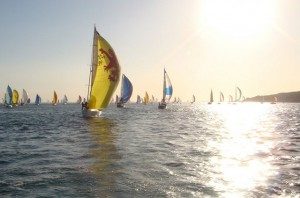
A baft: A location on the boat but further to the rear of the boat. “The tiller is abaft the mast.”
A beam: The beam is the widest part of the boat. When another boat is abeam, it is at a right angle off the beam to either the starboard or port side of the boat you are on.
A ft: When on a boat you refer to the stern part of the boat as being aft or to the rear of the boat.
A head: A term used to describe the area in front of the boat you are on. “Look ahead.”
A ids to Navigation: This includes all external systems like channel markers, preferred route buoys, danger and safe water buoys, isolated danger and regulatory markers etc. that help determine a boats position or course, the presence of dangers or obstructions and the preferred route to navigate.
A midships: In the middle of the boat between the stern and the bow.
A pparent Wind: The apparent wind is a combination of the true wind and the wind caused by the boat travelling through the water. On an windex, the apparent wind will cause the windex to show wind direction just in front of the true wind.
A stern: A location off the boat and behind it.
B ulkhead – Refers to an often watertight, interior wall on the boat
Backing Wind: Refers to the wind shifting direction in a counter-clockwise direction. This usually means that bad weather is approaching.
Backstay: A wire running from the top of the mast to the stern of the boat. The backstay stops the mast from falling forward and also helps to control the degree of mast bend when tuning a boat.
Battens: Wood, fiberglass or plastic strips slid into pockets along the leech of the sail. Battens help to shape and strengthen the sail to increase overall performance.
Beam: The widest part of the boat.
Beam Reaching: One of the points of sail. You are ‘beam reaching’ when sailing directly sideways to the wind on either a port or starboard tack. Think of a clock face – if the wind is blowing from 12 o’clock, sailing at between 3 o’clock or 9 o’clock would be a beam reach.
Bearing Away: Turning away from the wind or turning downwind.
Beating: Sailing towards the wind by tacking back and forth across the wind.
Belayed: Secured, tied to, made fast to.
Bend On: To secure one thing to another. Tieing two lines together.
Bifurcation: A channel junction (two channels meeting) usually marked by a ‘bifurcation buoy’ indicating the perferred channel to follow.
Bight: A loop or bend in a line.
Bilge: The lowest inner part of a boats hull.
Bitter End: The utmost free end of a line. (The other end is referred to as the ‘Standing Line’).
Boat Wind: The wind created by the boat moving through the water. The true wind and the boat wind combine to create the apparent wind direction.
Boat Fall: Rigging used to raise or lower a ship’s boat.
Boat Painter: Rope tied to the front end of a boat used to either tow a boat or to secure it to a dock.
Bollard: Wooden or iron post on a pier to which the boat is secured.
Boom: The boom is the pole running aft from the mast to which (among other things) the foot of the mainsail is attached.
Bowline: A very strong and yet easy to untie knot that creates a loop in the end of a line.
Breastlines: Mooring lines that run from the bow and the stern at right angles to the dock to stop the boat from drifting out from the dock.
Broad Reach: One of the points of sail. Sailing downwind off to the port or starboard side. Think of a clock face – if the wind is blowing from 12 o’clock, sailing at between 4-5 o’clock or between 7-8 o’clock would be a broad reach.
By the Lee: Sailing downwind with the mainsail remaining on the same side of the boat that the wind is hitting. If you are sailing downwind on a port tack, typically the mainsail would be off the starboard side of the boat. When sailing ‘by the lee’, the mainsail in the same situation would remain on the port side of the boat out at a 90 degree angle to the boat.
C lew – The lower aft corner of a sail
Cabin: The below deck living quarters.
Cable: Measurement of distance equal to 0.1 nautical mile.
Cam cleat: A fitting through which a line is run through. The cam cleat consists of two cams that wedge against the line stopping it from being pulled out.
Cardinal Aids to Navigation: Buoys with indicate the location of hazards, safe water or deep water by reference to the four cardinal points of a compass (North, South, East, West).(See our section on buoys for a more complete explanation.)
Catboat: A boat with one mast flying no foresail (jib).
Cast Off: To release the lines allowing the boat to leave it’s mooring.
Chainplates: Very strong metal plates affixed to the hull to which the forestay, backstay and shrouds are attached.
Chart Datum: For navigational safety, depths on a chart are shown from a low-water surface or a low-water datum called chart datum. Chart datum is selected so that the water level will seldom fall below it and only rarely will there be less depth available than what is portrayed on the chart
Chock: a metal fitting, either oval or U-shaped, through which mooring lines are passed. Chocks help reduce abrasion saving the lines from excessive wear and tear.
Cleat: A small, metal deck fitting with horns used for securing lines (belaying).
Clew: The lower rear corner of a sail.
Close Reach: Point of sail – sailing against the wind at an angle somewhere between a Beam Reach and Close Hauled. Think of a clock face – if the wind is blowing from 12 o’clock, sailing at 2 o’clock or 10 o’clock would be a close reach.
Close Hauled: Point of sail – sailng as close to the wind (sharp angle to the wind) as possible without the sailings luffing (fluttering).
Cockpit: The open inset area from where the boat is steered.
Companionway: Stairs or ladder on a boat usually leading down to the cabin.
Cringles: Open metal rings inserted into the sail (also called grommets) used as reefing points for a sail but also found at the clew, head and tack of the sail to attach halyards, lines, outhauls etc.
Cunningham: A line used to adjust the forward edge of the mainsail. Usually runs from the tack of the sail to the front area of the boom.
Current: The horizontal flow of water. (Tide is the vertical flow of water.)
Cutter: A cutter has one mast but sails with two foresails.
D raft – This describes the depth of a boat measured from the deepest point to the waterline
Davit: A crane onboard that can be swung out over the side for hoisting or lowering boats.
Dead Reckoning: Navigational term – method used to plot the course already travelled by measuring speed and time to calculate distance.
Deep Six: A slang term meaning to discard something over the side of the boat.
Degree: A distance of measurement on a nautical chart. One degree equals 60 nautical miles. Each degree is broken down into 60 minute intervals. One minute of one degree equals 1 nautical mile.
Deviation: A ship’s magnetic compass reading can be affected by metal objects on the boat (electronic equipment etc). The difference between the correct magnetic reading and the ships compass magnetic reading is called deviation. Deviation will vary depending on the direction of the boat.
Dog: A metal fitting used to secure watertight doors, hatch covers and scuttles.
Downhaul: A line attached to the tack of the sail and used to pull down or tighten the mainsail to increase sale efficiency.
E ase: To let out or ‘ease off’ a line.
E nsign – The national flag of the boats home country
F Fairleads: A metal fitting through which lines are run to in order to change the direction of the lines while reducing friction on the lines.
Fairway: Sailing on inland waters, fairway means an open channel or being in midchannel.
Fast: To make fast. To secure (snugly tie) a line to something.
Fathoms: A unit of measurement. One fathon equals 6 feet.
Fenders: Cylindrical air filled plastic or rubber bumpers hung off the side of a boat or dock to prevent damage to both dock and boat.
Fetch: The distance over open water the wind has blown.
Faked: A line is faked by zig zagging it back and forth so that when it is used it will not tangle on itself.
Flaked:A sail is flaked when lowered. Flaking a sail is the process of folding the sail back and forth upon itself like the blades on a paper fan. Flaking a sail will help prolong the sail life.
Foot (Sail): The foot of a sail is the lower part of the sail. In the case of a mainsail, this is the part of the sail that runs along the boom.
F orepeak- The cabin most forward in the bow of the boat
Forestay: The forestay is a wire that runs from the top of the mast (or near the top of the mast) to the bow of the boat. The forestay supports the mast from falling backwards and is also used in shaping the bend in the mast for maximum efficiency. The luff (front) of the foresails (jib, genoa) are also generally attached to the forestay depending on the rigging system.
Forward: When on a boat, forward means towards the bow. “Move forward” – move towards the front of the boat.
Galley: The boat’s kitchen.
Genoa: The Genoa is a foresail that is larger than a jib. The clew (lower corner at the foot of the sail) extends aft of the mast unlike a jib.
Give-way Boat: Navigational rules – the boat not having the right-of-way. The Give-way boat must stay clear of the Stand-on boat. The Give-way boat must make it’s intentions known by making a decisive maneuver to alert the Stand-on boat.
Gooseneck: This is a metal fitting that attaches the boom to the mast.
G oosewinging – To sail downwind with the mainsail set on one side and the foresail on the other
Gybing: Sailing down wind and turning through the wind causing the sails to move from one side of the boat to the other.
Gybe ho: Term used by the helmsman to let his crew know that he has started to turn the boat into a gybe.
H alyard – A line which is used to raise things on a boat, so the main halyard line would be used to raise the mainsail
Halyards: Lines used to lower and raise sails.
Hanks: Clips found along the luff (front) of the foresail used to clip the sail onto the forestay (wire running from the bow to the top or near the top of the mast).
Hard over: Turning the wheel or pushing the tiller all the way over.
Head: Generally used to refer to the boat’s toilet. When talking about a sail, the Head is the top of the sail.
Head to Wind: The bow of the boat is pointed directly into the wind.
Heading up: Turning up more into the wind.
Heaving to: A way to, in effect, stall a sailboat by backing the jib, easing out the mainsail and turning the rudder hard into the wind. The forward wind pressure on the foresail wants to force the bow downwind. The rudder turned towards the wind wants to force the bow windward. These two counter effects balance each other causing the boat to hold it’s position with little movement. The mainsail is eased out all the way so that it does not catch any wind and therefore has no bearing on the boats postion.
Heeling: Leaning or heeling over caused by wind pressure on the sails.
Helm: The Helm is the steering mechanism of the boat (wheel or tiller). The person at the helm is called the helmsman.
Helms Alee: A term used by the helmsman to notify the crew that he has started to tack. Hypothermia: A dangerous condition where the body core temperature has been lowered causing extreme shivering, loss of co-ordination, in ability to make decisions and in extreme cases, loss of conciousness and even death.
I nlet – A recess, such as a cove or bay, along a coastline
In Irons: This occurs where the boat has been turned directly into the wind and has lost all forward momentum. Without forward momentum the boat loses it’s ability to steer.
J ackstay – A strong line, that can be made of wire, which runs fore and aft alongside the boat that can be used to attach your safety harness to.
Jacob’s ladder: A light ladder made of rope or chain with metal or wooden rungs used over the side or aloft.
Jib: The jib is a foresail (smaller than a genoa). The jib is about the same size as the triangular area between the forestay, mast and foredeck.
Jiffy reefing: This is a way to make the mainsail smaller by partially lowering it, tying or reefing the lower slack part of the sail onto the boom through gromets (holes in the sail) called reefing points. This is done in high wind conditions to power down the sail.
Jury rig: Makeshift – adapting parts and materials for a use not specifically designed for in order to get by until proper parts or repairs can be obtained.
K etch – A sailboat with 2 masts
Kedging: A method used to free a grounded boat by dropping it’s anchor in deeper water and then pulling on the anchor rode to attempt to free the boat.
Keel: The large heavily weighted fin like structure secured to the bottom of the boat. The keel helps to keep the boat upright and also reduces leeway (side slipping across the wind).
Ketch: A two masted boat. The second and smaller mast (mizzen) is positioned just forward of the rudder post.
Knot: Rate of speed. On land it is miles per hour, on the water it is knots (nautical miles) per hours. One knot equals 1.15 land miles – so one knot is just a bit faster than one mph.
L eeway – The sideways movement of a boat caused by wind and currents
Lateral Aids to Navigation: channel buoys (Red & Green), isolated danger buoys (Black & Red), safe water ahead (Red & White), regulatory buoys (Yellow), bifurcation buoys (Black & Yellow) plus channel identification markers and navigation markers are all considered Laterial Aids to Navigation.
Lazarette: A storage compartment, usually under the seats of the cockpit.
Lee Helm: Also called Weather Helm, this is the tendancy of the boat to turn into the wind once it has heeled over at a sharp angle.
Lee Shore: Feared by most sailors, this is the downwind shore from the boat.
Leech: The rear edge of the foresail or the mainsail running from the head (top) to the clew (rear corner) of the sail.
Leeward: Downwind.
Leeway: When a boat sails across the wind, the force of the wind causes the boat to slip sideways. This drifting or sideway motion is known as Leeway.
Lifelines: The lines running around the outside of the deck creating a railing. The lines are attached to stanchions (upright metal posts).
Luff: The forward edge of a sail running from head to tack (front corner of the sail).
Luffing: A sail is luffing when it starts to flutter in the wind. The term Luff is also used to describe the same situation. “The sail is starting to luff.”
Luff Up: To turn into the wind to cause the sails to start luffing.
M ultihull – Any boat that has more than one hull, such as a catamaran.
Made fast: Secured to.
Mast: The upright pole supported by the shrouds, forestay and backstay to which the sails are attached.
Masthead fly: A windvane attached to the top of the mast to show which direction was wind is coming from.
Monkey fist: A type of knot, heavy in nature and tied to the end of the rope. The weighted knot makes it easier to throw the rope a farther distance.
Mooring ball: An anchored ball to which you can secure your boat. Safer alternative to anchoring provided the mooring ball and lines are in good condition.
Mooring lines: Lines used to secure a boat to a dock or mooring ball.
MSD: Marine sanitation device (toilet).
N eap tide – When during the four week tidal cycle, the tide rises and drops the least.
Nautical mile (NM): International standard for measuring distance on water. One nautical mile equals one minute of latitude. (One nautical mile equals 1.15 land miles.)
O uthaul – This is a line used to tension the foot of the sail, to better control the curvature of the sail
P ulpit – A sturdy rail around the deck on the bow, normally surrounding the forestay
Pad eye: A metal eye (ring) through which lines can be passed in order to stop chaffing.
Painter: The bow line of a dinghy.
P-effect (Prop Walk): When a boat is in a standstill position and put into forward or reverse, the resistance of the boat to move and the motion of the propeller creates a paddlewheel effect pulling the stern of the boat to either port or starboard side depending on the spin of the propeller. This paddlewheel effect is known as P-effect or Prop Walk. P-effect is especially noticable in reverse where there is greater boat resistance to move backwards thus making it easier for the prop to pull the boat sideways.
PFD: Personal Floatation Device – life jacket.
Pintle and gudgeon: The pintle and the gudgeon together form a swinging hinge usually associated with the installation of the rudder on smaller tiller steered boats. The pintle has pins that fit into the holes on the gudgeon thus creating a hinge like fitting.
Points of sail: A reference for the direction the boat is travelling in relation to the wind. (in irons, close hauled, close reach, beam reach, broad reach, running)
Port: When on a boat and facing forward, the left hand side of the boat.
Port tack: Sailing across the wind so that the wind hits the port (left) side of the boat first.
Pulpit: Located at the bow of the boat, this area is enclosed by a metal railing.
Pushpit: Located at the stern of the boat and like the pulpit, this area is enclosed by a metal railing.
Q uadrant – This is a device connected to the rudder that the steering cables attach to
R egatta – Boat races
S hroud – The wires at the side that hold the mast up
Schooner: A sailboat that has two masts both the same height or on some schooners, the aft mast is higher than the fore mast.
Scope: Expressed in terms of a ratio, it is the length of the anchor rode let out compared to height above the sea bed. Height is measured not from the water line but from the top of the deck to the sea bed. A safe anchoring ratio is 1:7 which translates to 7 feet of anchor rode for every foot of height. Many sailors incorrectly assume that height means water depth and therefore find themselves dragging the anchor for lack of proper scope.
Seaworthy: A boat that is fit to be sailed at sea.
Self-bailing cockpit: A cockpit that allows water to drain automatically from the cockpit to the outside of the boat.
Shackles: Metal fittings (often U shaped) that open and close with a pin across the top of the ‘U’. Lines and halyards often use shackles. The mainsail halyard is secured to the head of the mainsail with the use of a shackle.
Sheave: A roller/wheel to guide a line or wire.
Sheets: Lines that are used to adjust sails by either pulling them in or by letting them out.
Shrouds: Also called sidestays, shrouds are the metal wires found on both sides of the mast running from the deck to the top or near top of the mast. The shrouds support the mast by providing lateral support.
Slack water: The period between the flood (tidal water moving in) and the ebb (tidal water moving out) where the water has in effect stalled – little or no movement.
Slides: The groove in the mast to which the luff (front side) of the mainsail is inserted. The slides hold the sail tight against the mast and allows the sail to be easily raised or lowered.
Sloop: a sailboat that has one mast and sails with the mainsail and one foresail.
Soundings: Water depths.
Spar: A spar can refer to any of the following: mast, boom or a pole.
Spinnaker: A large balloon-like foresail used for sailing downwind (running or broad reach).
Spinnaker pole: The spinnaker pole is boom-like in nature, but smaller and lighter, and attaches to fore part of the mast a few feet up from the deck. The other end of the spinnaker pole attaches to the leeward (down wind) base of the spinnaker.
Spreaders: Bars extending sideways from the mast (gives the mast a cross-like appearance). The spreaders hold out the shrouds so that they do not interfer with the rigging.
Springlines: Springlines are used to secure a boat to a dock and stop the boat from moving forward or backwards. The aft springline runs from a point on the boat near the bow to a point aft on the dock. The forward springline runs from a point on the boat near the stern to a point forward on the dock.
Squall: A sudden isolated storm associated with potentially high wind gusts.
Stanchions: Upright metal posts running around the outside of the deck supporting the lifelines.
Stand: This refers to the short period of time where the tide is neither rising or falling. (At a stand still.)
Standing rigging: Standing rigging includes the forestay, backstay and the shrouds. Unlike the ‘running rigging’, the standing rigging is generally only adjusted when the boat is not underway.
Stand-on boat: The boat that must retain her current course and rate of speed in order to avoid a potential collision with an approaching give-way boat.
Starboard: As you face towards the bow on a boat, starboard is the right hand side of the boat.
Starboard tack: Sailing across the wind with the wind hitting the starboard (right) side of the boat first.
Steerage: The ability of the boat to be steered. In order for a rudder to be effective in steering a boat, there must be boat movement. A boat not moving cannot be steered.
Stern: The most aft part of a boat (the very back of the boat).
Storm jib: Same as a jib but not as big. The smaller sail is used in high wind conditions.
T ender – A small boat or dinghy used to ferry crew between the boat and shore
Tack: The front lower corner of a sail. Also means to sail back and forth across the wind in either a port or starboard tack.
Tacking: Also called “Coming About”. Tacking is when the bow of the boat is turned through the wind onto the opposite tack.
Tail: The bitter end of a sheet tailing out from a winch.
Tang: A metal fitting used to affix the stays to the mast.
Telltails: (Also called Ticklers) These are small strings (wool, plastic) attached to both sides of the luff of the sail. When the telltails on both sides of the sail are blowing straight back, this indicates that the sail has been properly trimmed.
Through hulls: Through hulls are holes that go through the boat. Each through hull will have a shuttle cock (value) to stop the flow of water. An example of a through hull would be the head (bathroom). A through hull value is opened so that water from outside the boat can be pumped into the MSD (toilet). The value is closed and the toilet pumped empty into a holding tank.
Tide: The vertical rise and fall the oceans.
Tide rips: This is an area of rough water where the wind is blowing across the water in the opposite direction from which strong tidal current is flowing.
Tiller: In boats that are not steered by a wheel, a tiller (long handle) is attached to the top of the rudder in order to facilitate steering.
Toe rail: A small metal railing running around the outside of the deck used to support your feet.
Topping lift: A line running from the top of the mast to the end of the boom. The topping lift supports the boom when the sail has been lowered.
Topside: The portion of the hull above the water line.
Transom: The flat area across the stern of the boat.
Trim: To trim or adjust the sail to make it more effective against the wind.
True wind: The actual wind felt wind the boat is not moving.
Turnbuckles: Adjustable fittings usually attached at the end of shrouds and stays. Turning the turnbuckle one way or the other tightens or loosens the wire.
U nfurl – To unroll a sail
Upstream: Moving from seaward into harbor, moving with the flood of the tide, moving up river toward the headwaters.
V ane – A wind direction indicator
Veering: A wind shift in the clockwise direction usually indicating that good weather is approaching.
W inch – A mechanical device for pulling in a line
Wake: The waves created behind a boat as a result of the boat moving through the water.
Way: Movement of the boat.
Weather helm: The tendancy of the boat to turn up wind after heeling (leaning over).
Wheel: Controls the rudder. Taking control of the wheel is taking the helm.
Winch: Provides a mechanical advantage. Used to raise the sails, tighten the sheets and other lines.
Windward: Towards the wind.
Wing to wing: Running (sail directly downwind) with the mainsail out one side of the boat and the foresail out the other side of the boat.
X marks the spot on the treasure map!
Y awing – The side to side movement of a boat on an uneven course
Yawl: A sailboat that has two masts. The aft mast (mizzen) is shorter than the foremast. The mizzen mast is located aft the rudder post. (On a Ketch, the mizzen mast is located fore of the rudder post – this is the distinquishing factor between the two.)
Z ephyr – A very light westerly wind
Universal Yachting Ltd
- Contact us | UK Dufour Dealer
- Solent Yacht Charter Terms & Conditions
- Privacy Policy
- DATA REQUEST
- Dufour Yachts
- Boats For Sale
- Yacht Charter

Universal Yachting Ltd: Mercury Yacht Harbour, Satchell Lane, Hamble, Southampton, Hampshire SO31 4HQ
Call Us: +44 (0) 2380 458737 Mail: [email protected]


- Repeated Customers
- Booking Request
Beginner Nautical terms
In this section we will talk about parts of the boat that are used to move it along.
Let' s start at the bottom and work up:
The heavy wing at the bottom of the boat in the middle is called the keel .
This prevents the boat from falling over when the wind pushes on the sail, and also helps the boat go forward with the sails set.
The wing at the back of the bottom of the boat is called the rudder .
This directs the flow of the water and steers the boat.
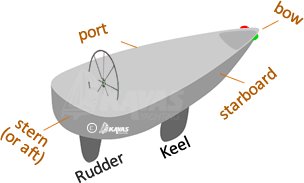
FRONT / BACK / LEFT / RIGHT
The front of the boat is known as the bow . The back of the boat of the boat is called the stern . The left of the boat is called port while the right is starboard.
Relative locations on the boat
If something is behind another object it is aft of it while if it is in front of something it is forward .
Consequently the keel is'forward of the rudder' while the rudder is 'aft of the keel'.

This is why you put special airbags on the side of the boat called fenders between you and the other object.
Right at the stern of the cockpit you will see a life ring . It will be attached to some rope.
If someone falls over the side you throw the life ring towards them and turn the boat to get them out as quickly as possible.
The cockpit
The space in the stern where everything happens is known as the cockpit .
Here you have the steering wheel (the 'wheel" ), the winches to tighten or loosen the sails, and most of the sail control ropes will lead into there too.
At the bow...
At the bow you will also find a hole where the anchor chain goes (the anchor will generally be hanging off the bow). This is called the chain locker.
Finally, on the diagram you will see that the boat has two night lights on the bow : red on the port side and green on the starboard side.
When sailing or motoring at night you need to turn these on so other water users can get an idea of what sort of boat you are and your direction of travel. This is so they can avoid hitting you.
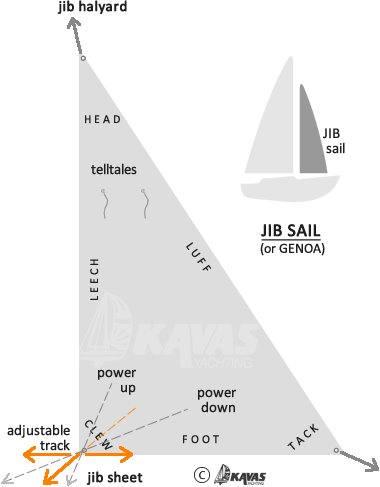
MAST AND SAILS
When you are sailing, the sails are the engine of the boat. As with the engine for motoring, they are quite complicated but once you know what is what you can set them better and go more efficiently.
THE JIB SAIL
Let's start with the jib sail , the sail at the front of the boat. The tack is attached to the bow. The clew is attached to the jib sheets that control the shape of then when you set the sail. To get the sail up, you haul on the jib halyard that is attached to the head of the sail.
The front edge of the sail is called the luff. By tightening the jib halyard you tighten the luff.
Generally speaking you want all the edges of the sail to be tight when the sail is set (not flapping about) so you always want the jib halyard to be as tight as you can manage.
Between the tack and the clew is the foot of the sail, and this is tightened by the jib sheets. When sailing you want the jib sheets just tight enough to keep the sail firm, yet by letting it out just a little bit it will flap. In setting it just right you get the most efficiency of the sail.
If the sail is flapping then it isn't pulling the boat forward, so to stop the boat you let your sheets go and they will stop the boat.
The mast is where the halyards are led through. As well as the jib halyard you also have the main halyard that pulls the mainsail up and down.
Attached to the mast at right angles to it is a straight piece of metal called the boom .
This is where the foot of the mainsail goes, with the tack attached to the cunningham and the clew attached to the outhaull .
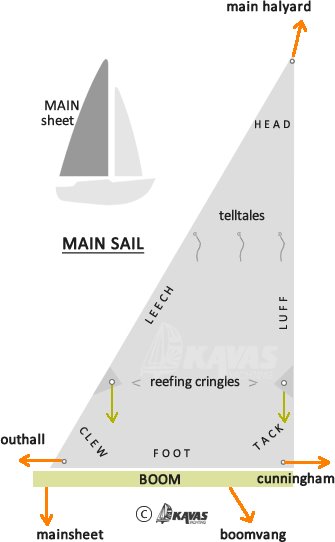
These tighten the foot of the mainsail.
Again, for good sailing you want the foot tight so at the mast you will tighten the Cunningham and at the end of the boom you will tighten the outhaul.
THE MAINSHEET
At the cockpit end of the boom you will see the mainsheet.
This is led into the cockpit and as with the jib sheet pulls the sail in or lets it out according to the wind direction.
Going down wind you will want to let it out, while sailing close to the wind you will tighten it. To stop the boat you let go of it and steer into the wind.
The Cunningham also keeps the sail tight from top to bottom.
The main halyard pulls the sail up while the Cunningham pulls it down.
SAILING IN STRONG WIND
If the wind gets too strong, you sometimes want less sail up .
Sailing can be fun in stronger winds!
That's why you have the reefing cringles that are part way up the sail to 'reef the sail'.
You would attach the Cunningham and the Outhaul to the Reefing cringles , and re set the sail.
With less sail area you will be more comfortable in bigger winds and still enjoy you time on the water.
WINDWARD AND LEEWARD SIDE
The side of the boat facing the wind is the windward side and the side facing away is the leeward side.
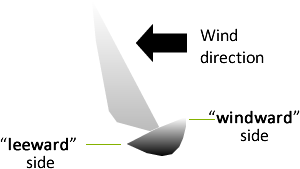
Generally speaking the boat will lean away from the wind, so the leeward side will be the lower side of the boat when sailing.
THE TELLTALES
Finally, on both sails in the picture you will see the 'telltales' . These give you an idea as to how well the sail is set. When sailing on an upwind leg - the telltales on both the windward and leeward side of the jib should point aft.
If the leeward telltales twirl, the helm should steer closer to the wind.
If the windward telltales lift and twirl, the helm should head slightly downwind.
THE WINCH AND WINCH HANDLE
Winches are used to pull ropes (also known as lines) when manpower alone can’t pull them.
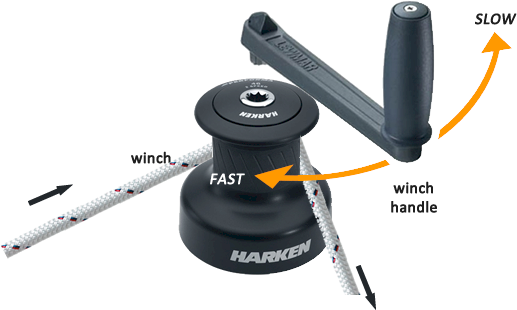
On big racing yachts you will see the biggest guys on the boat on the ‘grinder’ that is just turning the winch. On smaller boats like yours you will only need a winch handle to turn it.
Winches are most used to tighten and loosen the jib sheet.
SOME NOTES ON USING THE WINCH
Firstly turn the line around it in a clockwise direction for one turn.
Make sure that the end of the line with you are pulling from is at the bottom while the end of the line you are pulling is above.
NEVER put your fingers between the line and the winch barrel . If there was a sudden gust on the sail it is trimming your fingers could be broken or even removed.
ALWAYS use the flat of your hand on top of the line when on the winch.
Usually before there is any tension on it you only put one full turn on it and then pull like crazy until there is tension on it.
At this stage put two more turns on the winch. Make sure the turns don’t overlap as that could trap the jib sheet and this in turn could mean the boat end up flat on its side in an emergency situation.
When you have the turns on the winch immediately put the winch handle on and turn clockwise until you cannot turn any more at a decent speed. If you are quick enough with the winch this might be all you need to do.
Once it is too much for your arms alone, turn the winch handle anticlockwise and this will use the mechanics inside the winch to help you tighten it the rest of the way.
To loosen rope on the winch, hold the line taught with both hands and ease off the tension gently. One common time you’ll need to do this is when you are tacking the boat. Read our explanation about tacking and gybing later in this manual.
On most days tacking and gybing are the most exercise you will get while sailing. There will be lots of noises and dashing about the winches for about a minute and then you can return to your gin and tonics!

No search results for: "{{ searchQuery }}".
Search results for: "{{ searchquery }}"., basic sailing terms you need to know.
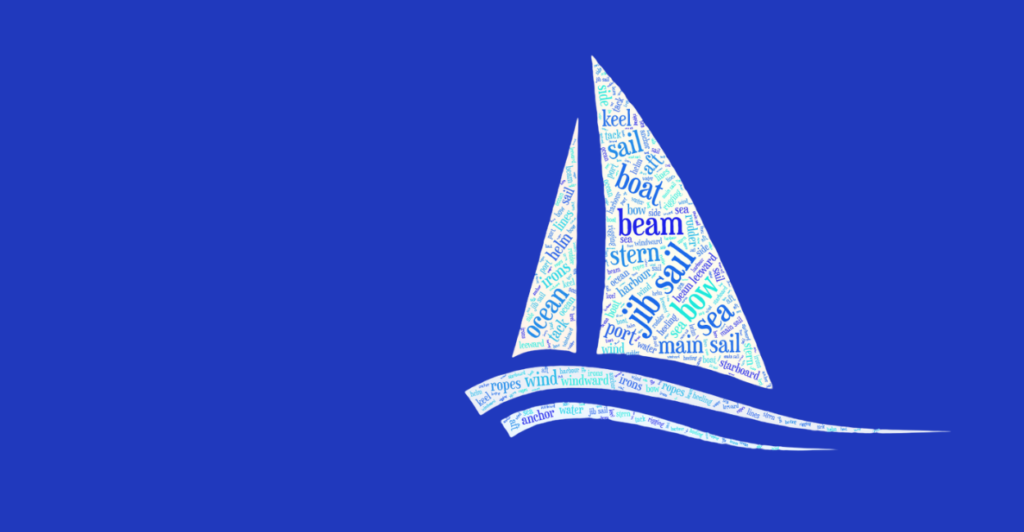
Basic sailing terms are essential for safe and appropriate sailing. Knowing how to use these terms are key to good communication which will allow you to better understand what the situation is onboard. Even if using these terms might sound corny, they have been around for centuries and using them confidently will definitely improve communication while sailing. To help you in your sailing journey, we compiled a list of basic terms you need to know before you set sail.
Aft or Stern
If you decide to rent a boat with SamBoat , you might want to know how to call the different parts or directions of the boat. The term “aft” is used to designate the back of the boat. Another common word to describe the back of the vessel is the term “stern”.
On the contrary the bow is the term used to designate the front of the boat. Knowing where the bow of the boat is located will help you use the other nautical terms too.
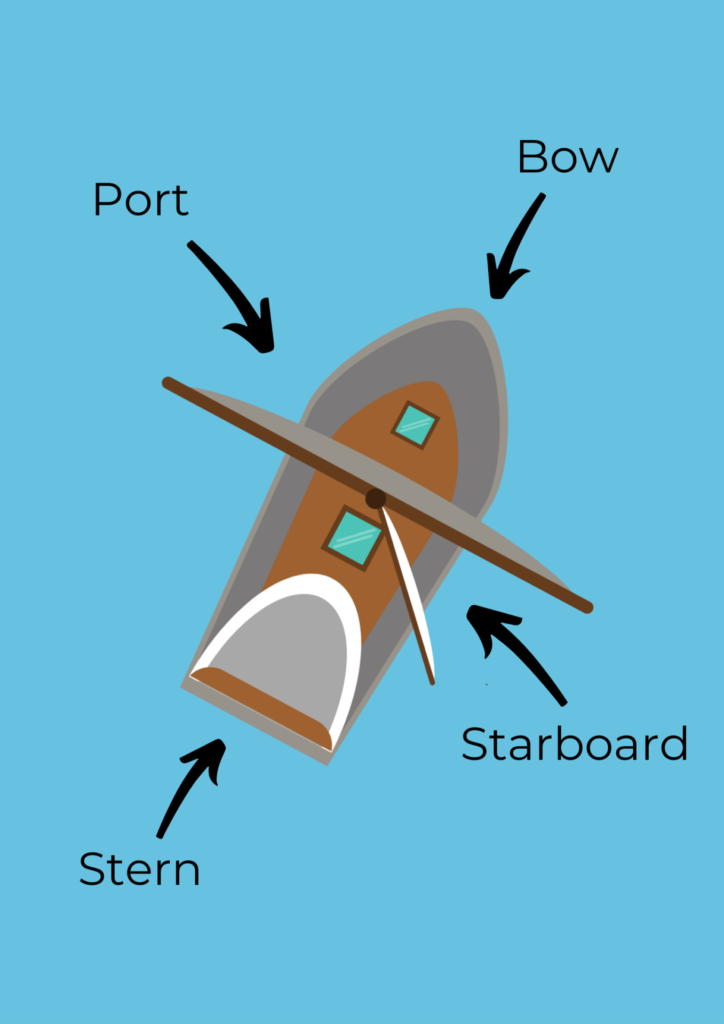
Knowing what port means is very important. It designates the left side of the boat according to the bow. It’s quite important as orientation can be confusing if you use basic words like “left” and “right”, and some actions require you to be quite reactive while sailing.
Similarly but oppositely, the term “Starboard” designates the right side of the boat when facing the bow. For the same reasons, it’s a useful term to know when you try to communicate in open waters.
Terms for points of sail
There are 8 terms to know if you want to understand your position according to the direction of the wind. These sailing terms are really important to comprehend the situation and to make good decisions for the direction you should take. For instance, being positioned in Irons means that you are in the no go zone (or position).
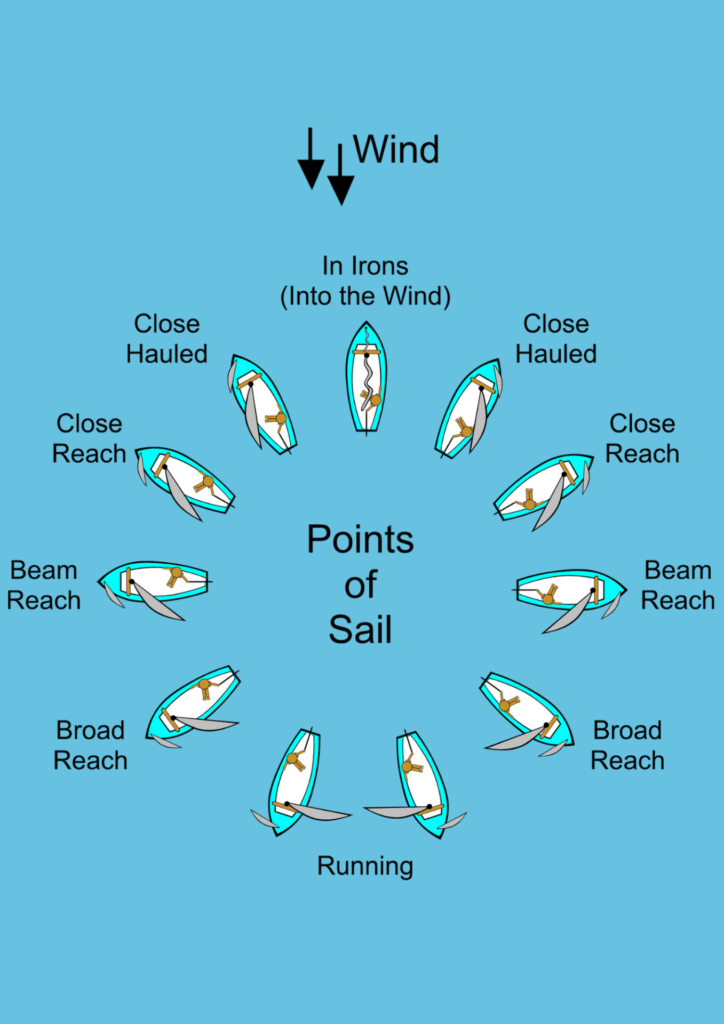
This term describes the object (wheel or stick) to steer the boat in whichever direction the person operating the boat wants to go. The helm is mechanically attached to the “rudder”, the boat’s fin that makes it possible to change direction.
The keel is a heavy fin located at the bottom sticking vertically to stabilise the boat. It is the main reason that it is difficult to capsize a boat as it keeps the weight in the middle of the boat.
The Jib sail
The jib sail has a smaller sail sheet than the main one and doesn’t have a boom. It’s located closest to the bow. It is used to control the power of the sailboat by tightening the luff and therefore giving more energy, enabling the boat to take speed.
The main sail
This is the bigger sail of the boat and therefore the most important one. This sail holds the mainsheet that gives a lot of speed when it’s tightened correctly. The main sail has a boom unlike the jib sail.
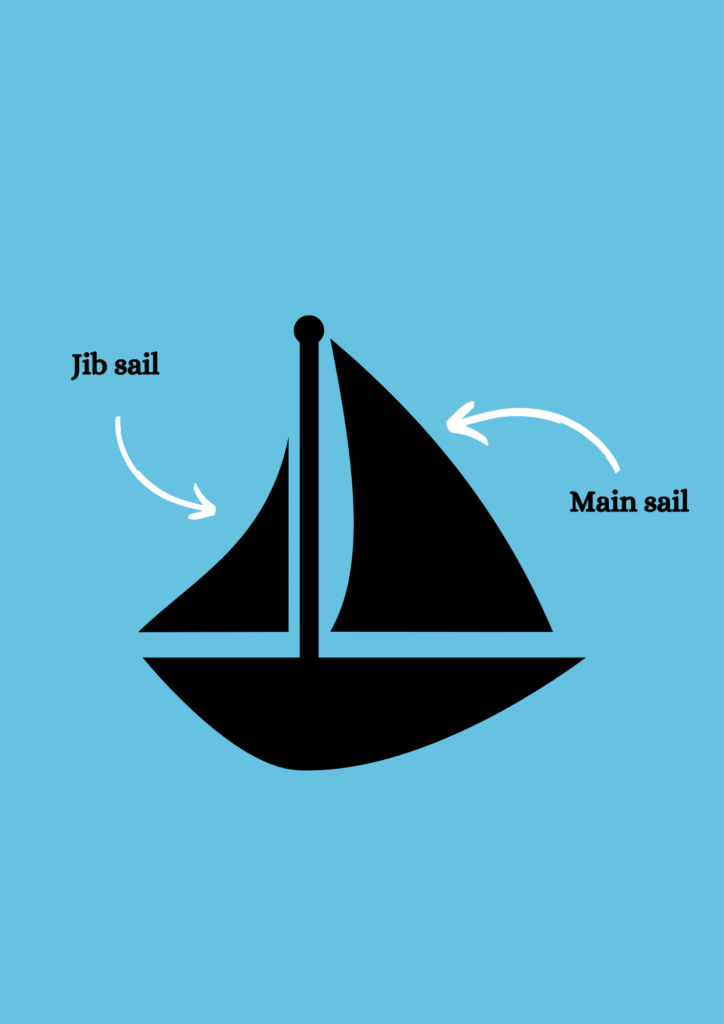
Windward and Leeward
When the boat is absorbing the wind from one of its sides, it usually leans towards the other side. The leeward side is the lower side, closest to the water. Oppositely, the windward side is the highest one, the one where the wind is coming from.
If you want to know more about sailing, we strongly recommend picking out a book on sailing by checking our article on the top books every sailor must read .
You might like these articles
Set sail and discover sardinian cuisine with samboat, join our summer giveaway , how to rent a yacht with samboat: a step-by-step guide .
Sailing Basics: 10 Nautical and Sailing Terms To Learn

If you’re learning how to sail—or if you’re thinking about purchasing a sailboat of your own—these handy terms can provide a helpful overview of sailing basics you need to become familiar with.
Explore Sailboat Brands & Manufacturers
10 Nautical and Sailing Terms Everyone Should Know
1. aft .
The back of a ship. If something is located aft, it is at the back of the sailboat. The aft is also known as the stern.
2. Bow
The front of the ship is called the bow. Knowing the location of the bow of the boat is important for defining two of the other most common sailing terms: port (left of the bow) and starboard side (right of the bow).
3. Port
Port is always the left-hand side of the boat when you are facing the bow. Because “right” and “left” can become confusing sailing terms when used out in the open waters, port defines the left side of the boat as it relates to the bow or front.
Read Next: Beginner Sailing Tips
4. Starboard
Starboard is always the right-hand side of the boat when you are facing the bow. Because “right” and “left” can become confusing sailing terms when used out in the open waters, starboard defines the right-hand side of the boat as it relates to the bow or front.
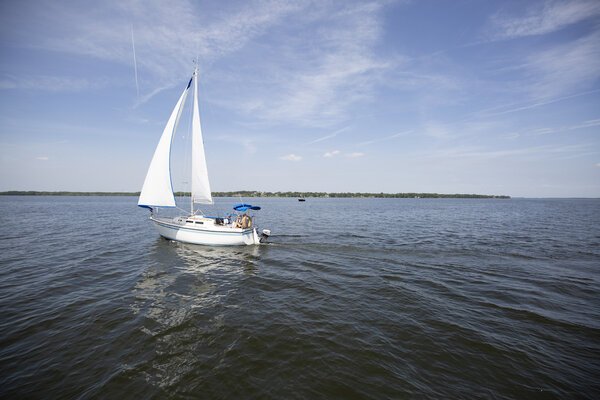
5. Leeward
Also known as lee, leeward is the opposite direction of the wind blowing (windward).
6. Windward
The direction in which the wind is currently blowing. Windward is the opposite of leeward (the opposite direction of the wind). Sailboats tend to move with the wind, making the windward direction an important sailing term to know.
7. Boom
The boom is the horizontal pole extending from the mast’s bottom. The sailboat can harness wind power to move forward or backward. This is done by adjusting the boom towards the direction of the wind.
8. Rudder
Located beneath the boat, the rudder is a flat piece of wood, fiberglass, or metal used to steer the boat. Larger sailboats control the rudder via a wheel, while smaller boats will have a steering mechanism directly aft.
9. Tacking
The opposite of jibing, this basic sailing maneuver refers to turning the boat’s bow through the wind so that the wind changes from one side of the boat to the other. The boom of a boat will constantly shift from one side to the other when performing a tack or a jibe.
10. Jibing
The opposite of tacking, this basic sailing maneuver refers to turning the stern of the boat through the wind so that the wind changes from one side of the boat to the other. The boom of a boat will always shift from one side to the other when performing a tack or a jibe. Jibing is a less common technique than tacking since it involves turning a boat directly into the wind.
Conclusion: Learn Nautical Terms Before Setting Sail!
In conclusion, knowing sailing terms and phrases is an essential skill for anyone who wants to take up sailing as a hobby. It enables sailors to communicate effectively with each other and understand the different parts of the boat and their functions. It also enhances safety and reduces the risk of accidents on the water.
Therefore, whether you are a seasoned sailor or a beginner, learning these sailing terms can enhance your enjoyment of this exciting and rewarding sport!
Editor’s Note: This article was updated in April 2023.
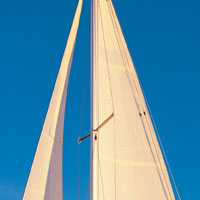
Join Our Newsletter!
Get community news, buying bargains, and how-to guides at your fingertips.
- Pontoon Boats
- Personal Watercraft
- nauticalknowhow
- Nautical Knots
- Tools and Calculators
Boating Basics Glossary of Nautical Terms
The world of boating has a pretty unique vernacular, and it’s important that you understand the differences between sailing words and land lubber words before you head out onto the water! Nothing highlights a newbie quite like the wrong use of a word!
You might know the difference between a bow vs stern, port or starboard, and can tell the difference between a bowline and a clove hitch, but if you don’t know what’s the opposite of aft or the opposite of windward, it’s time to brush up on your sailboat terms.
To make life easier, we’ve put together a concise glossary with every boat definition, nautical word, and ship terminology you could ever possibly need to know, with simple, easy to understand definitions, and links to more detailed sources when necessary.
If your boat lingo isn’t up to scratch, read on! Here’s all you need to know.
Boating Basics Glossary of Terms

ABAFT – Toward the rear (stern) of the boat. Behind.
ABEAM – At right angles to the keel of the boat, but not on the boat.
ABOARD – On or within the boat.
ABOVE DECK – On the deck (not over it – see ALOFT)
ABREAST – Side by side; by the side of. To define abreast in non sailing terms would be alongside something.
ADRIFT – Loose, not on moorings or towline.
AFT – Toward the stern of the boat. The aft of a ship is towards the rear of the ship, or the back of a boat.
AGROUND – Touching or fast to the bottom.
AHEAD – In a forward direction.
AIDS TO NAVIGATION – Artificial objects to supplement natural landmarks indicating safe and unsafe waters.
ALEE – A good alee definition would be: away from the direction of the wind. Opposite of windward.
ALOFT – Above the deck of the boat.
AMIDSHIPS – In or toward the center of the boat.
ANCHORAGE – A place suitable for dropping anchor in relation to the wind, seas and bottom.
ASTERN – In back of the boat, opposite of ahead.
ATHWARTSHIPS – At right angles to the centerline of the boat; rowboat seats are generally athwart ships.
AWEIGH – The position of anchor as it is raised clear of the bottom.
BATTEN DOWN – Secure hatches and loose objects both within the hull and on deck.
BEAM – The greatest width of the boat.
BEARING – The direction of an object expressed either as a true bearing as shown on the chart, or as a bearing relative to the heading of the boat.
BELOW – Beneath the deck.
BIGHT – The part of the rope or line, between the end and the standing part, on which a knot is formed.
BILGE – The interior of the hull below the floor boards. A bilge pump is a special device for this area.
BITTER END – The last part of a rope or chain.The inboard end of the anchor rode.
BOAT – A fairly indefinite term. A waterborne vehicle smaller than a ship. One boat definition is a small craft carried aboard a ship.
BOAT HOOK – A short shaft with a fitting at one end shaped to facilitate use in putting a line over a piling, recovering an object dropped overboard, or in pushing or fending off.
BOOT TOP – A painted line that indicates the designed waterline.
BOW – The forward part of a boat. The bow of a boat can also be referred to as the front. It’s the opposite of the stern of a boat in sailing terms.
BOW LINE – A docking line leading from the bow.
BOWLINE – A knot used to form a temporary loop in the end of a line.
BRIDGE – The location from which a vessel is steered and its speed controlled. “Control Station” is really a more appropriate term for small craft.
BRIDLE – A line or wire secured at both ends in order to distribute a strain between two points.
BRIGHTWORK – Varnished woodwork and/or polished metal.
BULKHEAD – A vertical partition separating compartments.
BUOY – An anchored float used for marking a position on the water or a hazard or a shoal and for mooring.
BURDENED VESSEL – That vessel which, according to the applicable Navigation Rules, must give way to the privileged vessel. The term has been superseded by the term “give-way”.
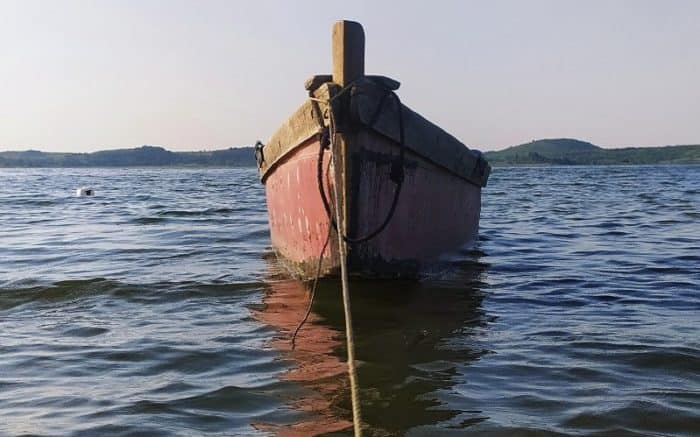
CABIN – A compartment for passengers or crew.
CAPSIZE – To turn over.
CAST OFF – To let go.
CATAMARAN – A twin-hulled boat, with hulls side by side.
CHAFING GEAR – Tubing or cloth wrapping used to protect a line from chafing on a rough surface.
CHART – A map for use by navigators.
CHINE – The intersection of the bottom and sides of a flat or v-bottomed boat.
CHOCK – A fitting through which anchor or mooring lines are led. Usually U-shaped to reduce chafe.
CLEAT – A fitting to which lines are made fast. The classic cleat to which lines are belayed is approximately anvil-shaped.
CLOVE HITCH – A knot for temporarily fastening a line to a spar or piling.
COAMING – A vertical piece around the edge of a cockpit, hatch, etc. to prevent water on deck from running below.
COCKPIT – An opening in the deck from which the boat is handled.
COIL – To lay a line down in circular turns.
COURSE – The direction in which a boat is steered.
CUDDY – A small shelter cabin in a boat.
CURRENT – The horizontal movement of water.
DEAD AHEAD – Directly ahead.
DEAD ASTERN – Directly aft.
DECK – A permanent covering over a compartment, hull or any part thereof.
DINGHY – A small open boat. A dinghy is often used as a tender for a larger craft.
DISPLACEMENT – The weight of water displaced by a floating vessel, thus, a boat’s weight.
DISPLACEMENT HULL – A type of hull that plows through the water, displacing a weight of water equal to its own weight, even when more power is added.
DOCK – A protected water area in which vessels are moored.The term is often used to denote a pier or a wharf.
DOLPHIN – A group of piles driven close together and bound with wire cables into a single structure.
DRAFT – The depth of water a boat draws.
EBB – A receding current.
FATHOM – Six feet.
FENDER – A cushion, placed between boats, or between a boat and a pier, to prevent damage.
FIGURE EIGHT KNOT – A knot in the form of a figure eight, placed in the end of a line to prevent the line from passing through a grommet or a block.
FLARE – The outward curve of a vessel’s sides near the bow. A distress signal.
FLOOD – A incoming current.
FLOORBOARDS – The surface of the cockpit on which the crew stand.
FLUKE – The palm of an anchor.
FOLLOWING SEA – An overtaking sea that comes from astern.
FORE-AND-AFT – In a line parallel to the keel.
FOREPEAK – A compartment in the bow of a small boat.
FORWARD – Toward the bow of the boat.
FOULED – Any piece of equipment that is jammed or entangled, or dirtied.
FREEBOARD – The minimum vertical distance from the surface of the water to the gunwale.
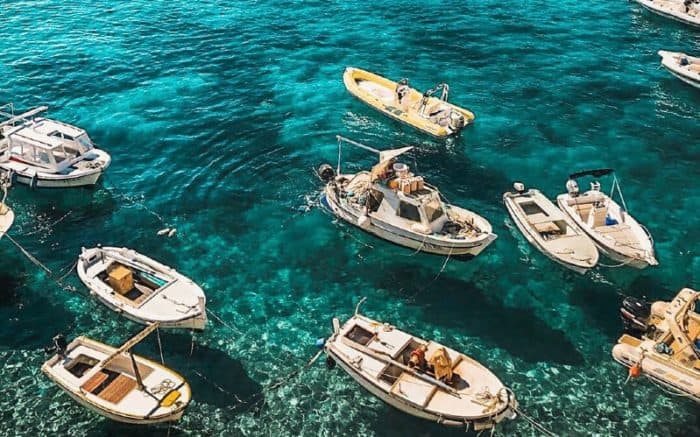
GALLEY – The kitchen area of a boat.
GANGWAY – The area of a ship’s side where people board and disembark.
GEAR – A general term for ropes, blocks, tackle and other equipment.
GIVE-WAY VESSEL – A term used to describe the vessel which must yield in meeting, crossing, or overtaking situations.
GRAB RAILS – Hand-hold fittings mounted on cabin tops and sides for personal safety when moving around the boat.
GROUND TACKLE – A collective term for the anchor and its associated gear.
GUNWALE – The upper edge of a boat’s sides. These are found on the sides of a boat.
HARD CHINE – An abrupt intersection between the hull side and the hull bottom of a boat so constructed.
HATCH – An opening in a boat’s deck fitted with a watertight cover.
HEAD – A marine toilet. Also the upper corner of a triangular sail.
HEADING – The direction in which a vessel’s bow points at any given time.
HEADWAY – The forward motion of a boat. Opposite of sternway.
HELM – The wheel or tiller controlling the rudder.
HELMSPERSON – The person who steers the boat.
HITCH – A knot used to secure a rope to another object or to another rope, or to form a loop or a noose in a rope.
HOLD – A compartment below deck in a large vessel, used solely for carrying cargo.
HULL – The main body of a vessel.
INBOARD – More toward the center of a vessel; inside; a motor fitted inside a boat.
INTRACOASTAL WATERWAY – ICW: bays, rivers, and canals along the coasts (such as the Atlantic and Gulf of Mexico coasts), connected so that vessels may travel without going into the sea.
JACOBS LADDER – A rope ladder, lowered from the deck, as when pilots or passengers come aboard.
JETTY – A structure, usually masonry, projecting out from the shore; a jetty may protect a harbor entrance.
KEEL – The centerline of a boat running fore and aft; the backbone of a vessel.
KNOT – A measure of speed equal to one nautical mile (6076 feet) per hour.
KNOT – A fastening made by interweaving rope to form a stopper, to enclose or bind an object, to form a loop or a noose, to tie a small rope to an object, or to tie the ends of two small ropes together.
LATITUDE – The distance north or south of the equator measured and expressed in degrees.
LAZARETTE – A storage space in a boat’s stern area.
LEE – The side sheltered from the wind.
LEEWARD – The direction away from the wind. Opposite of windward.
LEEWAY – The sideways movement of the boat caused by either wind or current.
LINE – Rope and cordage used aboard a vessel.
LOG – A record of courses or operation. Also, a device to measure speed.
LONGITUDE – The distance in degrees east or west of the meridian at Greenwich, England.
LUBBER’S LINE – A mark or permanent line on a compass indicating the direction forward parallel to the keel when properly installed.
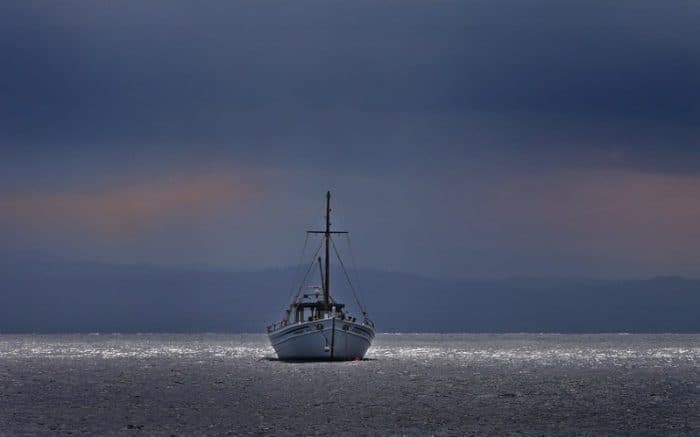
MARLINSPIKE – A tool for opening the strands of a rope while splicing.
MIDSHIP – Approximately in the location equally distant from the bow and stern.
MOORING – An arrangement for securing a boat to a mooring buoy or a pier.
NAUTICAL – It’s easy to define nautical: it is an all encompassing word for anything concerning sailors or maritime travel. All of the boat terminology here can be defined as nautical words.
NAUTICAL MILE – One minute of latitude; approximately 6076 feet – about 1/8 longer than the statute mile of 5280 feet.
NAVIGATION – The art and science of conducting a boat safely from one point to another .
NAVIGATION RULES – The regulations governing the movement of vessels in relation to each other, generally called steering and sailing rules.
OUTBOARD – Toward or beyond the boat’s sides. A detachable engine mounted on a boat’s stern.
OVERBOARD – Over the side or out of the boat.
PIER – A loading platform extending at an angle from the shore.
PILE – A wood, metal or concrete pole driven into the bottom. Craft may be made fast to a pile; it may be used to support a pier (see PILING) or a float.
PILING – Support, protection for wharves, piers etc.; constructed of piles (see PILE)
PILOTING – Navigation by use of visible references, the depth of the water, etc.
PLANING – A boat is said to be planing when it is essentially moving over the top of the water rather than through the water.
PLANING HULL – A type of hull shaped to glide easily across the water at high speed.
PORT – The left side of a boat looking forward. A harbor.
PRIVELEGED VESSEL – A vessel which, according to the applicable Navigation Rule, has right-of-way (this term has been superseded by the term “stand-on”).
QUARTER – The sides of a boat aft of amidships.
QUARTERING SEA – Sea coming on a boat’s quarter.
RODE – The anchor line and/or chain.
ROPE – In general, cordage as it is purchased at the store. When it comes aboard a vessel and is put to use it becomes line.
RUDDER – A vertical plate or board for steering a boat.
RUN – To allow a line to feed freely.
RUNNING LIGHTS – Lights required to be shown on boats underway between sundown and sunup.
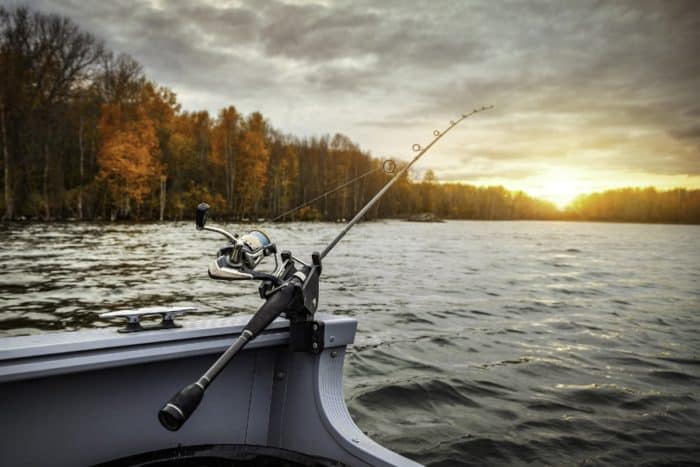
SATELLITE NAVIGATION – A form of position finding using radio transmissions from satellites with sophisticated on-board automatic equipment.
SCOPE – Technically, the ratio of length of anchor rode in use to the vertical distance from the bow of the vessel to the bottom of the water. Usually six to seven to one for calm weather and more scope in storm conditions.
SCREW – A boat’s propeller.
SCUPPERS – Drain holes on deck, in the toe rail, or in bulwarks or (with drain pipes) in the deck itself.
SEA COCK – A through hull valve, a shut off on a plumbing or drain pipe between the vessel’s interior and the sea.
SEAMANSHIP – All the arts and skills of boat handling, ranging from maintenence and repairs to piloting, sail handling, marlinespike work, and rigging.
SEA ROOM – A safe distance from the shore or other hazards.
SEAWORTHY – A boat or a boat’s gear able to meet the usual sea conditions.
SECURE – To make fast.
SET – Direction toward which the current is flowing.
SHIP – A larger vessel usually thought of as being used for ocean travel. A vessel able to carry a “boat” on board.
SLACK – Not fastened; loose. Also, to loosen.
SOLE – Cabin or saloon floor. Timber extensions on the bottom of the rudder. Also the molded fiberglass deck of a cockpit.
SOUNDING – A measurement of the depth of water.
SPRING LINE – A pivot line used in docking, undocking, or to prevent the boat from moving forward or astern while made fast to a dock.
SQUALL – A sudden, violent wind often accompanied by rain.
SQUARE KNOT – A knot used to join two lines of similar size. Also called a reef knot.
STANDING PART – That part of a line which is made fast.The main part of a line as distinguished from the bight and the end.
STAND-ON VESSEL – That vessel which has right-of-way during a meeting, crossing, or overtaking situation.
STARBOARD – The right side of a boat when looking forward.
STEM – The forward most part of the bow.
STERN – The after part of the boat in nautical terms. The stern of a boat is the back portion of the vessel. It is the opposite to the bow of a boat, which is the front.
STERN LINE – A docking line leading from the stern.
STOW – To put an item in its proper place.
SWAMP – To fill with water, but not settle to the bottom.
THWARTSHIPS – At right angles to the centerline of the boat.
TIDE – The periodic rise and fall of water level in the oceans.
TILLER – A bar or handle for turning a boat’s rudder or an outboard motor .
TOPSIDES – The sides of a vessel between the waterline and the deck; sometimes referring to onto or above the deck.
TRANSOM – The stern cross-section of a square sterned boat.
TRIM – Fore and aft balance of a boat.
UNDERWAY – Vessel in motion, i.e., when not moored, at anchor, or aground.
V BOTTOM – A hull with the bottom section in the shape of a “V”.
WAKE – Moving waves, track or path that a boat leaves behind it, when moving across the waters.
WATERLINE – A line painted on a hull which shows the point to which a boat sinks when it is properly trimmed (see BOOT TOP).
WAY – Movement of a vessel through the water such as headway, sternway or leeway.
WINDWARD – Toward the direction from which the wind is coming.
YACHT – A pleasure vessel, a pleasure boat; in American usage the idea of size and luxury is conveyed, either sail or power.
YAW – To swing or steer off course, as when running with a quartering sea.
Boating Slang
Now that you know the basic boating terms, what about talking like a sailor. You’ll notice these are two very distinct things. While all of these official terms and names are important to know, there is more. If you spend a lot of time around sailors you may start picking up on boating slang. Less official but no less important, boating slang can convey just as much information as those other terms. Many of these come to us from the naval tradition, or even piracy, and some have gone beyond the nautical into our everyday lives.
Slang from Sailing Ships
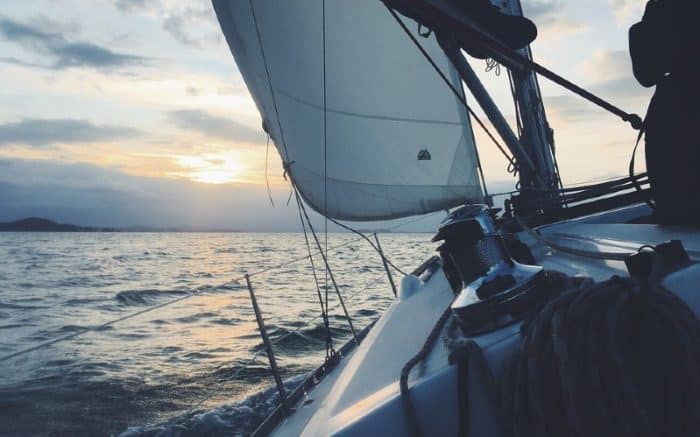
A1: Not just a steak sauce, this slang term means something is high quality or the best. It comes from ship classifications. The highest rated ships were rated A1.
At Loggerheads: This term means to be locked in a disagreement. It comes from the term “loggerhead” which was a stick used to stir pitch and other hot liquids. If sailors got into a fight, they would sometimes use these loggerheads as weapons.
Barge In: Large, flat-bottom river barges are hard to maneuver. Thus, they had a bad habit of forcing their way into places where they weren’t wanted, which is where the modern meaning comes from.
Booty: Pirate booty is a phrase we’re all familiar with. It traces its origins to the word “bottyne” which was plunder taken in war.
By and Large: This term originally referred to how sails took the wind. By referred to the ability to sail into wind and large was off the wind. If a sailing ship could do both then by and large it sailed well.
Deep Six: This is used to mean getting rid of something. In nautical terms, a fathom was six feet, so you’d be dumping something one fathom, or about the height of a sailor, if you deep sixed them.
Devil and the Deep Blue Sea: This term refers to being between a rock and a hard place, as it were and this one does have a nautical origin and it does refer to the seam where the hell meets the deck. When a sailor did have to caulk this on the fly, they’d be suspended from the deck. The seam was called the devil, and the sea was right under them as they worked.
Hand Over Fist: This phrase typically refers to earning money, and means you’re pulling it in very fast. The phrase’s nautical origins refer to sailors rapidly pulling in ropes on a ship.
In the Soup: Fog is often described as being thicker than pea soup. If a boat is in the soup, it’s in the fog.
Keel Over: This slang term refers to passing out or even dying. The keel, of course, is located under a ship so for the keel to flip over the boat has to capsize. When applied to people the meaning is clear.
Knot: We knot nautical speed is measured in knots, but why? Back in the 17th century, sailors used something called the common log or chip log to measure speed. This consisted of a piece of wood used as a float at the end of a rope. Knots were tied in the rope every 47 feet 3 inches. A sailor would let these knots pass through their hands as the ship sailed, and the timing would be measured with a 30-second hour glass. The number of knots that passed through the sailor’s hands indicated speed.
Know The Ropes: Also “show you the ropes,” which means understanding how something is done. This one is fairly self-explanatory as any sailor hoping to master their ship would need to literally know the ropes and how to use them.
Limey: This is still used as a slang term, somewhat insultingly so, for British people. The phrase dates back to the British Navy providing its soldiers with rations of limes. Scurvy was a serious issue for sailors and it’s caused by a lack of vitamin C. The limes were meant to combat this.
Loose Cannon: A character in a TV show or movie is a loose cannon if they’re unpredictable. The term comes from cannons used on wooden ships. If a cannon was not secured, it would come loose on deck and could cause serious damage.
Pipe Down: This phrase means to be quiet or settle down. Boatswains would blow on a pipe to signal that it was time to head below deck in the evening. Piping down the hammocks was the term used.
Scuttlebutt: This is a term that means gossip. It dates back to sailing vessels and the literal scuttlebutt which was the term for water barrel. Sailors would gather around with a drinking ladle to chat when they had a moment free, hence its usage in terms of gossip.
Stinkpot: This is a modern term used by some boaters to refer to powerboats. In specific, the kind that race by very quickly and leave a wake of smelly exhaust.
Three Sheets to the Wind: A sheet is the line used to control a sail. One sheet left to flap in the wind would make control of the vessel harder. Three sheets means it’s downright sloppy and the sails would be all over the place. That’s why, today, the phrase refers to being drunk.
True Colors: When someone shows their true colors, it means they’re showing who they really are. In most contexts, this phrase means someone deceives you in some way but then you learned the truth. In nautical terms, some vessels would hide their flags or colors, and even fly the flags of enemies in order to trick people, especially in battle. If they had shown their true colors, the enemy would have known they were being tricked. Flying colors has the same origin.
Under the Weather: If you’re feeling ill, people will still use this phrase. It comes from the days of sailing when an ill sailor would be sent below deck. That kept you out of the weather which could make the situation worse by placing you literally under the weather.
The Slang That Didn’t Come From Sailing
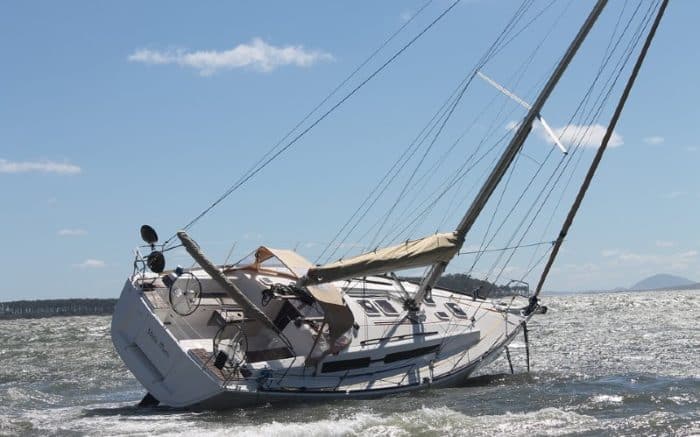
Words and phrase origins are often steeped in myth, legend, and outright hoaxes. A lot of terms that allege to come from nautical origins are actually not nautical at all. You’ll find many websites that claim these stories as true origins. It’s always good to do a little extra research just to be sure. None of these terms and phrases are actually nautical at all.
Above Board: we use this term today to mean something that is honest or honorable. Some people claim it has a nautical origin. That a crew that stayed on deck was honest and, literally, above board. But if they were pirates they might hide below deck. This is not true, however, and the term traces its origins to gambling, not piracy.
As the Crow Flies: A popular story relating to this term is that vessels had crows in cages on board and would release one to see what direction it flew and then follow it to land. There is no evidence that this ever happened, however. Keeping birds alive in a cage would have been difficult, especially crows since they will fight each other.
Brass Monkey: A popular story is that pirate ships used to call the brass trays that held cannonballs brass monkeys. If it got cold enough, the metal would contract and the balls would fall off. However, that’s not actually true. Sailors never actually used the term “monkey” or “brass monkey” to describe anything on a ship. Also, cannonballs were never stored up on deck.
Buoyancy Operated Aquatic Transport: Ever heard this as the origin of the word “boat?” It’s not. That’s from a cartoon.
Cat out of the Bag: When you let the cat out of the bag, you reveal a secret. Some websites claim this has a nautical origin. The story goes that a sailor would be punished on board with a whip called a cat-o-nine tails. The whip was kept in a bag so to let the cat out of the bag meant something bad was happening. However, there is no evidence that this was ever used in a nautical context.
Clean Slate : People attribute this, meaning a fresh start, to sailors very often. However, the idea of a clean slate is literally as old as slates themselves. The Ancient Greeks had a concept called “tabula rasa” in philosophy which essentially translates to clean slate. Schools used to use chalk and slate before paper notebooks and every day those slates had to be cleaned. The phrase does not have any notable link to nautical history.
The Devil To Pay: This is a fun one that is often explained wrong. On a ship, the devil referred to the seam of the hull at deck level. Word is that this was the hardest of all seams to caulk, hence calling it the devil. The devil to pay meant caulking that seam. However, that is not the phrase origin. It looks more like sailors took the already existing phrase and used it to describe what they were doing. The true phrase predates nautical use by over 100 years. There is a lot of history of terms relating to people making bargains with the devil that require payment, including the very famous story of Faust.
Posh : A word used mostly in England to describe something fancy or expensive. There’s a story that it comes from ships that travelled from Britain to Boston. The rich customers were put in rooms labelled “port out, starboard home” as an instruction on where to store their luggage so it wouldn’t be ruined by the sun. This, however, is untrue.
Square Meal: This is another popular one from folk etymology. The story goes that sailors were fed on square plates thus the origin of square meal. And it’s true that the Royal Navy used square plates. However, the phrase was never recorded anywhere in naval history. But the word “square” meaning “good” or “proper” or “trustworthy” dates back hundreds of years. The first usage of “square meal” in print comes from US sources in advertisements.
The Whole Nine Yards: There are many supposed origins of this phrase, but one claims to be nautical. It suggests that square-rigged vessels with three sails on three masts had “the whole nine yards” out when all sails were up. However, there is no evidence to support this and it also doesn’t make much sense. Not all vessels had three sails or three masts.
Frequently Asked Questions
What is the back of a boat called.
The back section of a boat is referred to as the aft, while the actual back of a boat is known as the stern.
Where is the stern of a boat?
The stern of a boat is the back of a boat. In nautical terms, the bow is the front of a boat, and the stern is the rear.
Where is a boat’s gunwhale located?
A boat’s gunwhale is the top section of the boat’s sides. In ship terminology, a gunwhale definition is the upper edges of the side of boat.
My grandfather first took me fishing when I was too young to actually hold up a rod on my own. As an avid camper, hiker, and nature enthusiast I'm always looking for a new adventure.
Categories : nauticalknowhow
Lucia Alonso on March 29, 2020
Tack: This term has two distinct meanings, both of them very important. As a verb, to tack is to change direction by turning the bow of the boat through the wind. As a noun, your tack is the course you are on relative to the wind. For example, if the wind is blowing over the port side, you are on a port tack. If it s blowing over the starboard side, you re on a you guessed it starboard tack.
Joe H. on April 12, 2023
The tack of a sail refers to the bottom forward attachment point on a (Bermuda Rig/Marconi Rig/Gaff Rig) sail attached directly to the mast. Depending which sail type being used the top attachment point may be called the head or the peak, the bottom attachment point at the mast is called the tack , and the furthest back attachment point is called the clew.
kathy fuller on June 21, 2020
Is the sign SCREWROOM really used on a boat?
John Sinnott on January 6, 2024
Kathy, A bit late. There are some ribald terms used colloquially such as drilling platform or screwroom but theses are not accepted as standard nautical terminology.
Cynthia Fuller on March 24, 2022
What is the term for piling rope on deck in the shape of a figure eight?
Tony H on June 7, 2022
The pass thru hole , on some vessels, for a Line to pass thru to tie to an inboard cleat, is called?
Jack Ducan on February 28, 2023
The word wale in gunwale was used to refer to the upper plank on the boat. The plank used for the wale was a lot thicker than any regular planking as it was there to lessen the damage to the vessel and people.
Leave a Reply Cancel reply
Your email address will not be published. Required fields are marked *
Save my name, email, and website in this browser for the next time I comment.
More in nauticalknowhow

How to Tie a Boat to a Dock

How to Clean a Boat Cover

Everything You Need to Know About Your Boat’s Bilge Pump

4 Ways to Tie Your Boat Shoes

The People’s Poncho Review and Ratings

Oru Lake Kayak Review

What Is A Gunwale?

131 of the Best Hawaiian Boat Names

167 Patriotic Boat Names
About boatsafe.
Established in 1998, BoatSafe is your independent guide into the world of boating, fishing, and watersports. We provide expert insights and detailed guides to help you find products tailored to your needs and budget.
Contact Boatsafe
- Address: 4021 West Walnut Street. Rogers, AR 72756
- Phone: (479)339-4795
- Email: [email protected]
Site Navigation
- How We Test
- Corrections Policy
- Privacy Policy
- Terms & Conditions
- Editorial Policy
- Affiliate Disclosure
Our Reviews

All content is © Copyright 2024. All rights reserved.

IMAGES
COMMENTS
Draft. Boat's draft is the distance from the water surface to the deepest point of the boat. In other words, the draft is the minimum water depth you can go to and not scrape your hull or keel. Better double this number when sailing, just to be safe, as hitting the seabed can have disastrous consequences.
Five of the most basic sailing terms that you should know are as follows: Aft - the back of a sailboat. Bow - the front of a sailboat. Port - the left-hand side of a sailboat. Starboard - the right-hand side of a sailboat. Leeward - the direction where the wind is blowing towards. There are many other sailing terms.
Stern - The back of the boat. Tack - The direction of a boat when it is sailing upwind. Throttle - The control used to increase or decrease engine speed. Tiller - A handle or lever used to steer a boat. Transom - The flat, vertical surface at the back of the boat where the outboard motor is mounted.
20 Sailing & Sailboat Terms. Within boating, sailing has its own specific vernacular. You'll want to understand it before you step aboard a sailboat to help crew or when taking a lesson. Apparent wind - the combination of true wind and the motion of the boat at the time. It's the wind you feel onboard.
Salon or Saloon - Both terms mean the largest enclosed, common area of a yacht (essentially the "living room" in the terms of a land-based home). Most modern boaters use the term salon to avoid confusing it with a bar found in the old west. Old salts and those who sail with the wind prefer the old-school term, saloon.
Here are the key sailing terms you'll want to know as you begin learning to sail! Port: Facing forward, this is anything to the left of the boat. When you're onboard, you can use this term pretty much any time you would normally say "left.". Starboard: Facing forward, this is anything to the right of the boat.
We have put together a comprehensive list of essential sailing terms to enhance your nautical knowledge. Delving into diverse areas such as meteorology, navigation, and boat equipment, our glossary covers sail types, boat components, and crucial units of measurement and abbreviations that every sailor should be familiar with.
Swing: The circular motion of an anchored boat around it's anchor due to wind and water movement. Tack: The forward lower corner of a sail. Tacking: Turning the boat across the direction the wind is coming from to change course direction. This causes the sails to travel to the other side of the boat.
Dead downwind - Sailing in a direction straight downwind. Deck - The mostly flat area on top of the boat. De-power - Reducing the power in the sails by luffing, easing the sheets, or stalling. Dinghy - A small sailboat or rowboat. Displacement - The weight of the boat; therefore the amount of water that it displaces.
Close-Hauled. Sailing as close to the wind as possible, with the sail set at a sharp angle to the boat. Beam Reach. Sailing perpendicular to the wind, with the sail set at a right angle to the boat. Broad Reach. Sailing with the wind at a diagonal angle behind the boat, with the sail angled away from the boat. Running.
Docking and Mooring Terms Docking a boat is an important skill all boaters must learn. If you're new to boating and don't know a spring line from a stern line, you should read Boating Tips: Tips for Easier Docking, Five Docking Disasters: Don't Let This Happen to You!, and Tying Up Boats: Mooring Basics. In the meantime, you can browse ...
M/Y: commonly used in yachting to indicate a Motor Yacht. S/Y: commonly used in yachting to indicate a Sailing Yacht. Under Way: when the yacht is in motion. Watch: A division of crew into shifts. Weigh: To raise the anchor. The amount of terms you have to get used to may seem overwhelming at first, but you'll very soon get to grips with them!
A sailing vessel or sailing ship is any marine craft that uses sails as its primary means for propulsion. The left side of the boat when facing forward (toward the bow) is known as the "port side," and the right side is the "starboard side.". Remembering these terms is crucial for identifying directions on the boat's deck and when ...
Beam: The widest part of a boat. 8. Berth: The bed on a boat; also a slip in a marina. 9. Bilge: The lowest part of a boat's interior hull. 10. Binnacle: A casing on the deck that holds the ship's compass. 11. Boom: The horizontal pole extending from the mast to hold the bottom of a sail.
The direction and speed of the wind as felt in a moving boat - the way it 'appears". Astern. The direction toward or beyond the back of the boat (stern). Athwartships. Perpendicular to the yacht's centerline. An 'athwartships berth," means the bed is parallel to the yacht's sides instead of to its bow and stern.
Knowing some basic nautical terms is vital for safety, effective communication, and mastering the art of boating and sailing, whether you're a seasoned sailor or a novice. In this article, we've gathered 500+ nautical terms to cover general boating and sailing jargon. Enhance your knowledge and sail with confidence!
Sailing downwind off to the port or starboard side. Think of a clock face - if the wind is blowing from 12 o'clock, sailing at between 4-5 o'clock or between 7-8 o'clock would be a broad reach. By the Lee: Sailing downwind with the mainsail remaining on the same side of the boat that the wind is hitting.
The tack is attached to the bow. The clew is attached to the jib sheets that control the shape of then when you set the sail. To get the sail up, you haul on the jib halyard that is attached to the head of the sail. The front edge of the sail is called the luff. By tightening the jib halyard you tighten the luff.
By Kanika from SamBoat - March 9, 2022. Basic sailing terms are essential for safe and appropriate sailing. Knowing how to use these terms are key to good communication which will allow you to better understand what the situation is onboard. Even if using these terms might sound corny, they have been around for centuries and using them ...
Welcome to Rubicon 3 Adventure's guide to sailing terms! Whether you're a seasoned sailor or new to the world of sailing and looking to start some sailing lessons and gain a Competent Crew certificate, understanding the language of the sea is crucial. Knowing the basic sailing terms and phrases is an essential skill for sailors to communicate effectively with each other.
Read Next: Beginner Sailing Tips. 4. Starboard. Starboard is always the right-hand side of the boat when you are facing the bow. Because "right" and "left" can become confusing sailing terms when used out in the open waters, starboard defines the right-hand side of the boat as it relates to the bow or front. 5. Leeward.
The skill of sailing close to the wind, also known as beating. Clew. The lower, aft corner of the sail where the leech and foot meet. Close Reach. The point where you're sailing between the beam reach and the close-hauled or when the wind blows toward the forward of the beam. Course. The direction that you steer the vessel in degrees.
YACHT - A pleasure vessel, a pleasure boat; in American usage the idea of size and luxury is conveyed, either sail or power. YAW - To swing or steer off course, as when running with a quartering sea. Boating Slang. Now that you know the basic boating terms, what about talking like a sailor. You'll notice these are two very distinct things.